
2017 VOLUME 29



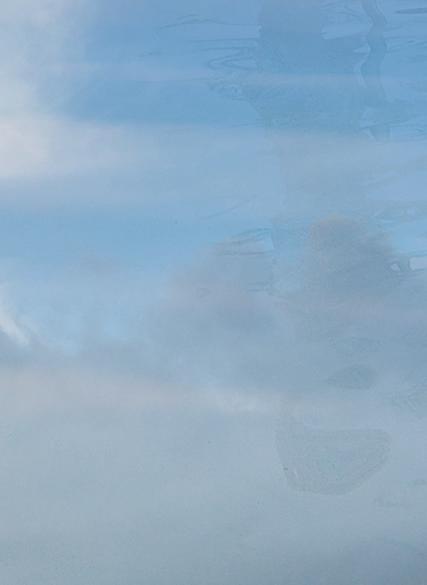



Obtain the Property Report required by Federal Law and read it before signing anything. No Federal or State agency has endorsed or judged the merits of value, if any, of this property. This is not intended to be an offer to sell nor a solicitation of offer to buy real estate in any jurisdiction where prohibited by law. This offer is made pursuant to the New York State Department of Law’s Simplified Procedure for Homeowners Associations with a De Minimis Cooperative Interest (CPS-7). The CPS-7 application (File No. HO16-0007) and related documents may be obtained from the sponsor. This project is registered with the State of New Jersey Department of Banking and Insurance Real Estate Commission. Obtain and read the NJ Public Offering Statement before signing anything (NJ Reg#16-15-0012). AN AFFILIATE OF KIAWAH PARTNERS. TOP 5 PLACES TO BUY A SECOND HOME - Barrons, 2017 BECAUSE TOMORROW HAPPENS IN THE BLINK OF AN EYE KIAWAHISLAND.COM 866.554.2924




For generations We Build It As If It Were Our Own. Buffi ngtonHomes.com 843.768.8525
Photo: Newport653
Photo: Newport653
Photo: Newport653
Photo: Newport653

MT. PLEASANT 695 COLEMAN BLVD. 843-849-0711 CHARLESTON 1290 SAM RITTENBERG BLVD. 843-571-5142 KI AWAH 420 FRESHFIELDS DRIVE 843-768-4 246 FURNITURE RUGS ACCESSORIES LIGHTING FABRICS BEDDING OUTDOOR FURNITURE DESIGN SERVICES
To design, build, or renovate a home, the team you surround yourself with is just as important as the materials. Actually, it means everything. Dolphin Architects & Builders starts the process the right way — with listening and conversation. You’ll get to know us, and most importantly, we’ll get to know you. For more than 27 years, we’ve created homes with only our clients and the highest standards in mind. Because in the end, it’s your home.
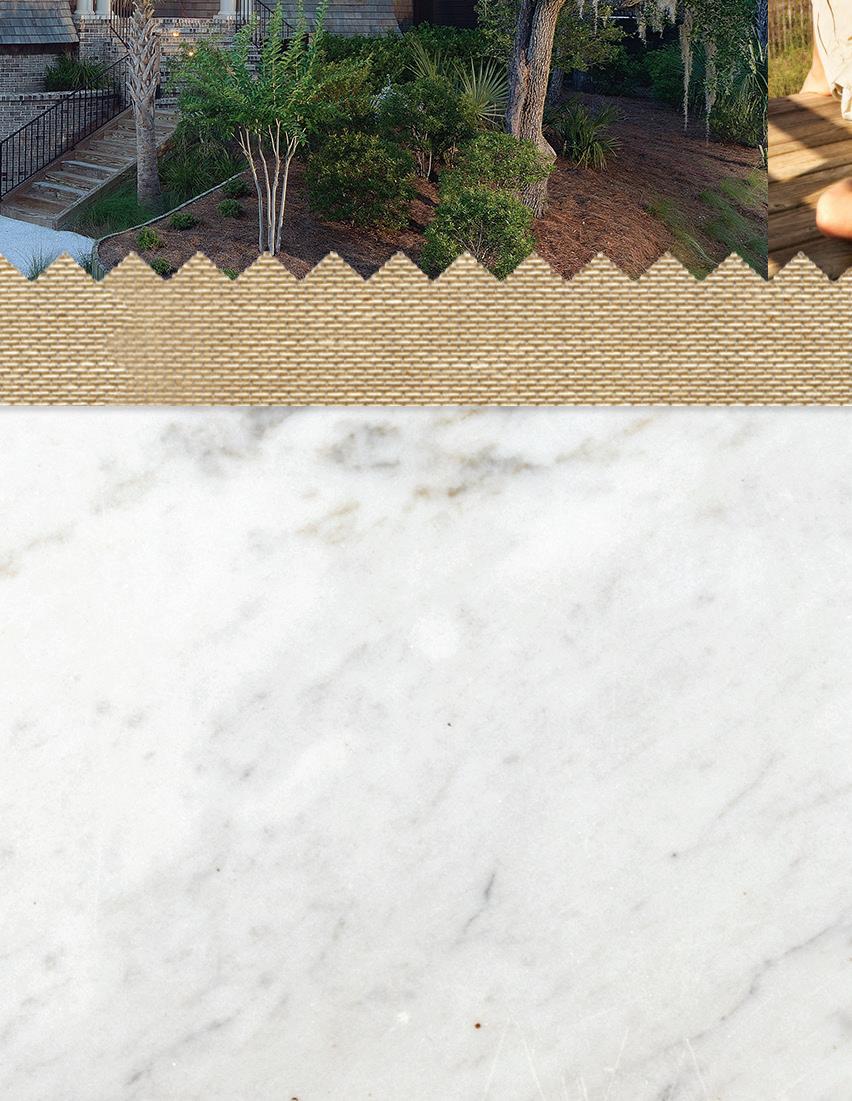






DolphinDesignBuild.com 843.768.2404






NOW PROUDLY OFFERING PROPERTY MANAGEMENT SERVICES – CALL FOR DETAILS
Owner, Dolphin Architects & Builders
It’s Your Home.
EXECUTIVE EDITOR & DESIGN
Hailey Wist
COPY EDITOR
Sunny Gray
PHOTO EDITOR
Nathan Durfee
TO SUBSCRIBE kiawahlegends.com
SPECIAL THANKS
Melanie Birch
Peter Birch
Alexandra Brooks
Beau Brooks
Jimmy Brooks
Kathy Brooks
Lanier Brooks
Blanche Brumley
Frank Brumley
Cyrus Buffum
Deborah Cardenas
Jack Case
Tom Colicchio
Lucinda Detrich
Bob Doran
Tracy Doran
Christine Dorrestein
Brenda Falls
Paige Feigley
Ann Gridley
Laine Hester
Paul Hinchcliff
Bryan Hunter
Lenny Kohlmayer
Kimball Kraus
Celeste Marceca
Christine Marley
Tammy McAdory
Rick McClure
Susie McMonagle
CONTRIBUTORS
Christina Rae Butler
Joel Caldwell
Pamela Cohen
Stephanie Hunt
Olivia Rae James
Sandy Lang
Melissa Toms
Charlotte Zacharkiw
Dale Mercer
Rachel Moore
Michael Owens
Ray Pantlik
Amy Pastre
Chris Randolph
Dan Reinberg
Keith Richardson
Courtney Rowson
Lynne Sager
Kiawah Island Legends is a publication of Kiawah Island Publishing, Inc., an affiliate of Kiawah Island Real Estate. Copyright 2017.

Steve Sager
Chuck Schaffer
Tina Schell
Chris Shope
Bonnie Singletary
Jim Stuckey
Blake Suarez
Cory Sullivan
Diane Supple
Peggy Watkins
All rights reserved in all countries. Contents may not be reproduced in any manner without the written permission of Kiawah Island Publishing, Inc. Kiawah Island Publishing, Inc. does not necessarily agree with the viewpoints expressed by authors of articles or advertising copy.
kiawahlegends.com
6 LEGENDS MAGAZINE 2017 NO 29
, , . LEGENDS . , . , LEGENDS .

OWNER PROFILES
LYNNE
20
GIVING THANKS
Get a glimpse into the Brooks family tradition on the banks of the Kiawah River.
30
ARTIST PROFILE
Plein air painter Rick McClure comes to Kiawah Island and shares his philosophies on contrast and simplicity.

40
OFF TO THE RACES
The Carolina Marsh Tackies race Kiawah at the inaugural 2017 Kiawah Cup.
52
CONSIDER THE OYSTER
Boutique oysters are all the rage in the culinary center of South Carolina.

64
THE LEGEND OF FENWICK HALL
This historic plantation has long been the topic of speculation and great mystery. Dive into the colorful past of a Lowcountry relic.

76
EAGLETS BELOVED
Magic unfolds on a spring day: the Cassique eaglets and the birders who love them.
8 LEGENDS MAGAZINE 2017 NO 29
16
& STEVE SAGER
SUSIE M c MONAGLE & DAN REINBERG
94 30 52
86
CHERRYWOOD BBQ
In the great tradition of genuine Southern barbecue, purist Keith Richardson shares his tried-and-true recipes.
94
THE MARKSWOMEN
Spend a morning shooting skeet and talking guns with the women who make up the Charleston Annies.
104
GARDEN & GUN + KIAWAH ISLAND
The double threat of the South celebrates a decade of successes on a spring evening in New York City.
114
DIARY OF A KIAWAH PIONEER | CHAPTER FIVE

Explore island fauna in the fifth install ment of Blanche Brumley’s extraordinary diary.
126
THE ISLAND AND THE BEHOLDER
Kiawah Island residents show their love of place through the lens, catching misty sunrises, wild animals at play, and the natural beauty of this Sea Island.
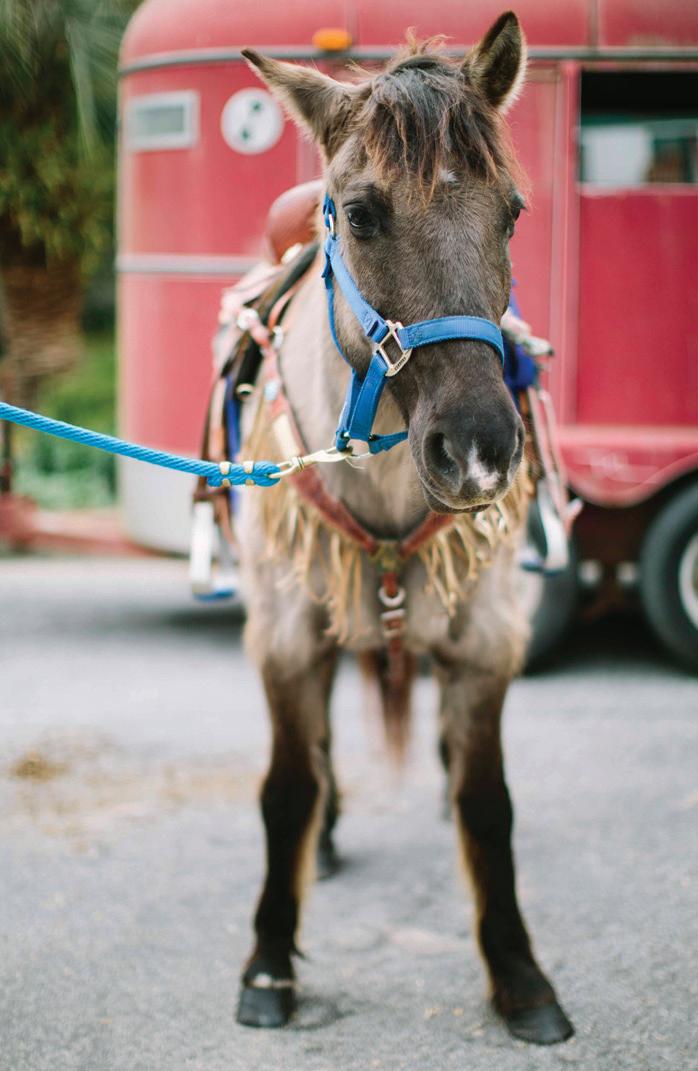

ON THE COVER: Lowcountry Oysters GOOD WORKS: BARRIER ISLAND FREE MEDICAL CLINIC | 146 ON & ABOUT KIAWAH | 150 INSIDER’S CORNER: JIM STUCKEY & DALE MERCER | 136 COUGAR POINT REFINED | 140 END NOTE | 159
20 40 64

FERGUSONSHOWROOMS COM CHARLESTON 4711 RIVERS AVE (843) 747-6301 BLUFFTON 114 BLUFFTON RD (843) 815-6080 ©2017 Ferguson Enterprises, Inc. 0717 535958
YOUR HOME SAYS A LOT ABOUT YOU. WE’RE HERE TO LISTEN. Your home is a reflection of you. Ferguson’s product experts are here to listen to every detail of your vision, and we’ll work alongside you and your designer, builder or remodeler to bring it to life. Our product experts will help you find the perfect products from the finest bath, kitchen and lighting brands in the world. Request an appointment with your own personal Ferguson product expert and let us discover the possibilities for your next project. Visit fergusonshowrooms.com to get started.
Seaward Chandelier
“Sliding Spaces“ blanket, woven of kid mohair and silk.
www.catharinamende.com

Contributors
Olivia Rae James is a wedding and editorial photographer living in Charleston, SC. Recent weddings have taken her to the English countryside, Sonoma, Aspen, and Harbour Island. Editorial clients include Food & Wine, Garden & Gun, and Monocle, among others.

It was incredible to be out on the water with Cyrus and Blake [Seaborn Oyster Co.], watching them harvest oysters (sustainably), one by one— tedious work by most standards, but it became immediately evident how much they love the process
Raised on barbecue in North Carolina, Stephanie has refined her oyster-shucking technique after twenty-four years in the Lowcountry. She is a regular contributor to Legends, and she writes features, profiles, and travel stories for numerous publications, including Charleston magazine, Coastal Living, and U.S. News & World Report

Boating out to St. Jude Farms’ gorgeous “fields” then eating just-harvested oysters still wet from the marsh, in July no less, is something I can definitely get used to.
Melissa is a lifestyle and wedding photographer. She lives in Charleston but can often be found in Asheville fly fishing or hiking in the mountains. Melissa loves capturing natural light and candid moments.

Joel Caldwell is an expedition photographer and writer based in New York. He uses outdoor adventure to tell conservation stories to a wider audience. Lately he’s been working in Central Asia, documenting snow leopard conservation. He has been published in National Geographic Voices, Iron & Air, and bioGraphic, among others.
Photographing Marsh Tackies sprinting along the beach was a beautiful combination of some of my favorite things: movement, culture, and atmosphere.

12 LEGENDS MAGAZINE 2017 NO 29
OLIVIA RAE JAMES | PHOTOGRAPHER
STEPHANIE HUNT | WRITER
JOEL CALDWELL | PHOTOGRAPHER
MELISSA TOMS | PHOTOGRAPHER
Charleston summers and eating oysters go hand in hand. Getting a behind-the-scenes look at St. Jude Farms was not only fascinating but beautiful! Whizzing on a boat through the ACE Basin to their oyster farm, tasting a fresh Salty Gal oyster—there’s nothing better!
International award-winning photographer and biologist Pamela Cohen owns Prima Photography. After studying with National Geographic photographers, her career has bloomed as a lecturer, teacher, writer, and book illustrator. In August 2016, she was a semifinalist in America’s Top Photographer. Pamela is a resident artist at Martin Gallery in Charleston.



I knew it would be a challenge to photograph [the eaglet], even with my gigantic lenses. But, as demanding as it was, I returned day after day for an entire month, never bored. It was a true labor of love.
Christina Butler is a professor at the American College of the Building Arts as well as an adjunct professor for the College of Charleston’s historic preservation department. Christina is the owner of Butler Preservation L.C., specializing in historic property research, preservation, National Register nominations, and restoration projects. Christina lives in Charleston with her husband, historian Nic Butler.
The stories of Fenwick Hall’s past occupants were the most intriguing aspect of my research, especially the personal stories and conflicts between members of the Fenwick Family during the American Revolution.
Writer Sandy Lang’s recent assignments include copywriting for a California winemaker and a Southern artist collective, and writing a magazine feature about a rock musicianturned-hops-farmer in Maine. Sandy also often collaborates with SDCO on online and print projects, and she posts online at tinysuitcase. com.

It was a terrific experience to meet the Charleston Annies group at the Kiawah Island Sporting Club. I can almost still smell the powder and pine trees, and I hope to shoot with everyone soon.
Charlotte Zacharkiw is the owner of Charlotte Elizabeth Photographer. She recently finished a year-long project entitled “Artists in their Spaces” for the Charleston Artist Collective. Charlotte lives in Mount Pleasant and can usually be spotted riding her cargo bike with her two young children in tow.
LEGENDS MAGAZINE 2017 NO 29 13
PAMELA COHEN | PHOTOGRAPHER
CHRISTINA RAE BUTLER | WRITER
SANDY LANG | WRITER
CHARLOTTE ZACHARKIW | PHOTOGRAPHER
Photographing the member events is something I look forward to year after year. What’s not to love about events where everyone is happy, making the most of their time with friends and family, and enjoying the beautiful Kiawah environment?
I came to the Lowcountry in 2005, a California girl drawn to the romance of Spanish moss and the allure of the Southern verandah. Over a decade later, so much is the same about Charleston: the great traditions of barbecue (pg. 86) and skeet shooting (pg. 94), the timehonored oyster roast (pg. 20) and the Carolina Marsh Tacky (pg. 40). But there’s a new element here too. Charleston and the Lowcountry are playing on a national scale, and you can feel it. We have James Beard Award winners and world-class golf, urbane design and illustrious art. Rooted in a unique and rich tradition, a relevant cultural juggernaut has emerged.

On a cold evening in New York (pg. 104), I stood amongst Northerners and Southerners alike, celebrating the South and what Charleston and Kiawah Island have become to a national audience. It reminded me, after nearly seven years of creating Legends Magazine, what drew me here in the first place, the lure of the South.
I feel immense pride for the Lowcountry and this beautiful island. Kiawah has been built with such integrity and vision. It is the unadulterated, daily embodiment of everything we all love about the Carolina Sea Islands. It is no wonder the world has taken notice.
WALKING THE STREETS OF CHARLESTON IN THE LATE AFTERNOONS OF AUGUST WAS LIKE WALKING THROUGH GAUZE OR INHALING DAMAGED SILK.

14 LEGENDS MAGAZINE 2017 NO 29
EDITOR’S LETTER
— PAT CONROY
HAILEY WIST

Exclusively Brokered by Red Ledges Realty, LLC. Obtain the Property Report required by federal law and read it before signing anything. No federal agency has judged the merits or value, if any, of this property. All descriptions, depictions, and renderings are provided solely for illustrative purpose and are subject to change. ©2017 Red Ledges Land Development, Inc. Golf • Ski • Tennis • Equestrian • Wellness PARK CITY • HEBER VALLEY 877.733.5334 • RedLedges.com With luxury residences situated minutes from Park City and Heber Valley, Utah, Red Ledges stands at the threshold of outdoor adventure on a grand scale. Hike, bike, kayak, fish, ride – or golf on a Golf Magazine “Best New Private Course,” or ski where Olympians competed in 2002 – in and around a private landscape of ridges, valleys, and mountain views. Traveling here is easy. Buying here is even easier. Join the families building their dream getaway in the most successful private community in the Park City region.
Rockies WITH AN EASIER CLIMB As the Rocky Mountains’ premier four-season private community, Red Ledges offers the ideal balance of convenience, privacy, amenities, and a lifestyle to engage the whole family.
The Best of the





Obtain the Property Report required by Federal law and read it before signing anything. No Federal agency has judged the merits or value, if any, of this property. Void where prohibited by law. An offering statement has been filed with the Department of State of the State of New York. A copy of the offering statement is available, upon request, from the subdivider. The filing of the verified statement and offering statement with the Department of State of the State of New York does not constitute approval of the sale or lease or offer for sale or lease by the Department of State or any officer thereof, or that the Department of State has in any way passed upon the merits of such offering. This project is registered with the New Jersey Real Estate Commission. Registration does not constitute an endorsement of the merits or value of the project. Obtain and read the NJ Public Offering Statement and read it before signing anything. (NJ Reg #89/15-175). AN AFFILIATE OF KIAWAH PARTNERS 866.554.2924 • KiawahIsland.com MAIN GATE: 1 Kiawah Island Parkway | SANCTUARY: off main lobby, near Jasmine Porch FRESHFIELDS VILLAGE: 390 Freshfields Drive | HISTORIC CHARLESTON: 12 Queen Street THESE FOUR DOORS ARE YOUR GATEWAY TO THE KIAWAH ISLAND LIFESTYLE. KIAWAH’S MAIN GATE SANCTUARY HOTEL FRESHFIELDS VILLAGE HISTORIC CHARLESTON Kiawah Island Real Estate is the trusted resource for people seeking the Kiawah lifestyle. More than 10,000 Kiawah Island buyers and sellers have walked through these doors because they know that our 30 real estate sales and marketing professionals represent the best of what Kiawah Island has to offer.
The Southeastern Wildlife Exposition has been embracing art and the sporting life for 35 years. As a time tested tradition for art collectors, wildlife enthusiasts and generations of loyal attendees, SEWE honors the beauty of both wildlife and nature. Join us for another anticipated edition, where we'll gather the best in show - from world-renowned artists, sculptors and exhibitors to wildly popular entertainers and animal experts.
Celebrate the art of tradition this February and welcome SEWE's heritage into your home.



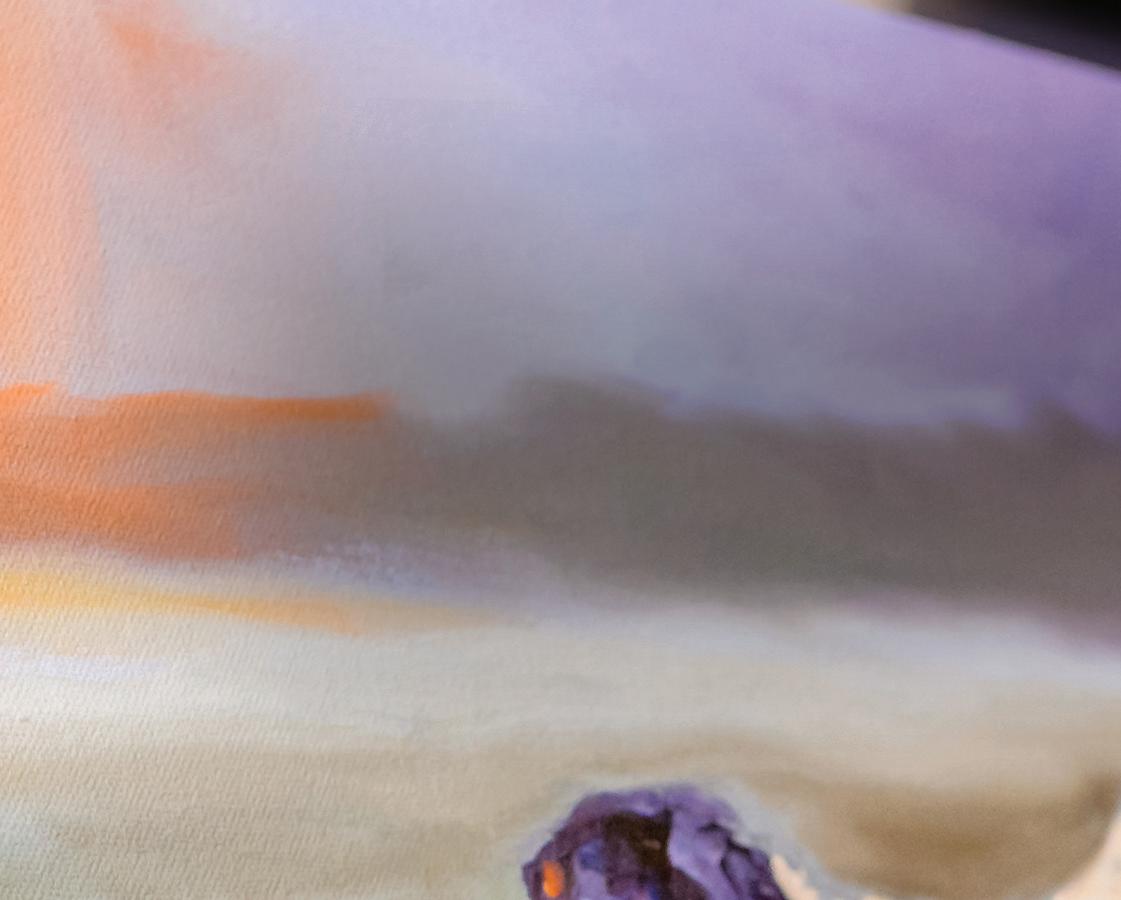

 From BOSTON, MASSACHUSETTS LYNNE & STEVE SAGER Property Owners
From BOSTON, MASSACHUSETTS LYNNE & STEVE SAGER Property Owners
Q Where are you from?
A Lynne: Massachusetts, south of Boston.
Steve: We moved to the island in ’98 and bought a house. Our first trip down, we put an offer in and it was accepted before we left! Lynne fell in love with it instantly.
Q What were your first impressions?
A Steve: That was when the Old Inn was over here. There were so many magical things. We have a little tradition when we stay in a hotel: I always get up and get the first cup of coffee and bring it back to the room. So I brought the cup of coffee back to the room, and I look out and see a doe licking her fawn, her newborn fawn! I woke up Lynne and we opened the curtains very gently, and they didn’t go anywhere. After that we went by Egret Pond, and there were a billion egrets there. Lynne said, I love this place. Let’s stay here.
Lynne: Absolutely fell in love with it, and still am nineteen years later. The beach was a big draw, too.
Q Had you spent any time here prior to that?
A Steve: I was discharged from the Navy here back in ’69.
Lynne: I moved here full time in 2002, and we started renovations on our first house. Steve was still working and coming back and forth from Massachusetts. Then thirteen years ago he had an aneurism.
Steve: She saved my life.
Lynne: So that forced his retirement. And our oldest son, Kirk, took over the business in Massachusetts. So that’s when Steve officially moved down here full time. I have to say, our Kiawah Island Club friends rallied around Steve. They made it “easy” for him to still be able to play golf with them. I will be eternally grateful for that. The Club is truly special!
Q When did you move into this house?
A Steve: Well, a few years later, Lynne said, I have one complaint. You built all these buildings—hospitals, telecommunications buildings—always new for everybody, and what did I ever get? Renovate, renovate, renovate! So I got my residential builder’s license, and I built this house.
Q Wow! So you’re a builder?
A Steve: Not anymore. I’m retired. I’m a woodworker, and I do a lot of woodworking for people on the island
Lynne: Like trophy bases and tables and shelves.
Steve: That table up against the wall has relief carving. She gives me a carving project to make sure I can still use my power tools after the aneurism! Nutty girl.
Lynne: Steve does a lot of volunteer maintenance work at the Holy Spirit Catholic Church, too.
Q Are you both golfers?
Steve: Yes, avid. We’re both pretty poor! We used to be a lot better back in our younger days.
Q What’s your life like here?
A Lynne: Golf is definitely up there. I have a Thursday golf group and a Friday golf group. And for me, Turtle Patrol. And now I’m in charge of it! For several years I was on the committee and a zone captain. So when Joe Pezzullo announced his retirement last year, I threw my hat in the ring, and here we are! We had a total of 204 volunteers this past year. I’m also on the Town’s Environmental Committee, and I sing in the Holy Spirit Catholic Church choir.
Steve: I get involved in a lot of veteran stuff, as an old vet myself. I’m involved with the VA hospital. I’m working for the organization that is building the Harbour House on Wentworth Street for the families of vets. I suggested they create a 501(c)(3). I got people together and collected money. I asked guys to donate to put a foursome of vets or active duty [members] together for a tournament on Kiawah. We filled the course all four years! It’s improved every year. I had sixty-three vets and active duty playing this year, including four paramobiles and a bunch of guys who are amputees. [We secured] over $30,000 worth of sponsorships. We try to pick vets who really need it. It’s been so successful that this year the Fisher House Foundation has taken it over, and the land now belongs to the VA.
Q Amazing. You really give back.
A Steve: Giving back is what it’s all about. Lynne: We love this place.
Q How many kids do you have?
A Lynne: Four. Three boys and a girl. And we have four grandchildren. The grandkids just love Turtle Patrol, and they’re very serious about it. I’ve been training them for a long, long time!
LEGENDS MAGAZINE 2017 NO 29 19

Q Where are you two from?
A Susie: Littleton, Colorado. Then I lived in New York, and then I ended up in Chicago. And then we met. Dan: We live in Evanston—the first suburb north of Chicago—and I grew up in the northern suburbs of Chicago. We’ve been there, boy, for twenty-five years!
Q How did you meet?
A Susie: At our boys’ baseball game. Elliot and Matt were on the same Little League team. We were both going through divorces, and we met and that was kind of it. We have a blended family. We have four boys and two girls!
Q And what do you do?
A Dan: I worked as a federal prosecutor in the U.S. Attorney’s office for many years. Now I’m a healthcare lawyer. I’ve spent the last seventeen years representing large health care providers. I’m at a firm called Polsinelli.
Q And Susie, you’re a star! I’m pretty sure you were in Les Misérables, right?
A Susie: I’m not a star! Six lines on Chicago Med last year [laughs]. I did Broadway and all of that before I met Dan. Now I’ve evolved into doing more community work with theater and performing for kids. Every once in awhile, I’ll have an audition for something and think, Do I care about this anymore? Do I want to be the funny lady in Saturday Night Fever?
Q Yeah, but what a life!
A Susie: I do miss the dressing room talk. Eight shows a week—sitting around, getting ready—it’s like a therapy session. For the first year of our relationship, I was on the road doing Mamma Mia!
Dan: Yeah…ABBA’s not my thing.
Susie: He would come out, and we wouldn’t have any of our kids, and it would be like, OK, we’re in Seattle in our hotel! It was fun.
Dan: Or Kitchener, Canada.
Susie: Yeah, well, Kitchener was kind of a drag.
Q What was it like to see Susie in a show?
A Dan: Well it was a different context, you know? When I grew up, we went to the Chicago Cubs games. We did not go see theater [laughs]. So it was a whole new world.
Susie: But he appreciates it so much!
Dan: Oh, I like the theater. I like going. Although I’ve
seen a lot of bad plays. We go see a lot of friends.
Q How did you find Kiawah?
A Dan: I was in Charleston for a board meeting a few years back, and Susie and I played the Ocean Course. Then the second time we were here, we got a realtor and started looking for houses.
Susie: Did we really buy the next time we came down?
Dan: I’m pretty sure! Susie’s impulsive.
Q So what hit you first?
A Dan: First of all, it’s just beautiful. The island is maintained so perfectly—just driving in and seeing all the crepe myrtles! And then we saw the water, and not just the ocean but also Bass Creek and the dock.
Susie: I thought, Ahhh, this is where I want to have my grandkids learn to swim and build sandcastles! That was a big part of it for me. It’s so family oriented.
Dan: The nature is really unique. When we first looked out to our backyard, there was a bald eagle’s nest in the cypress tree. Every so often, we’ll look out at Bass Creek and see dolphins swimming. It’s pretty spectacular.
Susie: We just fell in love with it! So we closed in September of 2015, and everyone was here for Thanksgiving. It was great.
Q And how do the boys like it?
A Susie: Here’s what they’ve done so far: They took fishing poles down to the dock and caught a crab. Elliot has never fished really, so he’s out there fishin’ and they’ve got music on! Then they go to the Beach Club and hang out with girls. Then they play football on the beach, and they’re out in the waves. Then they play poker at night.
Dan: And they’ve played golf a couple times.
Q How do you like the club?
A Dan: Oh, it’s very nice.
Susie: It’s ridiculous. We were here last year for the Fourth of July. They go all out. I had no idea. Oh my god! It was like an upscale carnival with the kids and the face painting and the donut truck!
Q And you love to golf? Which is your favorite course?
A Dan: It goes back and forth. Now I’d say the River Course. Susie: I like Cassique! They’re so different. That’s the great thing—you’re not playing similar courses. [There are] really different feels to both of them.
LEGENDS MAGAZINE 2017 NO 29 21
From CHICAGO, ILLINOIS DAN REINBERG & SUSIE M c MONAGLE Property Owners
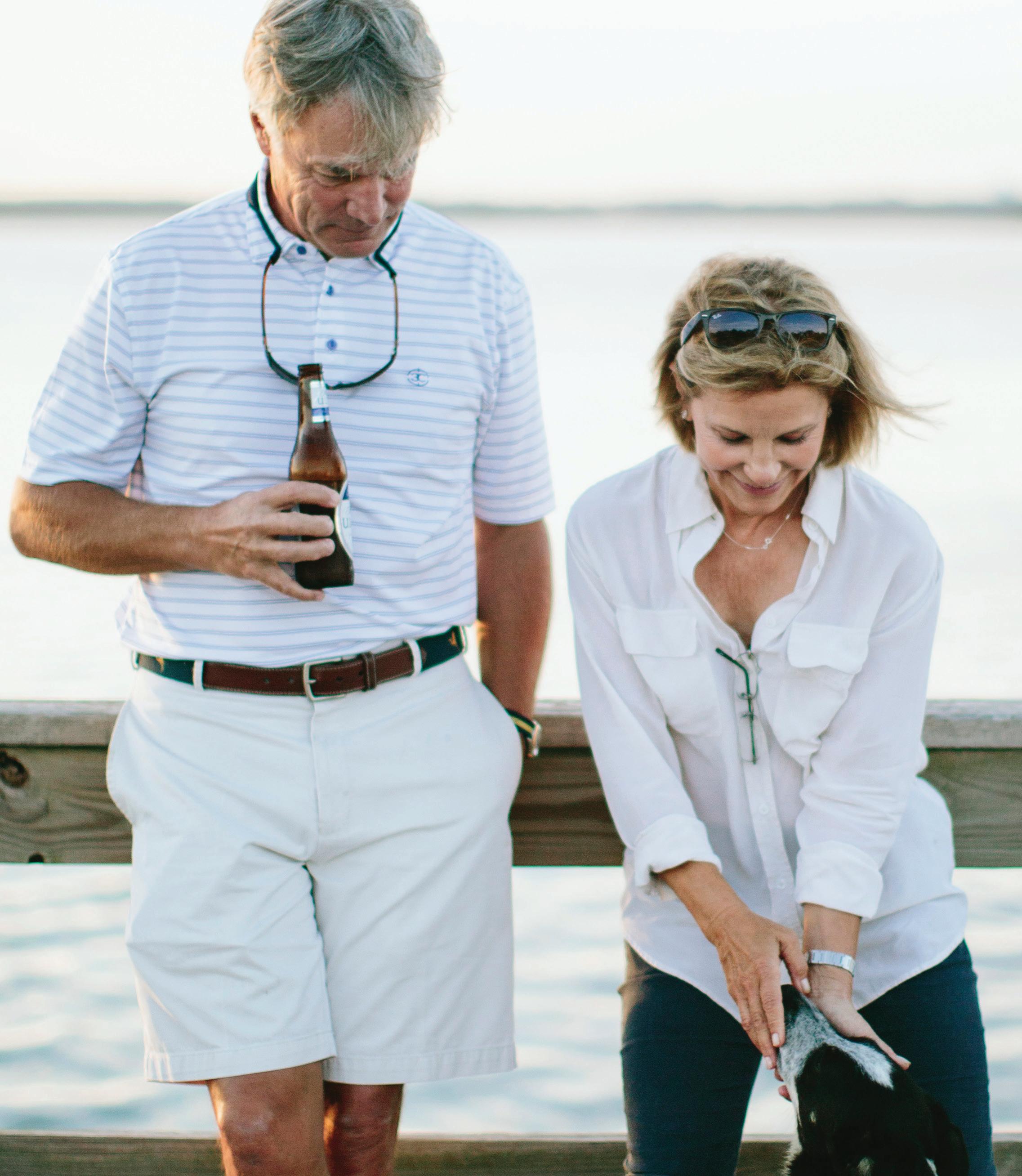
PICTURED HERE: JIMMY & KATHY WITH ANNIE
giving thanks

FAMILY TRADITIONS WITH THE BROOKS FAMILY ON KIAWAH
ISLAND
LEGENDS MAGAZINE 2017 NO 29 23
PHOTOGRAPHY by HAILEY WIST
 LANIER, ALEXANDRA & LIZZY
LANIER, ALEXANDRA & LIZZY
Alexandra
James and I were lucky enough to visit the old cottage in Turtle Beach many times before getting engaged. Whether it was just the two of us, or a long weekend with friends, we always enjoyed strolling the beach, playing golf, and maybe a few too many martinis!
Thanksgiving here has always been big. It’s been a reunion for the whole family on the island. Kathy cooks for days, and Lanier and I are sous chefs. As the family expands, we are so excited for new traditions!
The day after James and I got engaged we flew straight to Kiawah. We spent five days here with all of our best friends. We took engagement pictures at the new house before it was done. It was a monumental time in our lives.
Lanier
Alexandra and I started a tradition two years ago—a midnight swim. Lizzy will be a part of it next year. At midnight we all go out to the beach as a family, and just the girls run in and out of the water. It’s cold. We bring a bottle of Champagne and run in and out. It isn’t the smartest thing, but it’s so fun. I think it will always be something that all the girls do together.
We stay up late, play music too loud, and joke around a lot. We are very close knit but love having friends join in the fun. All my friends love Brooks gatherings as we do. We all have so much going on in our lives with marriages and babies, getting together on the island is becoming even more special.
Kathy
When we started coming here, it was the simplicity of it, the easiness of it. The marshes! The fact that there were oak trees on the beach was fascinating to me. We used to rent a boat and go dolphin watching. It was the first time we’d ever seen the dolphins feeding—running the fish up the beaches. It was amazing.
I remember my first glimpse of the island as you take the corner and cross the Kiawah River. The stunning green and purple grasses in the marshes, the smell of salt, the seabirds working the river. It always makes me catch my breath, no matter how many times I take that turn. And I always thank my lucky stars that I get to live in paradise.
Jimmy
Kathy’s Thanksgivings on Kiawah have become legendary. She is a terrific cook and none of the kids will allow her to change a thing. Her dirty rice might be the best on the planet, and her giblet gravy matches perfectly with Lanier’s amazing mashed potatoes. The boys, including me, are pretty much just eaters and cleaners.
Going from the beach to the river side of the island has been transformative. I love running on the beach but nothing beats the river sunsets that seem to change every night and with every season. The exposed oyster beds at low tide are truly stunning.
LEGENDS MAGAZINE 2017 NO 29 25
Michael
Thanksgiving dinner is always around two o’clock. Beau always sets the table, that’s his thing. Then we eat until we want to die!
If after that, for some reason, somehow, we’re still hungry, uncle Jimmy makes my favorite thing in the entire world: a turkey and butter sandwich. It is delicious. Chunks of butter— it has to be hard butter—salt, pepper, and white meat.
This year we got really big into Rummikub. There’s always some game. Bananagrams is a big one. People revive, everyone rallies, we drink beer, and we play games.
Friday is a sign that Aunt Kathy can never just sit still. That’s my take on it. The hectic nature of Thanksgiving starts all over on Friday morning. I’m usually in the market again, picking up stuff, or I’m making cocktail sauce or something. This year I am on Champagne duty.
I enjoy the oysters. I would love it if there were crawfish too! Being from Louisiana, you know.
Beau
Thanksgiving is more important in our family than Christmas. It’s when we all get to be together.
My dad is from Baltimore, and my mom and siblings are from New Orleans, and I was born in Houston—so we all have different hometowns. So Kiawah is the place that is home for all of us. I have this memory of the best vacation when I was a kid. I was with all of my cousins, riding bikes and swimming in the ocean. I was in my twenties before I realized that it was here! We’ve been coming here a long time.
My favorite part of Thanksgiving is my mom’s dirty rice. She’s from New Orleans, and she has to make it. It’s the best.
Kathy
On Thursday everybody cleans up together. We all love football, so all the TVs are on. It’s what I call controlled chaos. We know what the plan is. We don’t have to stick to it—we just stick around it. People start getting hungry again, and we throw leftovers on the island and go for it.
We wake up on Friday, and everyone takes a walk or goes for a swim. People start coming over around ten thirty or eleven. We bring out the Champagne and the oysters. And now that we have in-laws, they’ve been coming too. Next year we’ll have three sets of in-laws: Alexandra’s family, the Dahls, and Luke’s family, the Pigges. And then Lizzy and Beau are getting married, and that will add the Stegmans.
And the great thing is, when it gets way out of control—when we’re playing games and everyone is yelling at each other—I just go upstairs and go to bed! Every once in a while, I’ll get a clean-up fairy. When I tell you it looked like a bomb went off... it was scary. I was in a plastic suit the next morning ready to clean up. Luke and Lanier had cleaned the whole kitchen! She had no choice! He’s a good influence. I was like, I LOVE YOU LUKE!
26 LEGENDS MAGAZINE 2017 NO 29
This year we got really big into Rummikub. There’s always some game. Bananagrams is a big one. People revive, everyone rallys, we drink beer, and we play games.




LEGENDS MAGAZINE 2017 NO 29 27
TOP RIGHT: BEAU & LIZZY | BOTTOM LEFT: JIMMY

Kathy
Glen Gardner was the first person I hired when we decided to build on the river lot. It was important that the interiors flowed seamlessly to the outside, and maybe more important that we bring the outside scene back into the house. He understood my love for Louisiana camellias and gardenias and worked them into the river landscape as if they had always been there.
Lanier gets married December 2 at the house! We’re not going to have to decorate much. Glen is helping me set up, refine, and embellish her wedding, which will take place outside. I will let the river and the trees speak for themselves—that’s decoration enough.
Lanier
It looks like we’re going to do the oyster roast every year. This is the first time we’ve had the space to do it!
It’s a gathering that wouldn’t occur otherwise. I’ve never seen my dad so happy. With the new house and starting a new tradition. Now we have something that will continue to bring us all together.
Jimmy
Having a dock and boats now has changed our island perspective. We love dolphin watching and exploring all the creeks and rivers and boating to Charleston. It has added so much to a place we already loved.
I have repeated many times that I just never get bored with Kiawah. It is constantly presenting us with new and different experiences of beauty, fun, family time, and time with friends.
Alexandra
Every viewpoint on Kiawah is beautiful. It changes with every season. We can always rely on vibrant shades of orange and pink during sunset from our dock. My favorite is fall on the golf course, with that soft lavender hue. I remember when they were just building the house, when we came out and it was sticks and foundation—just looking out and imagining what it was going to be like coming here with family. It’s breathtaking, really.
I grew up as a beach baby, so I love the fact that we will bring the baby here and teach him to love the ocean, enjoy boat rides on the river, and to play golf and tennis.
Michael
I think the best part is when the day starts winding down and you can watch the colors change. You’re eating these oysters that you’re shucking yourself, at this beautiful house in this beautiful place, and then all of the colors change! I have always appreciated that part.
That’s one of the many things about Kiawah that’s so shockingly noticeable, how beautiful it is whether it’s the middle of the day or middle of the night. It’s like another world almost.
You have to force yourself to stop and breathe, and everybody does it. Somehow Aunt Kathy gets you to do that.
LEGENDS MAGAZINE 2017 NO 29 29

Beau
I’m a geologist, so I really appreciate the marshes, everything that coexists in the pluff mud, the oyster beds, the layers of the island.
The house is astounding. I love the spacious rooms. My favorite part is the boardwalk over the wetland. That part of the land is so unique.
The house was really the beginning of a new stage in all our lives. We are all getting married! I am so glad that my parents will get to enjoy this. Lizzy and I will bring our kids here, and it will be home for them too. Lizzy had only been to the area one time and decided that’s where she wanted to get married.

LEGENDS MAGAZINE 2017 NO 29 31
It was the simplicity of it, the easiness of it. The marshes! The fact that there were oak trees on the beach was fascinating to me.
LEFT TO RIGHT: JAMES, ALEXANDRA, KATHY, SI, LIZZY, JIMMY & COLLEEN

WARM
LIGHT RESIDES, EXCERPT | 20” X 24”, OIL ON LINEN
ARTIST IN RESIDENCE Rick McClure
 by HAILEY WIST
by HAILEY WIST
LEGENDS MAGAZINE 2017 NO 29 31
PHOTOGRAPHY and STORY

32 LEGENDS MAGAZINE 2017 NO 29
Rick McClure gestures with his paintbrush, standing comfortably as he speaks to a room of twenty-five. He turns back to the canvas. Scratch scratch scratch. Dark green shapes emerge with a few strokes—the beginning of trees.
You can tell that it’s thin when you can hear that, the brush dragging on the canvas.
Rick was always going to be an artist. At the age of ten, his mother recognized natural talent and signed him up for a lesson with a local painter in his small town in Oklahoma. I only got through one lesson with her before she moved, he remembers. But she took me through the whole process—we even stretched the canvas. The instruction may have been short-lived, but it was enough. Rick started studying on his own, painting regularly. By the age of sixteen, he had a large exhibition at a local bank, oil landscapes not unlike the style he paints today. I was a junior in high school, and the principal’s secretary came down to my classroom and said I needed to call my mother at lunchtime. In that single day, Rick
sold fifteen paintings to a collector and received a paycheck for twenty-five hundred dollars—a lot of money for a high school kid in 1971. Six months later, the woman came back and bought fifteen more paintings.
Rick received an art scholarship at a local college and minored in education. Even with all the talent in the world, living as a working artist isn’t for the faint of heart. So he had a backup plan. He taught studio art and art history for nearly thirty years. But I never stopped painting. I kept it alive, he says. He’d finish his day as a teacher and paint into the night. He knew that at some point he would just paint. He started building a portfolio in the early nineties—awards, exhibitions, and entry into fine art societies. In 1999, he submitted to the Salmagundi Art Club in New York. It was a shot in the dark— artists are allowed one opportunity to apply. I was in my little studio and my cell phone rang. It was a lady with a thick New York accent. He had won their Leila Gardin Sawyer Memorial Award, one of two top awards at the prestigious club. They gave him two days notice, and he scrambled up to New York for the presentation.
LEGENDS MAGAZINE 2017 NO 29 33
Now, I want this green to be an average. If you were out in the marsh blocking in your painting like this, you would want to squint at the color and then put it in a mental blender. Don’t try to paint the darks, don’t try to paint the lights, just average it out.

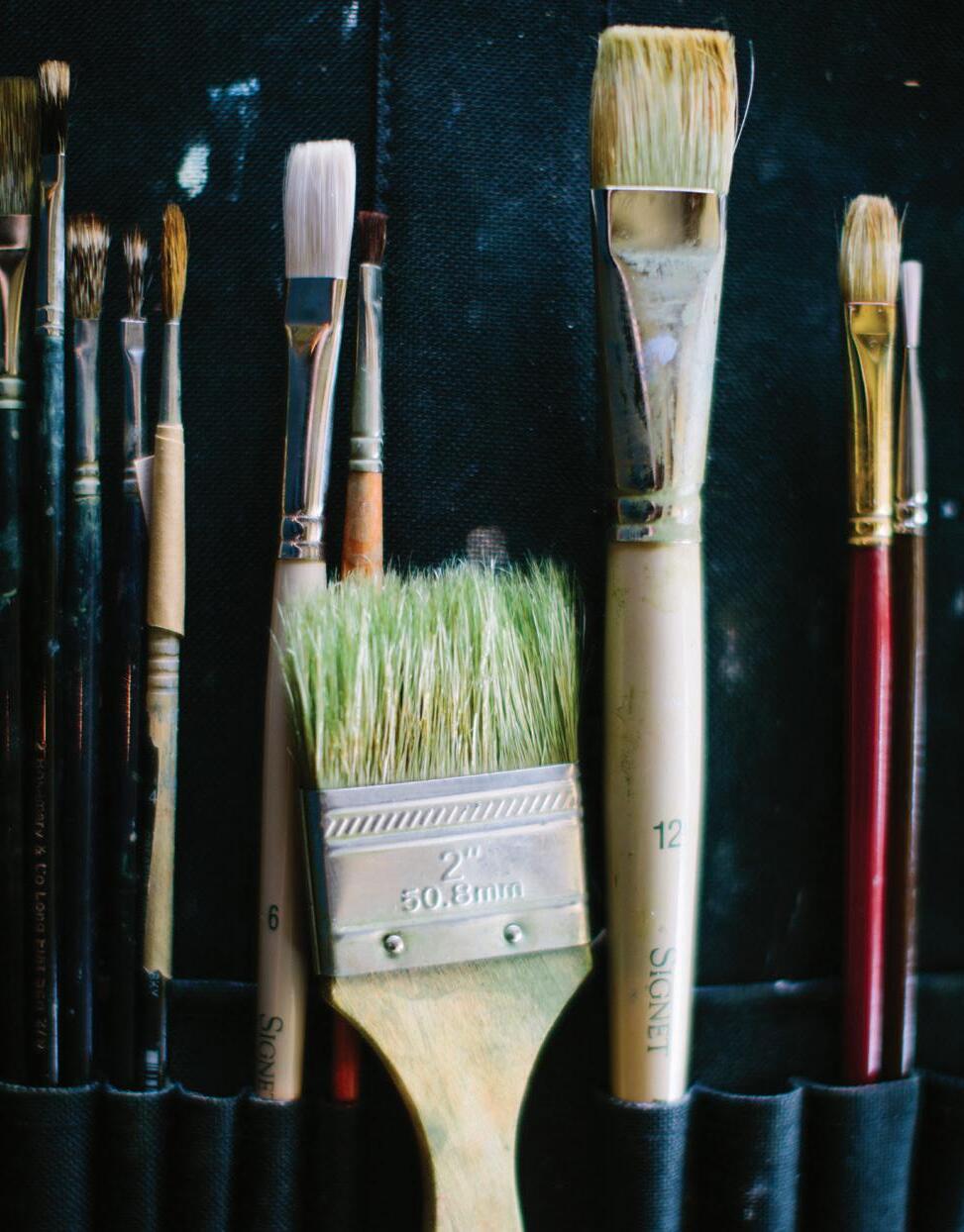


34 LEGENDS MAGAZINE 2017 NO 29
That was the beginning. Within days, inquiries from galleries flooded his inbox. As a trial, he sent a gallery in Wilmington, North Carolina, five paintings, which sold almost instantly. That’s when I knew I was a professional. When Rick retired from teaching, he started traveling more, painting up and down the eastern seaboard. In 2000, he met Hume Killian of the Wells Gallery and has been coming to the Lowcountry ever since.
Today, Rick speaks to a room of painters of all skill levels at the Cassique Clubhouse. He’s great with an audience. After a long career of teaching, he is articulate and eloquent when talking about his process, explaining tricks and techniques. We always start everything in one dimension, and then we take it to two and then three, he says. Think simple to complex. His audience sits rapt, some scribble notes. He turns back to the canvas and fills in the blue of a Lowcountry waterway, bright and clear. Again, we’ll modify this water later on. But right now, we’re just covering the canvas. For a moment, the room is still but for the scratching of his thick brush. He works quickly, and it is astounding to see the scene emerge with a few decisive strokes. I could never paint meticulous and slow!
He laughs. I think my personality dictates my painting style more than anything.
Before the providential Salmagundi award and the rush of inquiries, Rick had always preferred to paint out of doors, en plein air. But as galleries wanted more and more work and larger paintings, he worked longer hours and through the winter in his home studio. Now, he paints a quick study outside and takes photographs to record colors and shadows. My plein air experience has become, more or less, information gathering for larger works. His style, however, still has that quintessential looseness, the impressionism of classic plein air, characterized by a look of spontaneity and freshness. I find that in the wintertime, my work keeps getting tighter and tighter, so I have to get outdoors to keep that freshness. That’s really what I strive for. I want a studio piece to look like it was painted on location. And that’s really hard to do.
He instructs his audience not to overthink things, to paint loose, to refrain from answering all the “visual questions.” It makes sense. If you stare at a Rick McClure painting, there are focal points, little jabs of detail that snag the eye. Perhaps it is a heron, or the shimmering blue of a tidal creek. But the
LEGENDS MAGAZINE 2017 NO 29 35
“I was in my little studio and my cell phone rang. It was a lady with a thick New York accent.” He had won their Leila Gardin Sawyer Award, one of two top awards at the prestigious club.
rest is just loose background fading away at the edges. At the basis of my teaching and philosophy is the word contrast. His slow and staccato pace drives home the point. Contrast is in every aspect of the painting. It’s thin versus fat. It’s busy versus calm. It’s bright versus dull, light versus dark. It’s contrasting complementary colors like red and green. Contrast encompasses everything. So there may be a bright detail at the heart of the canvas, but it is juxtaposed against a sort of nothingness, perhaps a deep cool green of an unknown foliage, quiet and uncluttered.
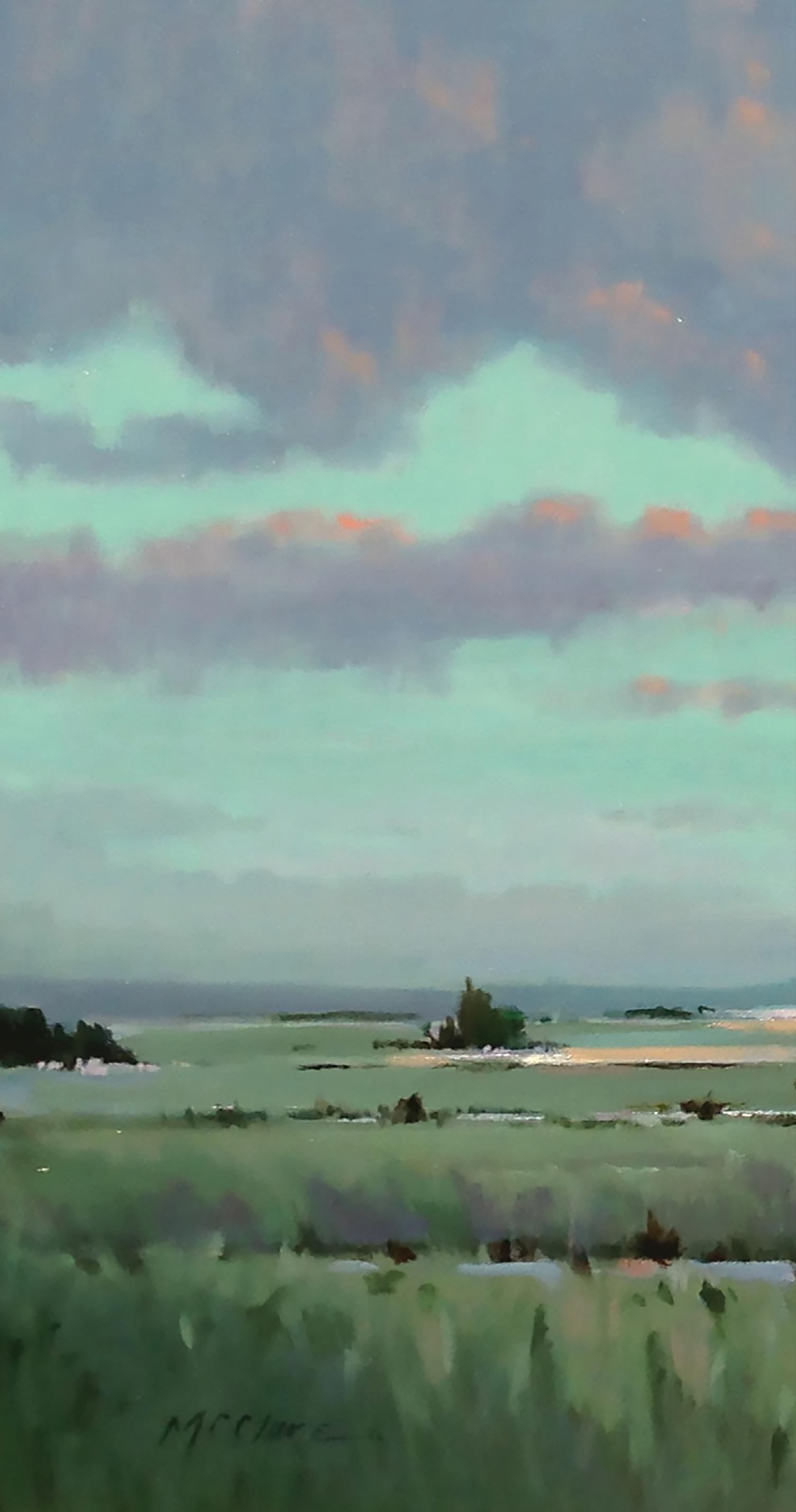
After a lifetime of painting, a lifetime of art and theory, Rick McClure is nothing short of masterful. Scrubby maritime holly springs delicately from the canvas in a few deft strokes. All the while, he is guiding his audience effortlessly through his personal artist alchemy. Certainly, if you do something long enough, the work becomes intuitive, innate. But Rick will never stop evolving. I think you can master a technique or a style to a certain point. But if you settle with that, you never grow. You always have to push yourself.
Rick will keep coming back to the Lowcountry and to Kiawah. He loves big skies and the ever-changing colors of the marsh. He also loves to golf! — H.W.
36 LEGENDS MAGAZINE 2017 NO 29

LEGENDS MAGAZINE 2017 NO 29 37
TWILIGHT MOMENT, EXCERPT | 24” X 30”, OIL ON LINEN

38 LEGENDS MAGAZINE 2017 NO 29

WATER’S EDGE, EXCERPT | 30” X 40”, OIL ON LINEN

OFF TO THE RACES
 PHOTOGRAPHY by JOEL CALDWELL STORY by HAILEY WIST
PHOTOGRAPHY by JOEL CALDWELL STORY by HAILEY WIST

42 LEGENDS MAGAZINE 2017 NO 29
“I read about them and decided I had to have one. A friend of mine got one and introduced me to some people. I wasn’t even in the market, but I couldn’t not get one!” says Mary Elizabeth Shoptaw as she strokes the velvety-downy coat of her Marsh Tacky, Tilly.
The Marsh Tacky was brought to the Carolina coast in the sixteenth century by Spanish explorers, settlers, and traders. Sure-footed and hardy, Marsh Tackies were used to carry goods on the Native American trade routes. In the American Revolution, Francis Marion, the “Swamp Fox,” and his forces rode the sturdy little horses against the British. The Tackies proved calm and tenacious in the swamplands of the Lowcountry compared to the larger European steeds of the British forces. Throughout history the breed has been managed in feral herds and used in ranching and farming. Beginning in the 1960s Marsh Tackies were raced on Hilton Head Island, and today’s race on Kiawah Island is the first since the 1980s. The Carolina Marsh Tacky Association formed in 2007 with
one hundred registered horses. Today there are four hundred. Janson Cox is a race headliner. His Marsh Tacky, Molly, won the 2011 race on Hilton Head Island—she was twenty-two at the time and beat nineteen younger horses! Today she is the official Marsh Tacky ambassador. She’s retired now but Cox tours her around the state, giving educational presentations on horse-mounted soldiers in the American Revolution and Civil War. “Molly is also a member of the DAR [Daughters of the American Revolution]. She’s descended from Francis Marion’s horses,” he says proudly. “So here’s a legend—a state legend.” He will ride Molly down the barricade to kick off the start of the race later in the afternoon.
This inaugural event is a long time in the making. After launching Kiawah Cares in 2010, the Kiawah Island Community Association (KICA) has been an active community player in the surrounding Sea Islands, tackling issues like substandard housing, homelessness, hunger, and employment training. “We knew that property owners were vested in the greater
LEGENDS MAGAZINE 2017 NO 29 43
Sure-footed and hardy, Marsh Tackies were used to carry goods on the Native American trade routes. In the American Revolution, Francis Marion, the “Swamp Fox,” and his forces rode the sturdy little horses against the British.

community, very philanthropic and giving of their knowledge and time for the betterment of others,” says Tammy McAdory, KICA’s communications and outreach director. “We focus on education, literacy, and other enrichment opportunities for Sea Island youth.”
So when the Kiawah Cares Foundation achieved 501(c) (3) status in 2014, the group needed ways to raise funds. “Kiawah property owners are a giving group, and there are already many fundraisers, including a gamut of golf matches and dinner galas,” says McAdory. “We wanted something unique, different.”
The crowd makes their way down the boardwalk and onto the white sand. A beach bar serves up cold beer and white wine. In anticipation of the hat competition later in the day, attendees wear colorful, wide-brimmed hats decorated with everything from apples to alligators. The mood is festive and
expectant; not many have witnessed a horse race on the beach before.

“The most exciting moment for me is watching fifteen stunning and rare Marsh Tackies walk out of the mist and onto the beach towards the field, led by cowboys and people who love them beyond description,” says McAdory. “Sorry, I’m a horse girl. We’re cheesy like that. But it is like they are walking out of time into our environment. It gives me chills!”
It is a sight to see, indeed. The horses prance and snort, their riders chatting nervously. Most of the horses here today aren’t trained for racing—it’s more for fun. “We don’t practice on tracks or anything,” says Paige Cooley, sitting atop Radar. Cooley was the grand champion of the 2013 beach race. “You kinda come out here and have one shot at it, and that’s it. That makes it more interesting—the unknown!”
The race is split into three mare heats and three gelding
LEGENDS MAGAZINE 2017 NO 29 45
heats. The winners face off in the finals. And they’re off! The first pair come thundering down the beach. It’s dramatic enough to raise the hairs on your neck—all that power and speed. Southern Breeze is the first winner of the day, trotting back up the beach to the start line amidst wild cheers from the crowd. The races continue throughout the early afternoon. Some horses don’t cotton to racing and only reach a relaxed lope. One horse heads straight for the ocean, another bucks like crazy at the starting line. “You never know what’s going to happen,” says Cooley. “You may think your horse is going to run great, and then you get out there and they spook at something or do something silly.”
But that’s all part of the fun. Yogi Manning, a horseman from Pelion, South Carolina, rides Cosette, and halfway down the beach she takes a dogleg left towards the ocean. He reins her in, shouting “THAT WAY!” while pointing to the finish line. The crowd goes wild with laughter. Not to diminish the performance of some of the horses, though. The winners fly
down the beach, hooves drumming and riders high in the saddle.
The Marsh Tacky usually stands at about fourteen hands high (under five feet tall). Historically they were preferred by women and children because of their size and nature. “I love these horses,” gushes Shoptaw. “They’re the most sensible, calmest horses I’ve ever seen. And they’re friendly, sweet, affectionate.” And there’s something winning about their history, the fact that these unique beasts belong on the Sea Islands, that they are rare and beloved by a select few in the horse world.
And that’s why these races are so special. Sure, it’s a lighthearted affair but these horses are a local wonder, a relic of the past. And according to Cox, it’s not easy to find beaches fit for racing. “But it’s their home,” he says. “That’s the beauty of it.”
The races culminate in a neck-and-neck battle between Donna Jones on Marsh Buck and Lindsey Loparo on Jefferson.
46 LEGENDS MAGAZINE 2017 NO 29
The races culminate in a neck-and-neck battle between Donna Jones on Marsh Buck and Lindsey Loparo on Jefferson. The crowd is tight against the barricades, shouting and exhilarated.

The crowd is tight against the barricades, shouting and exhilarated. The two horses pass each other several times and cross the finish line in near unison. The Carolina Marsh Tacky Association (CMTA) calls it a draw!

“It was an adrenaline rush,” says Loparo. “I was more out of breath than he was. I was a little nervous—we went out there expecting nothing!”
The band tunes up by the pool, and attendees drift towards the Sandcastle for cocktails and dancing. The horses and riders make the walk along the beach, through the maritime thicket, and back to the trailers. There’s a palpable camaraderie in the air, and owners take turns with the hose, washing down their mounts in the sunshine.
Will Gregory, another finalist, brushes down Archibald, a bay gelding. “It was great! That’s the first time I’ve done one of these races,” says Gregory. “My horse is kinda vain, and he hasn’t done all this. It’s fast and fun.” — H.W.

48 LEGENDS MAGAZINE 2017 NO 29
LEARN MORE: WWW.KIAWAHCARES.ORG | WWW.KIAWAHCUP.ORG.


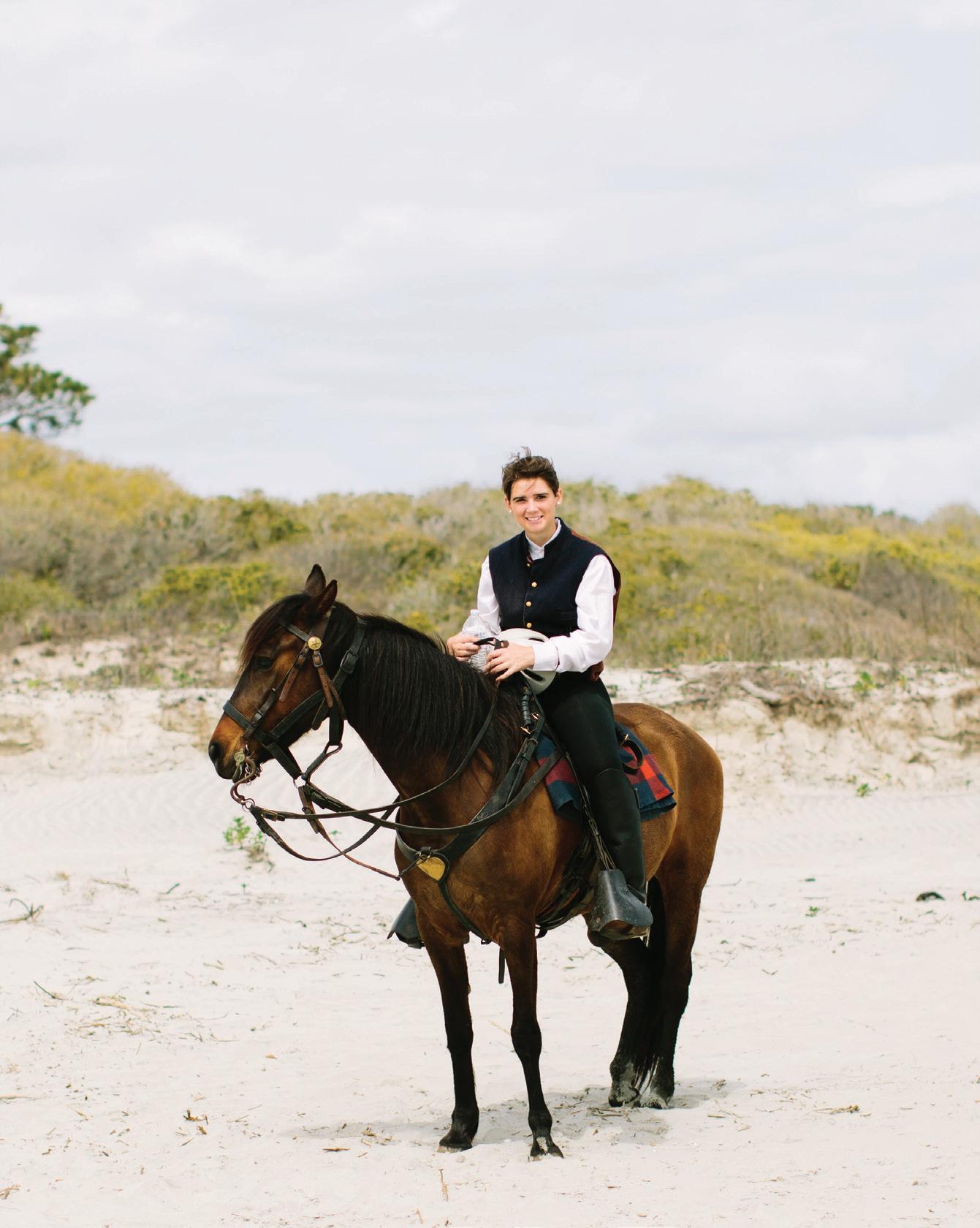
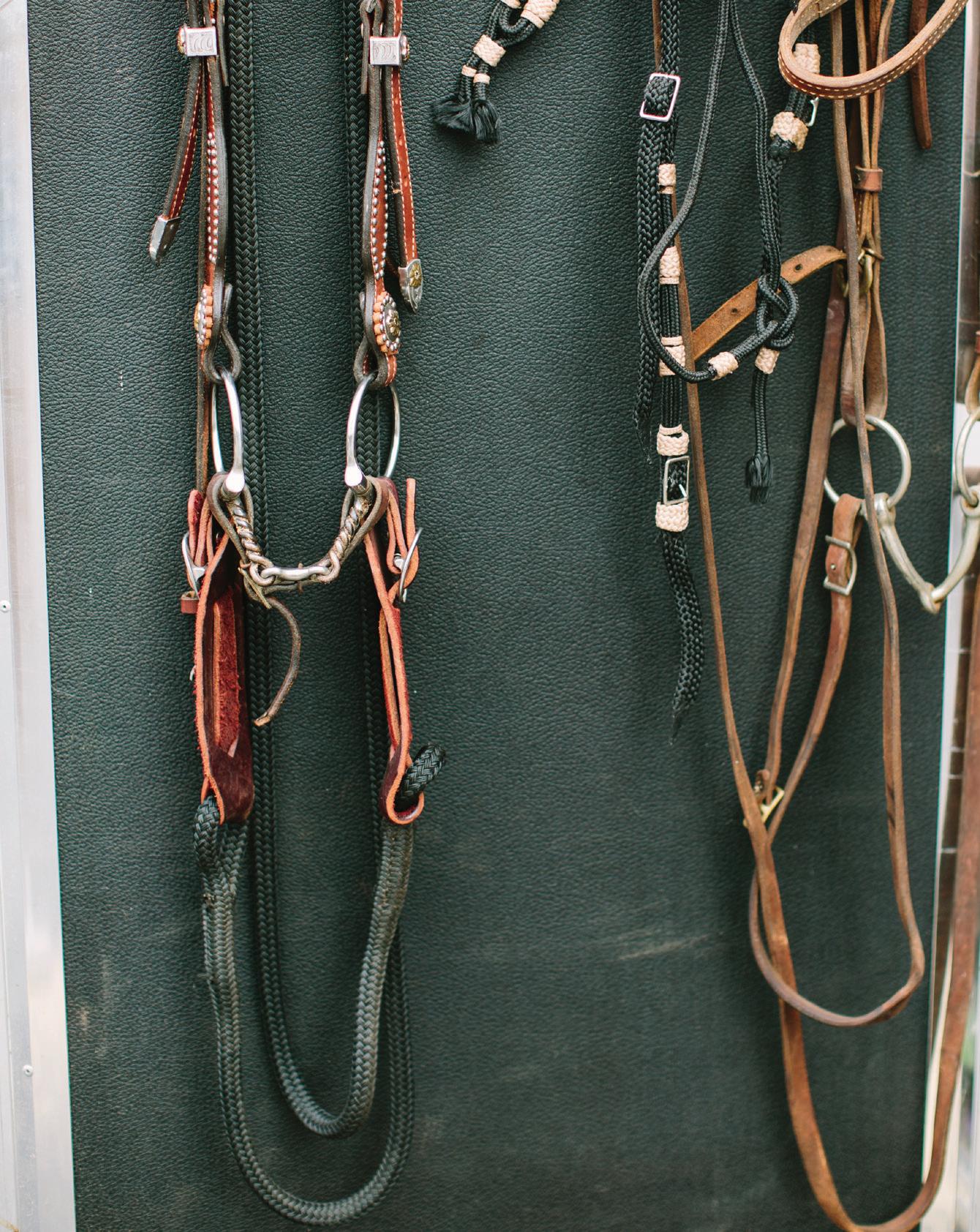
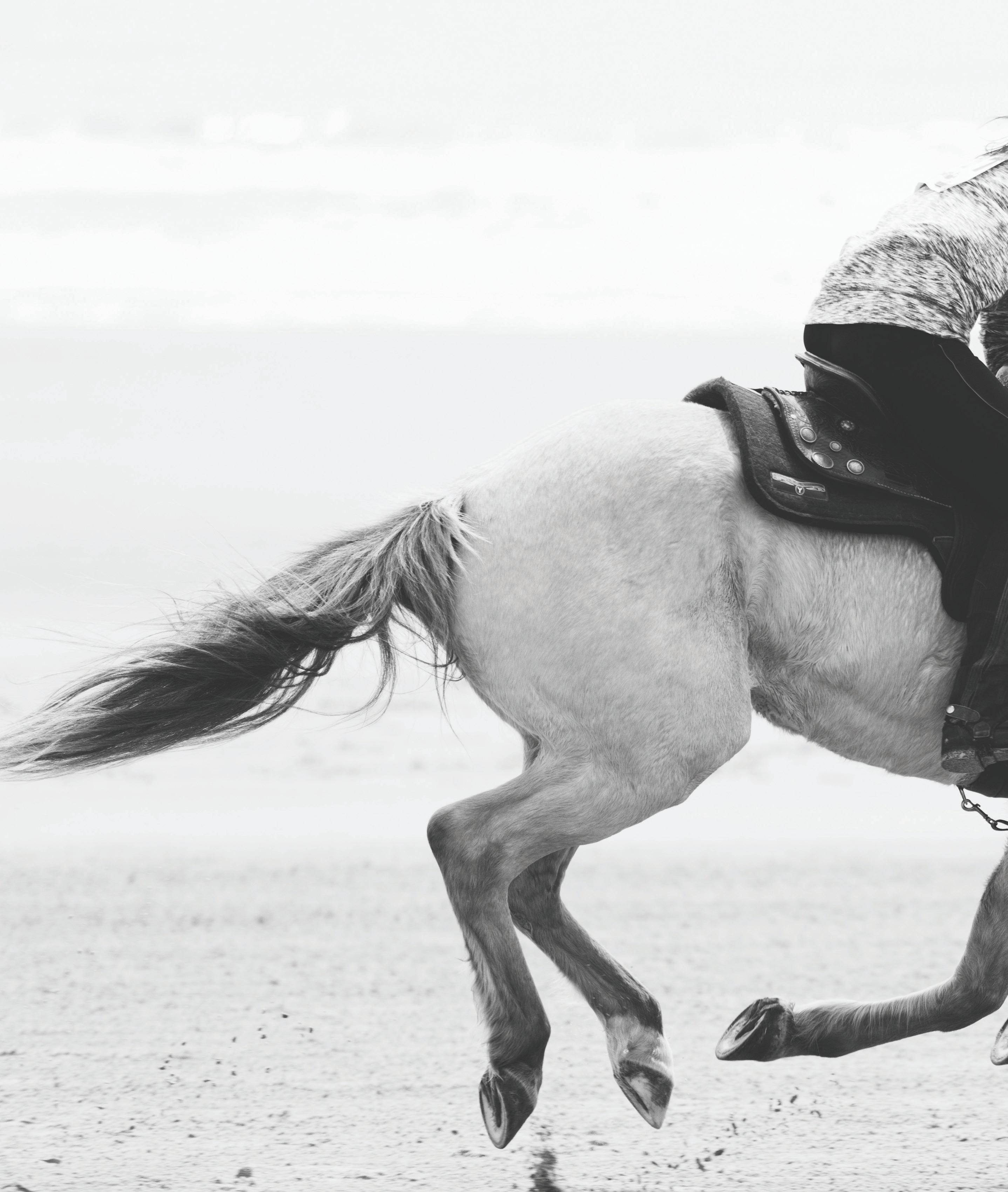
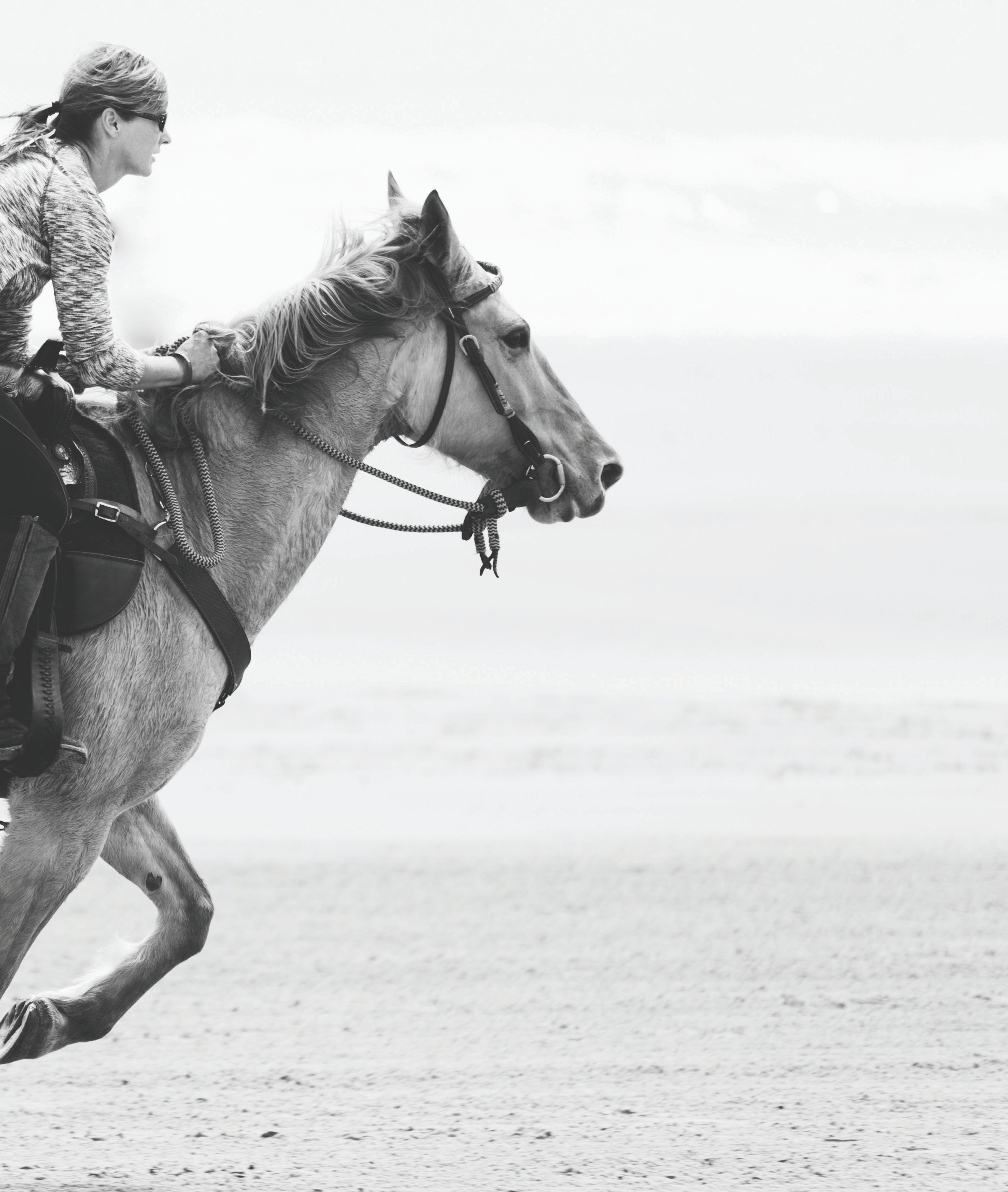

CONSIDER THE OYSTER
 PHOTOGRAPHY by OLIVIA RAE JAMES and MELISSA TOMS
STORY by STEPHANIE HUNT
PHOTOGRAPHY by OLIVIA RAE JAMES and MELISSA TOMS
STORY by STEPHANIE HUNT

But low, the hallowed oyster, that briny succulent beauty— raw or roasted; dressed in frilly garlic, spinach, and bacon crumbles or stewed in heavy cream; battered ’n’ fried to crispy perfection or casseroled under layers of saltines and butter; slurped in a shooter or slurped straight out of the shell (with a hit of horseradish and hot sauce if you’re the sort who likes a little kick); Rockefellered up real fancy or humbly tucked into holiday stuffing—anyway you shuck it, the world is your oyster, at least if you’re talking Lowcountry seafood.
“A lusty bit of nourishment,” M. F. K. Fisher famously called her beloved mollusk and the subject of her 1941 culinary classic Consider the Oyster. Yes, consider indeed. Consider that long before Charleston boasted James Beard Award-winning chefs by the half dozen, and long before raw bars were popping up left and right, and probably even before oyster roasts became the de facto mode of fall and winter Southern socializing and, heck, even before rice and shrimp and grits, the oyster was the bedrock of what we know of as Charleston.
Consider the early settlers who sailed into Charlestowne Landing, most likely so starved they could pry open an oyster with their bare teeth, and eyed a promising location nestled strategically between two rivers. They called it “Oyster Point”
(today known as White Point Gardens) due to the white mounds of oyster shells deposited there by the Kiawah Indians. Oysters were not only a staple of Native American and early colonial diets, but the crushed shells also became the tabby for the settlement’s protective walls and for Charleston’s earliest buildings. That gray blob of questionable consistency (“somewhere among raw chicken liver, Jell-O, beef tripe, and Dippity-do,” according to humorist Rick Bragg) cradled in its gnarled bivalve fortress was, quite literally, a fortifying food.
“He was a bold man that first ate an oyster,” opined Jonathan Swift. Yep, bold and smart and resourceful. Fast forward to 2017 and meet the bold, smart, and resourceful folks who are transforming the aquascape of South Carolina oystering.
“The Napa Valley of Oysters” – St. Jude Farms “Oysters are like wine,” explains Tracy Doran, as the St. Jude Farms work boat winds through Fish Creek off the South Edisto River, her curly hair dancing in the wind. “They’re so sensitive to their environment. Like grape varieties, an oyster’s flavor profile matches its surrounding conditions, and our waters have such a distinct salinity. I’ve heard some people beginning
LEGENDS MAGAZINE 2017 NO 29 55
An acquired taste, many say. Hard to swallow, and often harder to shuck.
to refer to South Carolina as the Napa Valley of oysters, but I guess instead of terroir, it’d be mer-roir?” laughs Doran, who with her husband, Bob, founded St. Jude Farms in 2001, a sustainable aquaculture farm and fine seafood purveyor based in Green Pond, SC. But really, it’s a family farm: Daughters Annie and Rosie (ages twenty-seven and twenty-six) and son Patrick (twenty-three, at the moment captaining our boat), are all part of the St. Jude team.
Bob, whose family was in the shipping business, grew up amidst Charleston’s maritime industry, and Tracy hails from a dairy farm in the upstate. She understands the cyclical nature of farming, but instead of a morning and evening milking schedule, St. Jude farmers tend their crop—some one million oysters a year in seven hundred and fifty grow cages and wild oysters from St. Jude’s DNR-permitted leases in the ACE Basin— according to the tides.
“Every morning our crew goes out to check and turn the cages,” says Tracy. St. Jude’s cultivated oysters are sexless triploid oysters, grown from local seed stock (as opposed to wild diploid oysters that breed and spawn), and flipping and sorting the cages on a rotating schedule results in clean oysters that have a uniform size and shape. “Our Charleston Salts grow cuppier, with this nice deep cup that chefs really like,” says Tracy. As for that mer-roir, “it’s like tasting the ocean— that salinity! I mean the ocean is right there, you just can’t get any more pristine,” she adds, pointing just one hundred yards
beyond the last cages where Fish Creek flows into the Atlantic.
Thanks in large part to Bob Doran’s doggedness (a fiveyear fight for summer permits), this past summer was the first season that DHEC allowed summer harvest and sales of mariculture (triploid) oysters in South Carolina. To guard against bacterial concerns due to summer’s warmer waters, the regulatory agency maintains strict rules for how quickly oysters have to be cooled immediately after harvest, which St. Jude and similarly sophisticated operations monitor carefully. St. Jude’s refrigeration and delivery facilities are based at their Bennetts Point headquarters in Colleton County. “With today’s technologies, there’s really no reason not to allow summer harvesting,” says St. Jude operations manager and oyster aficionado Mike Calista. “We’re taking things in a whole new direction—by cultivating more oysters, we’re also improving the water quality and the sustainability of our oceans, and adding to economic opportunity through a working waterfront.”
Indeed, year-round sales are a game-changer for oyster farmers, raw bar owners and customers, chefs, and those of us who haven’t quite mastered the only-eat-oysters-in-the-Rmonths thing. It means operations like St. Jude Farms and their cohorts in Beaufort County and elsewhere don’t have to shut down for 40 percent of the year, or source product from out of state to keep up with summer demand. “Charleston has a reputation for our unique culinary scene, and local oysters are part of that,” says Mike Lata, executive chef of The Ordinary.
56 LEGENDS MAGAZINE 2017 NO 29
The scrappy oyster is a small bite (or gulp) that packs a big wallop; it satisfies without satiating; it’s nutritious, sensuous, and sweetly salty. As an ecological marvel, the left-footed wonder works hard, offers much, and demands little.

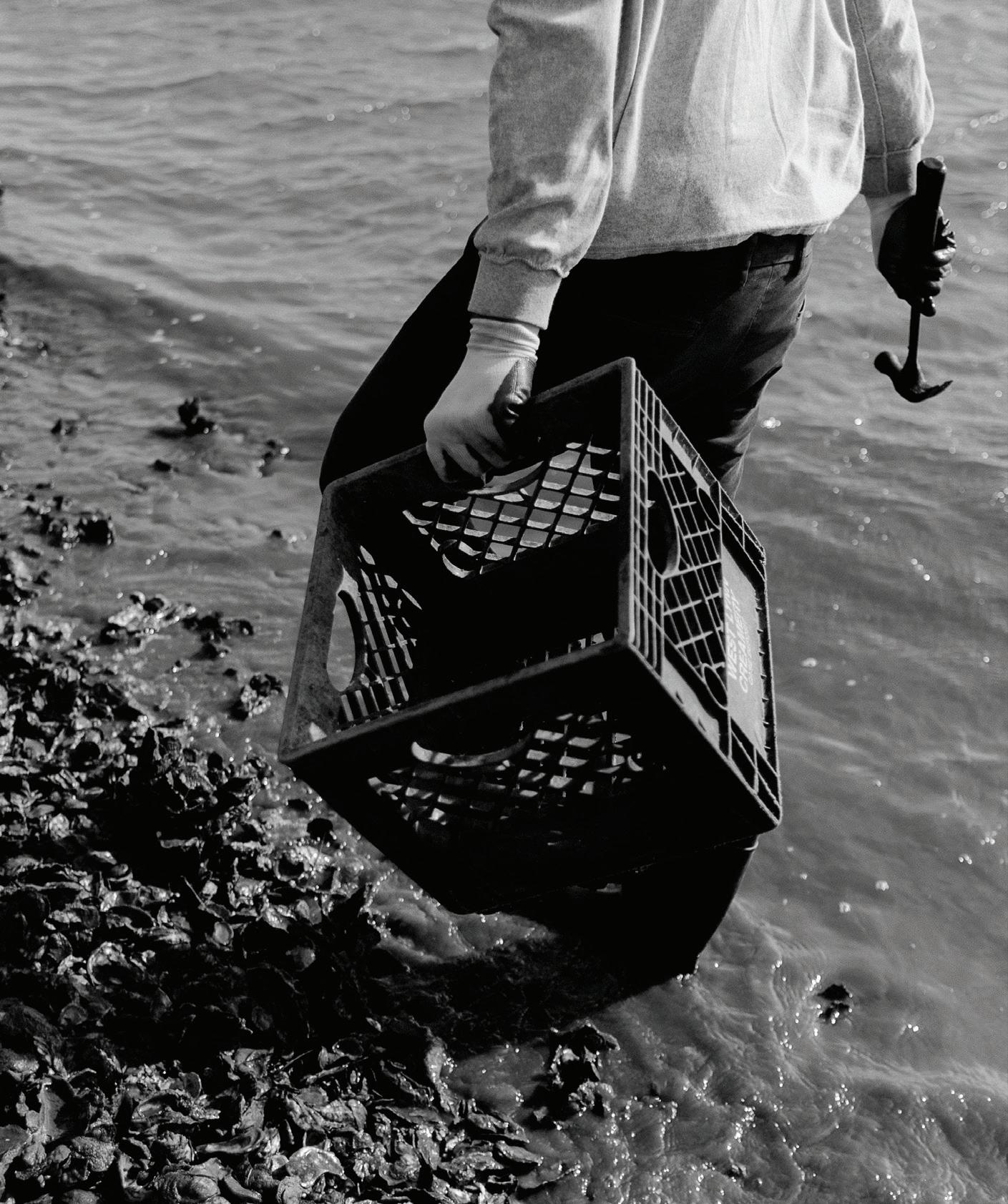
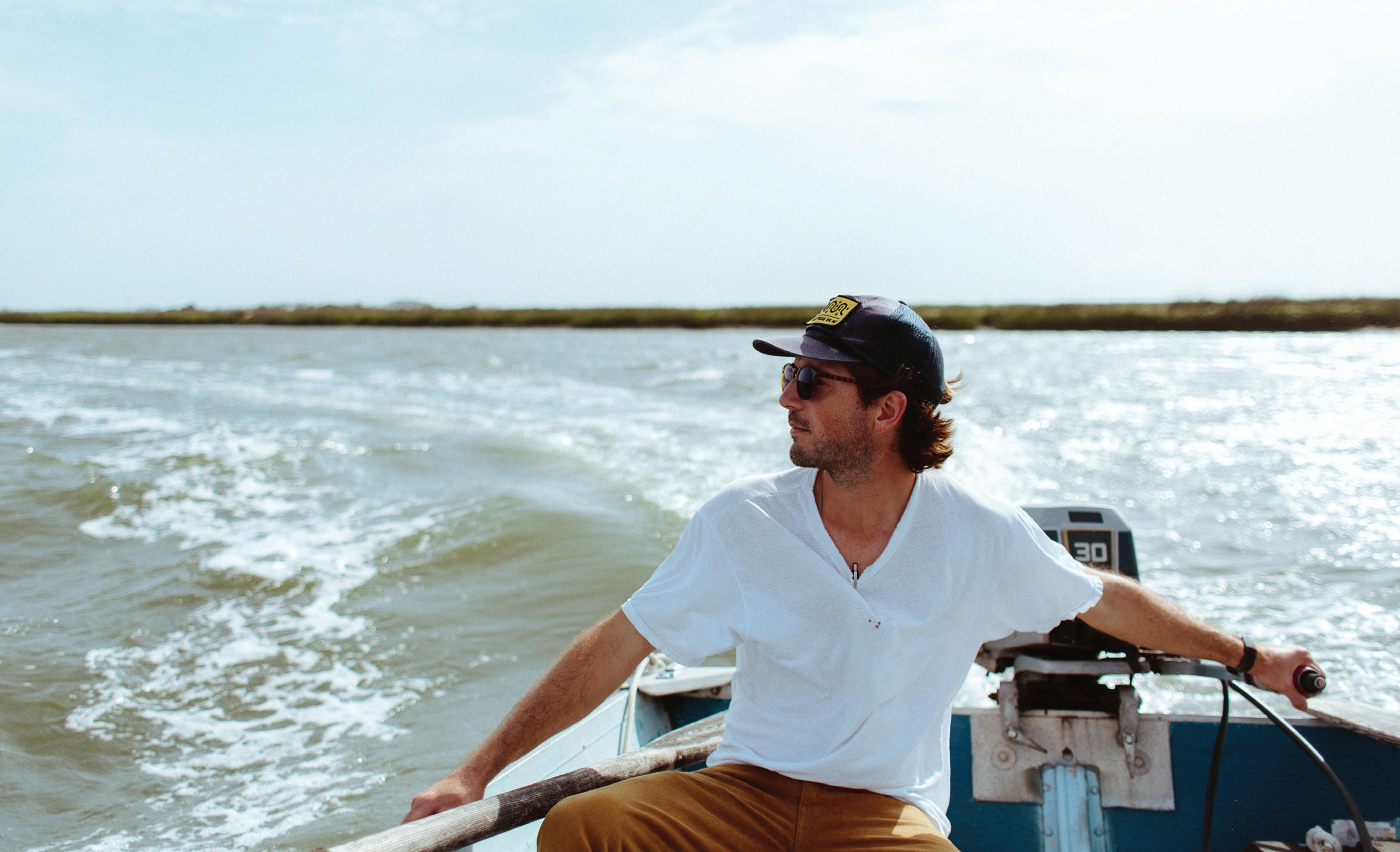

A Win-Win, Win-Win-Win-Win – Seaborn Oyster Co.
“It’s an exciting time in South Carolina—the number of oyster farmers seems to be exploding,” notes Cyrus Buffum, who counts himself and his Sullivan’s Island-based Seaborn Oyster Co. among that growing number. Conditions here are unique, he points out, because our oysters don’t hibernate as long as those in colder waters. “It takes eighteen plus months to bring an oyster to market in colder waters; we can do it in twelve— that’s a huge advantage.” That fact coupled with Charleston’s culinary explosion, “with raw bars on every corner, it’s an incredibly ripe time for our blossoming oyster industry,” he adds.


Buffum grew up on Cape Cod; his connection to the water runs deep, both ancestrally (his great-times-five uncle was born at sea, named Seaborn, and hence the inspiration behind Seaborn Oyster Co.), philosophically, and vocationally. A former competitive sailor and College of Charleston graduate, he founded Charleston Waterkeepers in 2008 and led the nonprofit water quality education and advocacy organization until 2015. Watchdogging the health of Carolina waterways gave Buffum a deeper appreciation for oysters and oyster reefs as ecological powerhouses: mega-filterers that improve water quality and, in the wild, clusters that help protect eroding shorelines and nurture marine habitat. But for Buffum, being a commercial oysterman is as much about connecting people to their environment and making that environment healthier, as it is about pleasing their palate. “As I see it, it’s a win-win, winwin-win-win,” he says.
And though Buffum has permits for grow cages and is appreciative that St. Jude Farms and others successfully lobbied for summer sales, for the time being he’s focusing his operation on the wild oyster. “I believe we have a real opportunity to
LEGENDS MAGAZINE 2017 NO 29 59



champion our native, Southern oyster. South Carolina has one of the last remaining wild oyster populations, and that’s something to celebrate,” he says. While harvesting cultivated (triploid) oysters alleviates the pressure on wild stock and doesn’t disturb nature’s rhythms, the process also, in Buffum’s view, has a potential shortfall. The flavor of a cultivated oyster is slightly masked, he says, though admittedly that distinction is highly nuanced.
“What’s more authentically Charleston, what’s more Southern than a wild native South Carolina oyster?” Buffum asks. When he brought six hundred of Seaborn’s “wild, gnarly, irregular” Ol’ Dangers and their more refined, hand-selected Seaborn Selects to the Billion Oyster Project’s gala in Manhattan recently, “chefs from across the country were asking us if we shipped. They could tell the difference,” he says. Whether or not it’s a sustainable business model to be a boutique, heirloom purveyor remains to be seen for Buffum and his Seaborn crew. He’s considering other methods of oyster cultivation to better organize his crops, and possibly expanding to become a more commercially scaled producer in the vein of St. Jude.
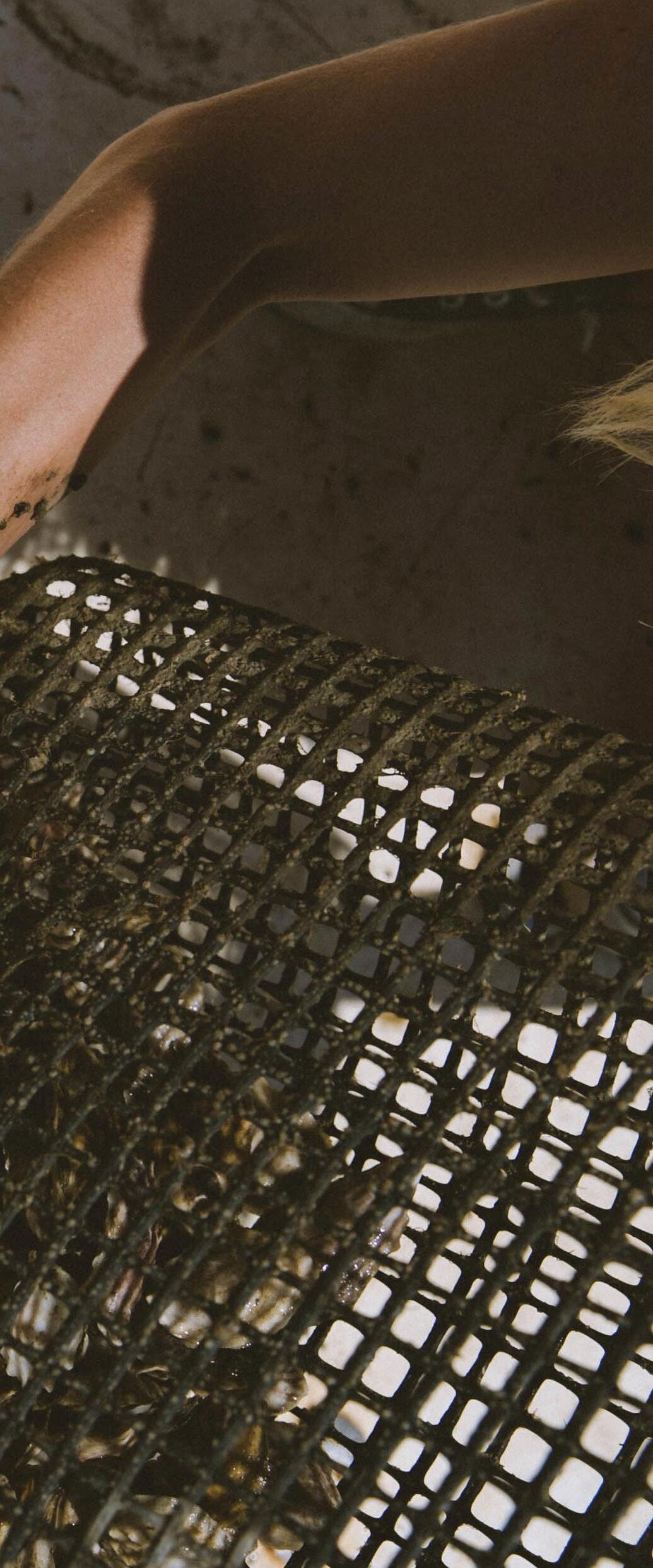
Yet what is clear for both Buffum and the Doran family, and for many other oyster farmers and shell fishermen feeding the minions of mollusk fans out there, is that the power of the oyster goes far beyond being a mysterious aphrodisiac. The scrappy oyster is a small bite (or gulp) that packs a big wallop; it satisfies without satiating; it’s nutritious, sensuous, and sweetly salty. As an ecological marvel, the left-footed wonder works hard, offers much, and demands little. And as an economic opportunity, well, perhaps we should heed the wisdom of Zora Neale Hurston: “I do not weep at the world—I am too busy sharpening my oyster knife.”
“Our family is so proud of St. Jude Farms, of working hard to provide the best service and product to restaurants while staying true to our mission of sustainable farming,” says Tracy Doran. Ultimately, she and Buffum agree, their efforts are creating a healthy ecosystem, a healthier environment, and a more economically viable working waterfront. “It’s good for restaurants, for people who need jobs, and ultimately for South Carolina,” Doran says. So indeed, as M. F. K. Fisher invites us to do, consider the oyster, year-round. — S.H.
LEGENDS MAGAZINE 2017 NO 29 63
 PHOTOGRAPH: FRANCES BENJAMIN JOHNSTON, 1938
PHOTOGRAPH: FRANCES BENJAMIN JOHNSTON, 1938
FENWICK HALL
THE LEGENDS OF A JOHNS ISLAND PLANTATION
 WRITTEN by CHRISTINA RAE BUTLER
WRITTEN by CHRISTINA RAE BUTLER

66 LEGENDS MAGAZINE 2017 NO 29
VISITORS AT FENWICK HALL PLANTATION, 1938 | FROM THE PLANTATION PHOTOGRAPH COLLECTION OF THE CHARLESTON MUSEUM
Hidden at the end of an avenue of oaks on Johns Island sits Fenwick Hall, an early eighteenth-century plantation house. The plantation was alternately known as Gibbes’ plantation, Head Quarters, Fenwick’s plantation, and the John’s Island Stud (for its association with horse racing in the eighteenth century) before it finally received the name Fenwick Hall at the end of the nineteenth century. South Carolinians have long been fascinated with Fenwick Hall’s historic owners, who supplied wartime intrigue during the Revolution and provided inspiration for more than one ghost legend. Fenwick Hall stood witness to hurricanes and war, surviving activity and occupation in both the Revolutionary War and the Civil War, only to fall into disrepair in the early twentieth century. The stately plantation was fully restored in the 1930s, then converted unceremoniously into a rehabilitation facility for the wealthy. Development has whittled away at its once extensive acreage. In the twentyfirst century, Fenwick Hall has returned to use as a singlefamily home with over fifty acres still intact.
INTRIGUE FROM HISTORIC OWNERS
In 1702, Governor Robert Gibbes received the original grant for the three thousand acres where Fenwick Hall is located. Gibbes was part of the wealthy contingent who came to Carolina by way of Barbados. He was deputy to the Lord Proprietors, member of the Provincial Assembly, and Sheriff of Berkeley County in addition to being the Governor. His
family thrived in Carolina, and his oldest daughter married John Fenwick, the namesake of the plantation.
John Fenwick’s older brother Robert was the first of the family to immigrate to Charlestown, arriving aboard the Loyal Jamaica in the seventeenth century. He was born to a prominent English family, though he did not have a title. John followed him to South Carolina and quickly acquired property, including what would later become Fenwick Hall. John is given credit for building the current house circa 1730, which legend states replaced a log cabin on the site. Any three-hundred-year-old property is bound to have myths and errors mixed into its history. Historian Robert Stockton has questioned such an early construction date and noted that log construction is not a Lowcountry tradition, so the early house was probably not a cabin. Regardless, the current house likely dates before 1750, based on materials, style, and slight interior asymmetry found there and at other early plantations in the area. The stately hip-roofed Georgian mansion has two fronts, one facing the river and the other the road. It was built from locally made bricks laid in Flemish and English bond, with accent bricks above the windows, possibly imported from England. It sits on a high raised basement that functioned as a storage cellar. The large interior rooms have high ceilings, cypress paneling, mantels with Greek Key patterns, and chair rails with hand carved Vitruvian scroll motifs.
Historian Samuel Stoney noted in 1938 that “Fenwick Hall marks the cresting wave of prosperity that came
LEGENDS MAGAZINE 2017 NO 29 67
Fenwick Hall, translating roughly to “marsh farm” in Old English, is a fitting name for this colonial plantation on Johns Island in the Lowcounty of South Carolina. Built as early as 1730 on the site of an even earlier lost house, Fenwick Hall’s architecture and legendary history have fascinated in equal measure for centuries.
over the Low Country in the decade after the end of the Proprietary Government with its last complications of Indian wars and piratical incursions in the Low Country proper. The house also signifies the arrival at considerable wealth of an interesting family.” Stories circulated that pirate treasure is still hidden somewhere on the plantation, leftover from John’s era of ownership. John served as Commissioner of Indian Trade, and, during his later years, the colony nearly went under during the Yamasee War of 1715, in which local Indian tribes fought to expel the colonists for three bloody years. Archeologists have found Native American pottery at Fenwick Hall, as well as early colonial European and slave-made goods. Legend states that a curious brick tunnel leading from the house to the Stono River was an escape passage in case of Indian invasion, although it postdates the Indian threat and measures twenty-two-inches wide and thirty-inches deep, too small for an escape tunnel but well suited for draining the house site.

Fenwick Hall’s owners made use of its extensive marshland in the Colonial period, cultivating it as rice fields. Later, the high ground was planted in Sea Island cotton, an exclusive sought-after variety. At its largest, the plantation was forty-five hundred acres.
Edward Fenwick, John’s son, inherited the house and thirteen thousand acres from several plantations in 1747. Edward owned an additional eleven thousand acres, five hundred slaves, and a Charleston townhouse. He was married twice, first to Martha Izard, who died, and then to Mary Drayton in 1753. Mary bore fifteen children, including two sons, Edward Jr. and Thomas. Legend states that one of Edward Fenwick’s daughters eloped with an Irish coachman. The couple was caught the following day and brought back to Fenwick Hall, where Edward put the young groom on a horse with a noose around his neck and made his daughter whip the horse into motion, thus hanging and killing her husband on the spot. Some say she died of a broken heart and still roams the house, while others tell of a headless horseman with a noose round his neck roaming the plantation. There is no documentation of the hanging, only stories told over the centuries.
Around 1750, Edward added flanker buildings to the Hall that were used as a stable and a coach house for his extensive equestrian activities. Like many of his peers, Edward loved horse racing and was a founding member of the Carolina Jockey Club. He even traveled to England to purchase horses for his racing enterprise and breeding stable.
68 LEGENDS MAGAZINE 2017 NO 29

LEGENDS MAGAZINE 2017 NO 29 69
FENWICK HALL PLANTATION, C.1920 FROM THE PLANTATION PHOTOGRAPH COLLECTION OF THE CHARLESTON MUSEUM OPPOSITE PAGE: 1825 MILLS ATLAS MAP
During the British occupation of Charlestown in 1780, Sir Henry Clinton made Fenwick Hall his base, leading to the nickname “Head Quarters,” as the plantation was known after the war.

70 LEGENDS MAGAZINE 2017 NO 29
FENWICK HALL PLANTATION IN RUINS, C.1925 | OPPOSITE PAGE: VISITORS IN THE GARDEN AT FENWICK HALL, 1938 FROM THE PLANTATION PHOTOGRAPH COLLECTION OF THE CHARLESTON MUSEUM
Fenwick Hall boasted a one-thousand-acre savannah for grazing, with fenced enclosures for stallions and mares with foals. Edward could not resist competing, even during the American Revolution when he and a Tory officer conspired to race, despite Fenwick’s fear that “it can’t possibly be done with secrecy.”
Politics on the eve of the Revolution caused the Fenwick family great strife, as Edward Sr. was a staunch supporter of the American cause, and his sons were loyalists. Edward Jr. was almost disinherited when he married the daughter of loyalist neighbor Colonel John Stuart. Edward Sr. died in 1775, leaving Fenwick Hall to Edward Jr. and Thomas, and numerous slaves and acreage to his wife and other children. During the British occupation of Charlestown in 1780, Sir Henry Clinton made Fenwick Hall his base, leading to the nickname “Head Quarters,” as the plantation was known after the war. Edward Jr. welcomed the British, but turned out to be a double agent who provided intelligence to American General Nathanael Greene in 1782. Thomas was a true loyalist and even helped his sister-in-law, Sarah Stuart, escape house arrest from the Patriots. After the war, the brothers fled to England, but Edward Jr. returned to South Carolina and was able to regain his citizenship when Greene and local Patriot politician Henry Laurens vouched for him. Fenwick Hall avoided confiscation by the Americans because of Edward Sr.’s prolonged estate case (unresolved during the war) and because of Edward Jr.’s intelligence activities.
After the war, Fenwick Hall was auctioned by Edward Sr.’s executors. The ad read: “A large proportion of a valuable body of land on Johns Island, within seven miles of the city, whereon Mr. Fenwicke resided, to be disposed of in three or four tracts of six hundred acres each, the whole of it well timbered and wooded, and having good landing places on the river; the advantages of these tracts too obvious to need description.”

John Gibbes, a cousin of the Fenwicks and descendant of original owner Robert Gibbes, purchased the plantation
and added his personal touch with an Adamesque-style addition, all the rage in the late 1700s. The octagonal wing altered the Georgian symmetry of the house but provided additional entertaining rooms with the latest large-pane windows and ornate wood paneling of white pine, moldings of cypress and mahogany, and delicate plasterwork. Gibbes died in 1803, and his heirs sold Fenwick Hall to Joseph Jenkins, who sold it just three years later to Robert Brown, a Charleston factor. Benjamin Reynolds bought the plantation in 1817 and lived there until his death in 1826. He was a planter and politician from St. Helena, and a noted Patriot during the Revolution. Dr. Daniel Jenkins Townsend took possession in 1840 and owned it during the Civil War, when the house was used by both the Confederate and Union forces. Fenwick’s cotton was burned and abandoned in the field, and the house was robbed of its furniture but miraculously was not destroyed during occupation. After the war, Townsend gave Fenwick Hall to his son, but he noted that after years of wartime neglect “the tract consisted of marshland formerly reclaimed but now overflowed by the tide and useless in cultivation.”
Thomas Peck bought Fenwick Hall in 1876 and owned it until 1912. The next owner, H. B. Whilden, is given credit for changing the name from Head Quarters to the statelier Fenwick Hall. The Pecks and Whildens leased the plantation for livestock ranging and farming. John Limehouse opened a stand near the road and became locally famous for his pork sausage, homegrown on the Hall grounds.
LEGENDS MAGAZINE 2017 NO 29 71
TWENTIETH-CENTURY RESTORATION
In the 1930s, railroad executive and lawyer Victor Morawetz and his wife Marjorie purchased the house, which was in a severe state of neglect—the gardens were overgrown, the entry stairs were gone, window panes were missing, and the portico columns were rotting away. They lovingly restored the house and grounds, hiring the prestigious firm of Simons and Lapham to create colonial revival details where character had been lost to time. The firm designed a two-story kitchen wing, a colonial revival one-story piazza, a new frontispiece, and the current Palladian entry steps. They also had a new avenue of oaks planted as an entrance from newly created Maybank Highway. Marjorie was a founding member of the Historic Charleston Foundation and was an avid gardener, creating extensive formal landscapes, and even a cactus garden, at Fenwick Hall.
After Victor’s death, Marjorie sold Fenwick Hall to Helen and Claude Blanchard in 1943. The Blanchards lived seasonally at Fenwick Hall with their two sons, Claude Jr. and Robert. Robert composed a score called “Legend of Fenwick” inspired by the ghosts of the house as his master’s piece for a degree from Catholic University. It was played by the National Symphony in Washington D.C. and the Columbia Philharmonic. Claude Jr., a Charlestonarea contractor, offered the twelve-hundred-acre property for sale in 1975. After several years on the market, he partitioned the property and sold the smaller portions. In 1980, new owners converted the colonial mansion into a private alcohol and drug rehabilitation facility, with the hefty price of nine thousand dollars a month per patient. The surrounding tracts of plantation land were annexed to the city of Charleston in 1985, bringing new zoning and the threat of development. The land on which Fenwick Hall sits was annexed five years later. In 1995, the facility closed


72 LEGENDS MAGAZINE 2017 NO 29
PHOTOGRAPHS: FRANCES BENJAMIN JOHNSTON, 1938




PHOTOGRAPH: FRANCES BENJAMIN JOHNSTON, 1938

and, shortly after, John Pernell and Martha Hamilton purchased the home on fifty-five acres and painstakingly restored it to its glory as a single-family historic home. They consulted with architect Glenn Keyes to document the house and guide the restoration. They removed the commercial kitchen and extra bathrooms and repaired the dozens of holes drilled through the walls for the hospital sprinkler system. Keyes noted that the Palladian windows are some of the earliest in the state, and the original floor plan is still a mystery. The Vintage and Fenwick Commons subdivisions have been built on portions of the plantation sold off over the years, but Fenwick Hall itself is safe in the hands of the current owners and will be an increasingly important bastion of the colonial history and architecture as modern development marches forward on Johns Island. — C.B.

LEGENDS MAGAZINE 2017 NO 29 75
The Palladian windows are some of the earliest in the state, and the original floor plan is still a mystery.
PHOTOGRAPH: FRANCES BENJAMIN JOHNSTON, 1938
EAGLET BELOVED
PHOTOGRAPHY by PAMELA COHEN
Under the United States Bald and Golden Eagle Act, eagles are carefully monitored and protected nationwide. While they were once on the Endangered Species list, their populations recovered sufficiently. Construction near an active eagle nest is limited to cyclical windows to allow the birds seasonal nesting. This spring, two indefatigable naturalists watched quietly as a Kiawah eaglet walked the nest and learned to fly.
76 LEGENDS MAGAZINE 2017 NO 29
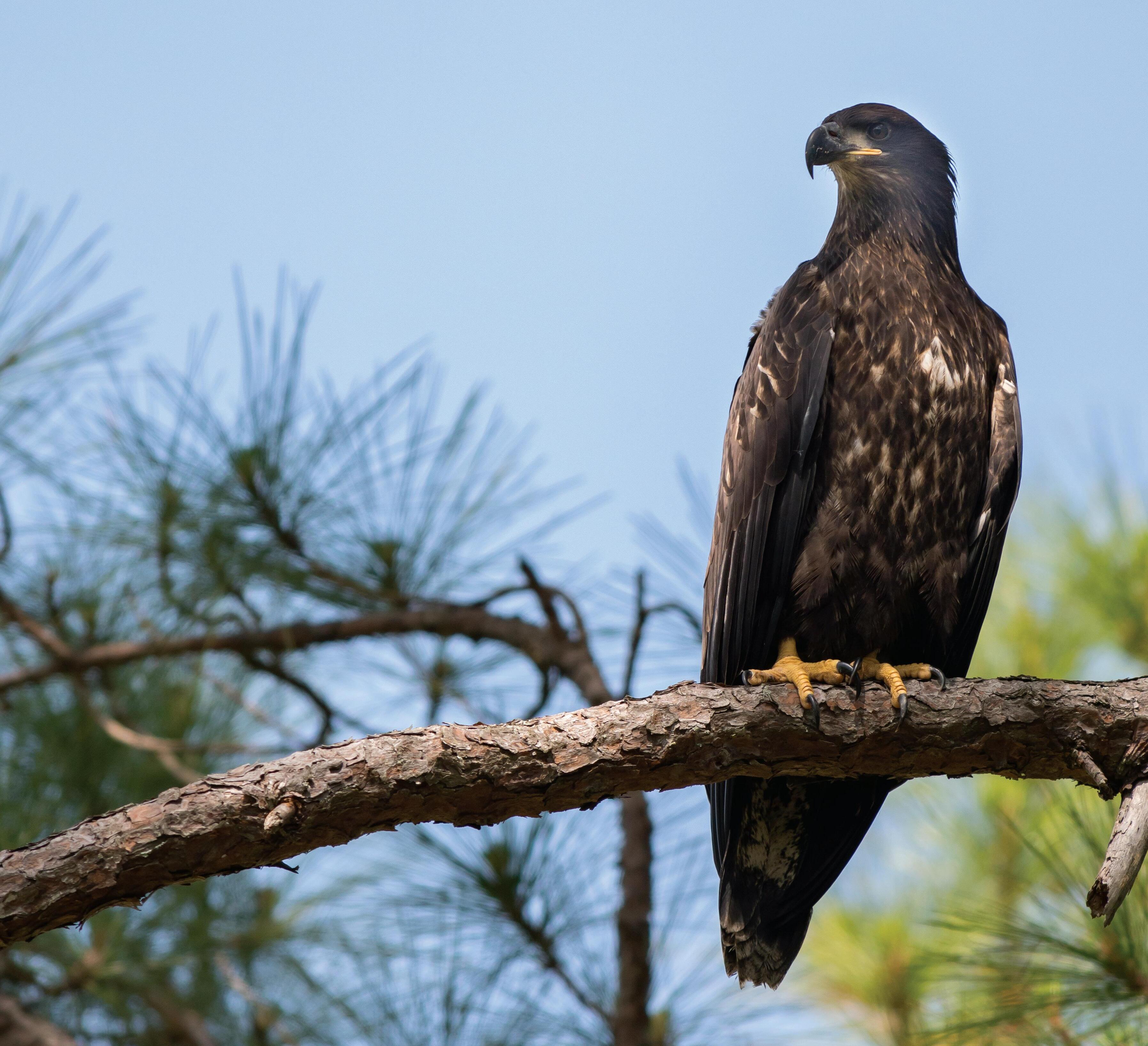
4.4.17
Bald Eagle Nest Monitoring Report
Kiawah Island, SC | Cassique
Spring is all around us right now, from the mild temperatures this morning (~64°F) and notices of daily showers, to beautiful flowers, pollen, and abundant sand gnats everywhere. The 0703 sunrise this morning had to fight through the low clouds that moved by quickly on the steady breezes. A dead-low tide was showing lots of mud bank without a hint of current, and apparently not much food either: just a handful of wading birds, mostly Snowy Egrets, moved overhead, but none were seen using the tide creek in front of my observation post.
I arrived about twenty minutes before sunrise hoping to catch an early Eagle off the nest, but to no avail. One wedge of Double-crested Cormorants came over, heading steadily into the northeasterly winds. About the only thing moving in numbers were Boat-tailed Grackles, circling and making their raucous spring territory calls. In fact, no Bald Eagles, or any other raptors or soaring birds of any kind, were observed for the whole ninety plus minutes of the field session. Inside-construction traffic for the TVW [Trailing Vines Way] house arrived about 0730, six or seven cars & trucks, but made no discernable noise or disturbance in the area. Perhaps the most quiet field session of the 2017 series.
I repeatedly scanned across the whole horizon, looking to all the known perches and thinking I might be missing something in the dim predawn, or in the glare of the sun behind the nest site, but, no, there just weren’t any Eagles to be seen. I did get one quick glimpse of a flapped wing while scoping the small bit of nest structure I can see from the regular observation post. That confirmed to me that there was at least one bird at the nest site. But at 0840 I decided it was going to be a slow morning with just that one hint of the nesting effort I felt certain was taking place this season. So I left the post and decided to take a look at the nest site by car from Trailing Vines Way.
Look what I found: That solitary, needle-shrouded wing flap seen earlier was from a young branchling Bald Eagle perched on a limb stub just at the rim of the #855 nest! No adults were to be seen, but the all-dark plumage and dark beak, and the absolutely still upright countenance of the bird are unmistakable. Perhaps the upcoming SCDNR flight surveys can add details to this observation.
So, by these surveys, we can confirm at least one (no others in evidence today) Bald Eagle chick has made it to the juvenile stage at nest #855 in 2017. I scoped the bird from my truck seat for about five minutes (during which it might as well have been made of lead), saw no other birds, and took a few pictures. No other car or foot traffic passed on TVW during today’s survey. I left the area just before 0900.
Respectfully submitted, Paul
Hinchcliff, Folk Land Management
78 LEGENDS MAGAZINE 2017 NO 29
4.12.17
I returned to Cassique late yesterday with hopes of finding mature Eagles...but without any luck. So back this morning to try to photograph the immature still in the nest. I’ll tell you, Hailey, this is a tough shoot! The Eaglet is almost all brown, seems to position itself behind branches or pieces of pine, making my job a challenge. On top of that, the nest is high in a pine tree, positioned in the woods with little light. I stayed there a few hours today to find that the light is best near noon, which I would have never imagined. I was hoping at some point one of the adults would come and feed the chick, but I have yet to see that. I’ll go back again tomorrow.

Let’s see what tomorrow brings...
Smiles, Pamela
LEGENDS MAGAZINE 2017 NO 29 79

4.15.17
I have been out at Cassique every day at various times during the week. Most of the content has to do with shots of the Eaglet in the nest. Yesterday, it managed to come up and do a little practice with wing flapping, most likely because there was a breeze.

Today was what I have been wanting! The adult came by and was nearby on a branch. I only had seconds to make the shot, handheld with a large lens. It is amazing to watch just what unfolds out there in the wild. Yesterday, another raptor/predator landed near the nest. I couldn’t see it, yet heard it land. The reaction of the Eaglet told me what was going on. It hunkered itself down into the nest, fanning out its wings, allowing for a complete and successful camouflage. Soon the predator flew off. Obviously, the young Eagle’s instinct was the winner of the dangerous situation. Wondering what will be next?
I am totally enjoying this opportunity. Have a good holiday, Pamela
LEGENDS MAGAZINE 2017 NO 29 81
4.26.17
You can’t even believe all that I have experienced with the Eagles—it has been a terrific opportunity!
I feel as though the Eagle chick is my child! I watched it from being somewhat helpless in the nest, to learning to climb out on a branch like it was a tightrope...and now fly. What a wild ride this has been.
Today, I watched as the adult and the chick both flew into the nest, the adult bringing its treasure, a fish. Much to the dismay of the voraciously hungry chick awaiting its meal, the fish fell out of the nest, dropping all the way down from the pine tree. The chick was starving and chirping uncontrollably. I knew the adult would have to satisfy it, and it would be a waiting game for me. I used my car as a blind with hopes the adult would bring food and that I wouldn’t be a distraction. It never realized the fish was on the ground but instinctively knew it had to go hunting again. The car was hot, but my excitement never vanished, and sure enough, the adult Eagle came through with lunch! Both were in the nest, and the young one got fed...I got the photos!
The little Eagle can fly. It is amazing to see it venture out on its own, yet still not ready for the big world awaiting. I will continue to check on it.
I will be excited to share all of these with you.
Pamela
82 LEGENDS MAGAZINE 2017 NO 29
5.1.17
I have been to the nest nearly every day. I feel like I have lived with these two magnificent creatures!
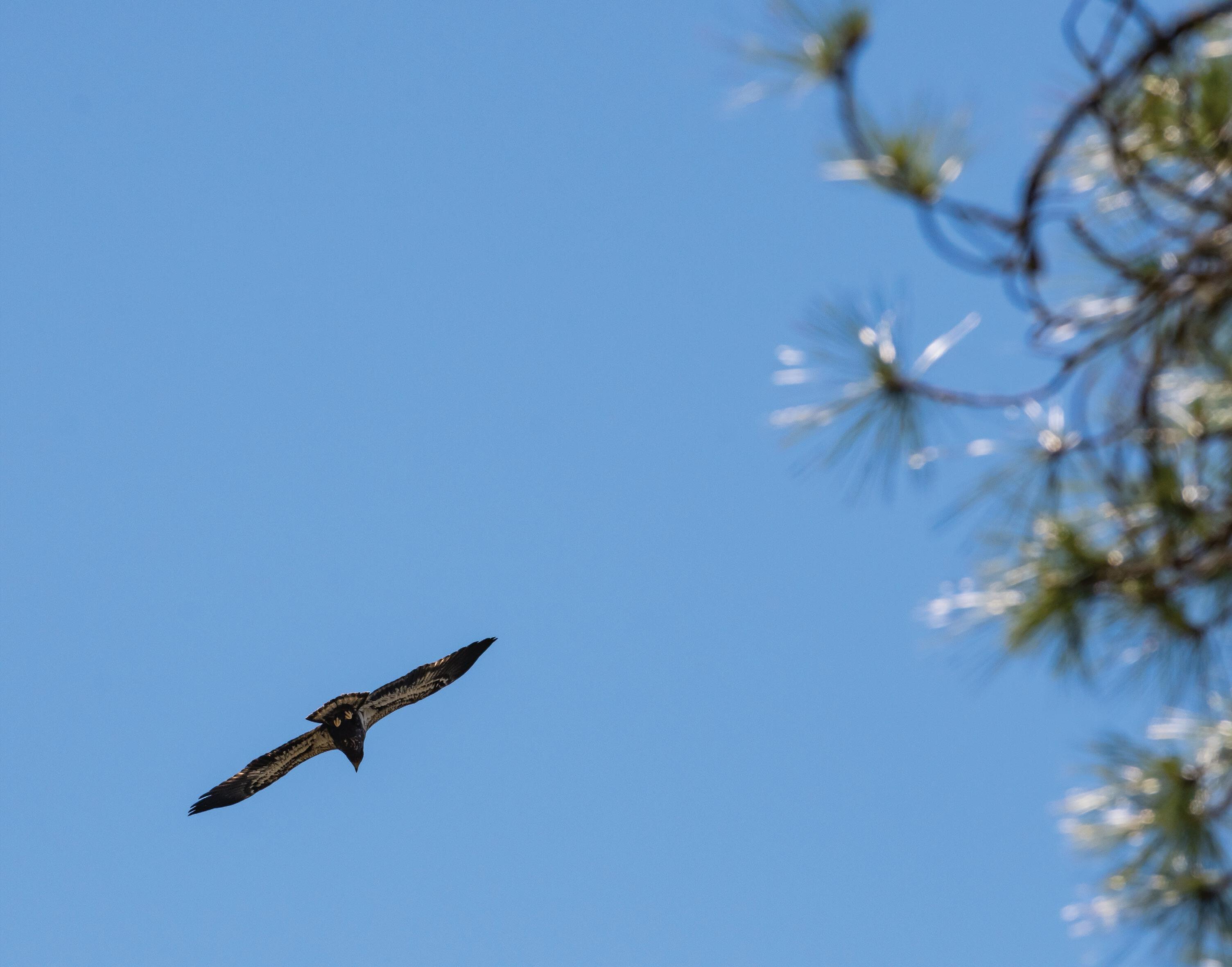 Pamela
Pamela
LEGENDS MAGAZINE 2017 NO 29 83
5.3.17
Bald Eagle Nest Monitoring Report Kiawah Island, SC | Cassique
The sun seems to rise fast in May. 0615 this morning was black night, but by 0635 you could have read small type easily. On arriving in this first light, I saw the first Bald Eagle of the day, an adult perched on the “far island,” maybe four or five hundred yards to the north across the marsh, turned back toward us, watching. Not much else seemed to be out on the marsh. Water was at dead-low tide, with still cool air under scattered clouds.
I didn’t have to wait long for a second Eagle. About 0710 a large, dark bird came charging out from the nest canopy, made a clumsy, looping flight along the creek-front forest edge, and took an outer perch on a pine branch about a hundred feet down the island and thirty feet up. It was my first sighting of this young-of-the-year (YOY) #855 Bald Eagle in the air, showing good-but-not-sure flying skills and the ability to find and take appropriate perches. One month ago (05 May, #177), this bird was still nest bound, able to walk the nest rim and adjacent, touching branches, but showing no interest in venturing further. Now look at him! While on perch he regularly stretched and flapped his wings, turning often to find a different talon grip as if dancing. He kept up this show for forty-five minutes, until breakfast was served.
At 0755, from low in the northeast (not the typical direction), an adult Eagle came in level to the island canopy, directly (and skillfully) looping through the branches to the #855 nest. Branching was open enough to see a fish squarely in its grasp, about the size of a mullet (!). This is the first direct observation of this pair with prey items. Calling as it came, it quickly caught the attention of the YOY bird, who immediately left its perch, looped back across the creek-forest edge and beelined to the nest rim to meet the meal. Much squawking commenced. Lots of flapping & fuss. It was magnificent. Wisely perhaps, after a minute or so, the adult left the fish to the youngster, took leave of the nest out to the creek-forest edge, found a high outer perch, and began peacefully preening.
On a slow loop drive on TVW, I could readily observe the YOY standing on the nest rim, head down and bobbing. He was still eating. Patches of white showed in the axillaries (underwing area) when he would flap-step around the wide nest. He showed neither reaction to my presence, nor reaction to other sounds in the area. Except, that is, to the appearance of yet another adult Eagle that glided low over the canopy, directly over the nest, as I was leaving. That caused some more impressive and extended vocalizations. Nice way to end the season.
It is my opinion that, while able to demonstrate rudimentary flying skills, this bird still needs several more weeks in a protected exercise environment before it will be able to fly far from the nest site, not require adult supplementation, and live independently. This pair’s nesting schedule & record is otherwise well within a normal time frame and sequence for SC Coast Eagles, albeit this time apparently resulting in a single chick.
Respectfully submitted, Paul Hinchcliff, Folk Land Management
84 LEGENDS MAGAZINE 2017 NO 29


LOW AND SLOW
THE ALCHEMY OF BARBECUE FROM THE [PIT]MASTER
BARBECUE MAY NOT BE THE ROAD TO WORLD PEACE, BUT IT’S A START.
—ANTHONY BOURDAIN
LEGENDS MAGAZINE 2017 NO 29 87
CHEF KEITH RICHARDSON IS A PRETTY HUMBLE GUY. WHEN PRAISED FOR HIS CULINARY TALENTS, HE TENDS TO BLUSH AND TALK ABOUT IMPROVEMENTS HE MIGHT MAKE ON A BRISKET RUB, OR AN ADJUSTMENT TO A MUSTARD SAUCE. IT’S CLEAR—THE MAN LOVES BARBECUE. HE KNOWS THE TEMPERATURE OF A PORK BUTT JUST BY GIVING IT A SQUEEZE, AND HE DREAMS UP MOP INGREDIENTS IN HIS SLEEP.
But the sandy-haired soft talker from Pinehurst, North Carolina, didn’t start in barbecue. His first job out of culinary school was at the five-star Richmond Hill Inn in Asheville. After it burned down in 2009, he and his fiancé moved to Charleston. Then he made his rounds on Kiawah: chef at the Beach Club and then the Ocean Course, and when the executive position became available at Cherrywood BBQ & Ale House, he jumped at the chance. “I was gunning for it,” he says. “Gunning for it pretty hard.”
Growing up in North Carolina, Richardson was a child of barbecue culture. It was a ritual that brought friends and family together. “I’ve always loved barbecue. When I was growing up, we would go to these big pig pickin’s—they’d cook a whole pig—and I would just sit there and watch them,” he remembers fondly.
Throughout his career, Richardson cooked traditional French, Spanish, and Italian cuisine. But he always came home to barbecue. “I was always experimenting,” he says. “I’d get a whole brisket and try different kinds of rubs and serve it to my family. I was still cooking [other food] in restaurants, but in my spare time I was cooking barbecue.”
And so, through the years, Richardson tinkered with methods and recipes. “I wanna say it was four years before I got one that I was really happy with,” he says, referring to a brisket rub. The man is barbecue crazed, and that is why he’s so damn good at it.
88 LEGENDS MAGAZINE 2017 NO 29


Cherrywood BBQ is tucked back off Governors Drive, a long haul from the front gates of Kiawah Island. You have to know where you’re going. With a long, columned porch overlooking the first tee of an award-winning golf course (and a blue-green pond chock-full of alligators), Cherrywood isn’t the average setting for a barbecue joint. But boy oh boy—walk up the front steps of the clubhouse and the hickory smoke hits you like a ton of bricks. “The smoke is my favorite element,” says Richardson. “It’s what triggers it in me—that smoky, vinegar aroma lights me up.”
Of course Cherrywood BBQ is no slouch in the notorious Lowcountry culinary scene. It’s elegant, as barbecue goes. They’ve even partnered with Woodford Reserve on an exclusive Cherrywood Single Barrel Select, and they won the last four annual mac-and-cheese competitions in the greater Charleston area. But the focus is, of course, on the meat and the sauces, the rubs and the smoke.
THE ALCHEMY OF BARBECUE
For the layman, it goes something like this, according to Richardson: “Start with charcoal. We put it in the smoker box with dry wood. You let the air do its job and get a real fire going. Once the coals are bright orange, that’s when we
throw in the wetter wood. The wet wood smokes, and the moisture creates a bit of steam in there to help tenderize the meat. Water in the wood is all about age. I tell our guy how old I want the wood to be. If I want it dryer, he’ll cut it and let it sit for a few weeks.
We started out with cherrywood, but it’s not indigenous to the area. Our guy was having trouble keeping up with demand, so we switched to hickory and oak because they grow really well here. My preferred wood is hickory. It’s very versatile. And it’s subtle—it doesn’t overtake the flavor of the meat.
It’s all in the rub. I make all of my own. With the brisket, for example, I dry guajillo chilies and toast them in the oven to get a slight char on them. Then I grind them down into a powder and mix that with a bunch of spices. Maybe some paprika or dry mustard, salt and pepper. I have a rub for each protein.
The meat has been rubbed down really good and cured for about eight to twelve hours beforehand. As long as I possibly can! Then just slow and low smoke overnight. I generally keep a digital thermometer in while it’s cooking so I can get precise temperatures. Once you hit a certain point—whether it’s chicken, pork, ribs, or brisket—you have a window of time before you have to get it cooled down.”
LEGENDS MAGAZINE 2017 NO 29 91
THERE IS THE FEELING THAT THESE CAROLINA PITMASTERS ARE BARBECUING JUST LIKE THEIR DADDIES AND GRANDDADDIES USED TO. IT’S GENERATIONAL, A PLACESPECIFIC ORAL HISTORY OF SORTS.
MUSTARD/VINEGAR/ LIGHT TOMATO / HEAVY TOMATO
The Carolinas boast four types of barbecue sauce, and the sauces tend to be regionally specific. For example, the middle heart of South Carolina is a mustard-based region (said to be influenced by early German settlers), while the northern piedmont region is tomato-based. But then further north still is dominated by a lighter tomato sauce. And these regions are about as distinct as champagne from Champagne. “There are renowned barbecue places in North Carolina famous for their vinegar sauce, and then seventy miles down the road, it’s tomato. It’s all culturally based,” explains Richardson. Indeed there is the feeling that these Carolina pitmasters are barbecuing just like their daddies and granddaddies used to do. It’s generational, a place-specific oral history of sorts.
And for any pitmaster worth his (or her) salt, barbecue is a labor of love. With such simple composition (meat plus sauce), the emphasis is on taste and texture. “I like to be able to eat barbecue and not even touch a sauce,” frowns Richardson,
ever the purist. “The meat should speak for itself.” And it does. Richardson’s world-class barbecue is served in a plush clubhouse with whiskey flights, but the food is still rustic, traditional, elemental. “Some of the better barbecue places in the country are attached to a gas station,” he laughs.
One might do a tour of just the Carolinas and never taste the same barbecue twice. But that’s what is so great about it— so simple, yet so nuanced. “I mean barbecue is worldwide!” says Richardson. “Everyone has a style of barbecue, in a sense.” Korean barbecue comes to mind, but don’t forget the Spanish parrillada, and skewers of Brazilian churrasco, Jamaican jerk chicken, and the Middle Eastern kebab. It’s all about the meat, the fire, the sauce, and for Richardson, the time. “It’s definitely not fast food,” he laughs. The restaurant’s signature brisket takes anywhere from twelve to fifteen hours, depending on the heat fluctuation in the smoker. Planning is crucial, and Richardson always works about forty-eight hours out on his prep. But slow and low is the best, nay, only way to cook barbecue. “It’s definitely a long process. But that’s the beauty of it. It absolutely is.”
92 LEGENDS MAGAZINE 2017 NO 29
ONE MIGHT DO A TOUR OF JUST THE CAROLINAS AND NEVER TASTE THE SAME BARBECUE TWICE. BUT THAT’S WHAT IS SO GREAT ABOUT IT—SO SIMPLE, YET SO NUANCED.

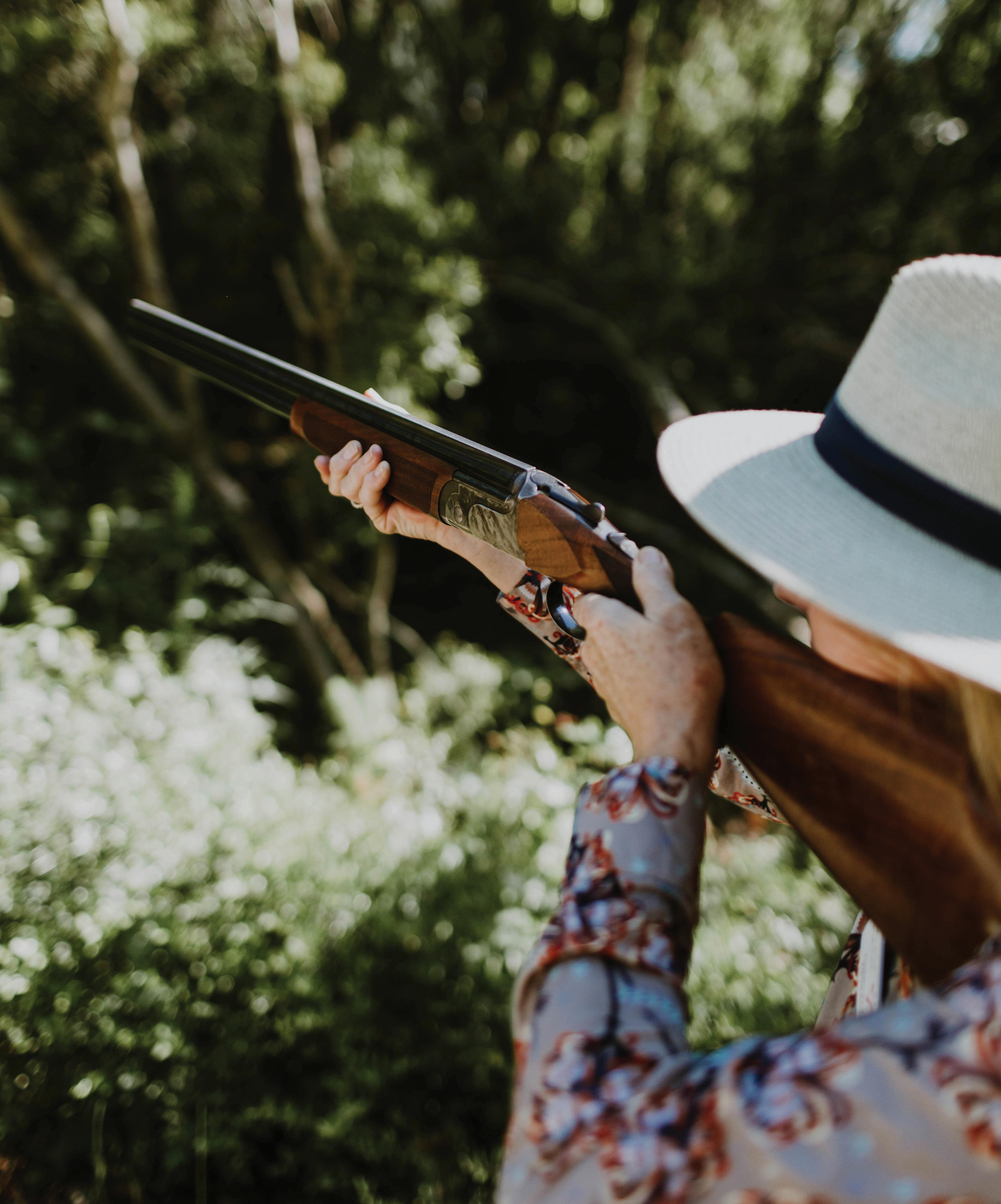
the
MARKSWOMEN
PHOTOGRAPHY by MELISSA TOMS
STORY by SANDY LANG
LEGENDS MAGAZINE 2017 NO 29 95
On a Tuesday morning at an old tomato farm on Johns Island, a group of women gather under the oaks. The eight-hundredacre Kiawah Island Sporting Club sits down an unpaved, sandy lane cut through the woods off Bohicket Road. Several women pull their hair into ponytails, and they all carry shotguns.
The women meet monthly on the private sporting clays course and call themselves the Charleston Annies, named for that tough-yet-feminine American sharpshooter from more than a century earlier, Annie Oakley. The women range in age from early thirties to seventies, and they spend one Tuesday a month following the looping course that winds through woods of live oak, cedar, and loblolly.
After checking in, everyone “coveys up” into groups of three or four to begin. Aspects of sporting clays are reminiscent of golf, with rental carts and a numbered course to follow. Typically, the women spend two or three hours shooting before lunchtime. Some use scorecards, some don’t. Some are lifelong hunters, some aren’t.
At the first stop, a mechanical trap throws the target in a bunny-bouncing pattern, and Ellie Howard gets a crack shot at the spinning disc of blaze-orange clay, sending shards and bits into the tree line beyond. Jane Perry McFadden shouts out, “You’ll be eating rabbit tonight!”
SCOTLAND TO JOHNS ISLAND
A chance meeting in Scotland spurred the creation of the Charleston Annies. Peggy Watkins of Charleston and Mary Huntz of Atlanta started talking while hunting grouse on the Scottish countryside two years ago. Huntz is one of the founders of the Annie Oakley Shooters, an Atlanta-based organization that has coordinated women’s clay shooting tournaments for nearly fifteen years.
Watkins, an artist, paints sporting scenes, hunting dogs and horses, and wildlife in landscape. Her art depicts places like the Kiawah Island Sporting Club, once a Sea Island plantation of indigo and cotton. So just being on a hunt or a clays course “helps me see from a hunter’s viewpoint,” Watkins says. “My senses are always heightened.”
From their conversation, Watkins was inspired to start a clay shooting series for Charleston-area women. She pitched her idea to the Kiawah Island Club. If Watkins would organize the group, it was a go. She agreed, put together a list of email addresses, and the Charleston Annies monthly outings began.
Since January, ten to twenty women have attended each month. Many are mothers or grandmothers who first fired a shotgun with their fathers or husbands. Some wear fedoras or caps, button-up shirts with collars, stretchy pants, and boots. Others wear athletic gear and vest pockets or satchels filled
96 LEGENDS MAGAZINE 2017 NO 29
“IT’S POWDER!” WITH THE BOOM OF A SHOTGUN AND THE CRACK OF A CLAY TARGET, A CONNECTION IS MADE TO A LOWCOUNTRY RITUAL.
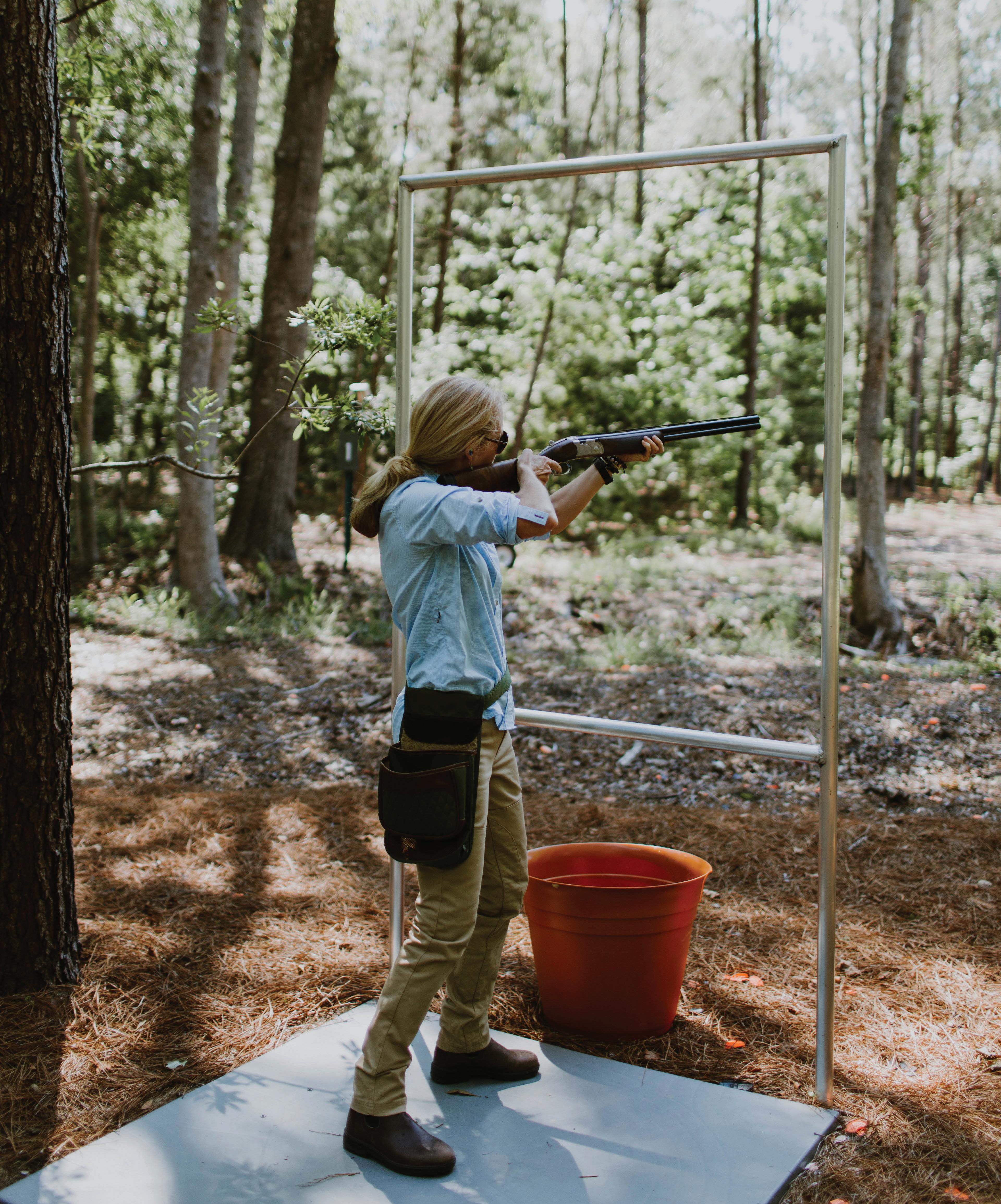



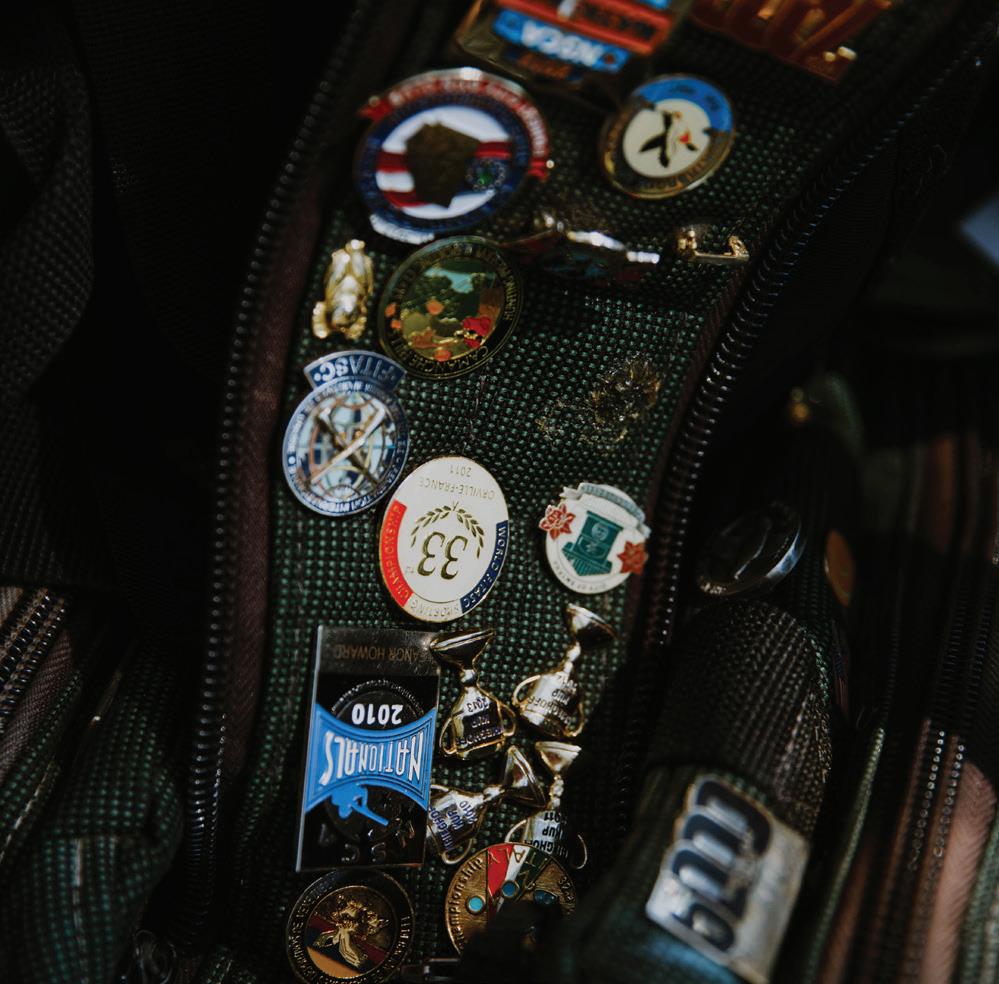


with shotgun shells. In this traditionally male sport, these women have as good or better aim as any man. “I find that women are a lot harder on themselves. They get frustrated and take it fairly seriously,” says Watkins. “Then with one lesson, they can go out and do really well.”
ROSES, DOVES, AND SNAKES
Virginia King, of Charleston, began shooting sports a couple of years ago, going to a private club in Ridgeville or down to her father’s property on Edisto. She started with a borrowed shotgun that didn’t fit her well, and “it mule-kicked me.”

Now, standing near a mass of yaupon holly along the course, she reveres her 20-gauge resting in the cart. Nicknamed “Rose,” this shotgun comes from the Syren line for women, by the Italian gun maker Caesar Guerini. And it’s engineered to shoot with far less kick. Suddenly, it’s King’s turn on the stand. “Pull!” she calls out as she aims and then, “Coming in hot!” after the shot from her gun smashes the clay whizzing past. The smell of gun smoke rises.

LEGENDS MAGAZINE 2017 NO 29 99
After a while, sporting club instructor Tony Starling drives up in a golf cart to say hello and to see how everyone’s doing. “Don’t shoot the snake,” he tells the group, explaining that he’d just seen a nonvenomous corn snake in the pathway between stations three and four on the course. These women aren’t the least bit alarmed. They know the copper-colored snake is searching for a lunch of rodents, not people.
Shotguns continue to boom and clay targets shatter, and the conversation ranges from gardens and guns to fashion. There’s lots of buzz about an upcoming trunk show of field gear at Circle Seven. McFadden’s daughter-in-law works at the recently opened downtown Charleston shop of the Mississippi outfitter. (Sloan McFadden wasn’t on the course that morning, but she’s an Annie too, and she cofounded the
Covey Charleston custom line of women’s outdoor clothing a few years ago.)
Other talk revolves around wildlife, conservation, and the outdoors. McFadden discusses dove hunts and the merits of planting native longleaf pines, another woman tells of seeing a manatee on the Kiawah River, and Watkins says she and her husband have bought a couple of horses.
Once they finish the course, most of the women linger a little longer in the shade of tall trees and then dig into boxed lunches on the Club’s back porch. Love bugs crawl onto shirts and necks and across tables. And the day is turning steamy and hot. From chairs and stools all around, they’re already talking about meeting again in the fall.
100 LEGENDS MAGAZINE 2017 NO 29
“PULL!” SHE CALLS OUT AS SHE AIMS AND THEN, “COMING IN HOT!” AFTER THE SHOT FROM HER GUN SMASHES THE CLAY WHIZZING PAST. THE SMELL OF GUN SMOKE RISES.


“REALLY, IT’S A SIMPLE IDEA,” WATKINS EXPLAINS. “WE’RE WOMEN SHOOTING WITH OTHER WOMEN.” AND IN THE LEGACY-RICH LOWCOUNTRY, THAT CERTAINLY SOUNDS NOVEL—AND LIKE ANOTHER SPORTING TRADITION IN THE MAKING.

LEGENDS MAGAZINE 2017 NO 29 103

MARCH 2017 | NEW YORK CITY

LEGENDS MAGAZINE 2017 NO 29 105

GARDEN & GUN IS TO KIAWAH ISLAND

There is something marvelous about two Southern greats coming together on a glitzy evening in the capital of the world. There has long been reciprocity between Charleston and New York City. So much of what drives the cultural explosion in Charleston has echoes of a certain cosmopolitan sophistication. The steady stream of New Yorkers decamping south contribute to the increasing worldliness of the Holy City.
The love goes both ways. Everyone is crushing on everything Southern and, after just ten years, Garden & Gun, a publication rooted deeply in the tradition of Southern living, has erupted with popularity. The magazine launched in 2007, the creation of two Charlestonians and one Rebecca Wesson Darwin. The magazine is “a metaphor for the South,” says Darwin. “Its land, the people, their lifestyle, and their heritage.” And for the last ten years, Garden & Gun has drawn its readers into this alluring metaphor, all smoky ballads and Spanish moss and barbeque. Similarly, Kiawah Island has been basking in the glow. Named America’s number one island by Condé Nast Traveler and one of the top ten islands in the world by Travel + Leisure , Kiawah is celebrating forty years as a community this year. The Island has made its name with pristine beaches, world-class golf, and luxury amenities and is a discrete haven for the most discerning buyers, a destination for an increasingly global audience. And so the twain meet for a celebration of these bright successes.
LEGENDS MAGAZINE 2017 NO 29 107
AN EVENING IN SPRING
The Beekman hotel is something to see. Its terracotta facade makes a statement on the otherwise staid block in downtown Manhattan. The lobby opens into an atrium that echoes ten stories skyward, an airy stack of balcony upon balcony. The building and address have an astounding history. Shakespeare’s Hamlet premiered in the original building in 1761. Another structure took its place in the mid-1800s and housed the Mercantile Library Association with members such as Emerson, Twain, and Thoreau. At the end of the nineteenth century, the third building was one of Manhattan’s first skyscrapers at ten stories. It is said that you could see Central Park from the roof. Five Beekman was named a historic landmark in 1998 and has been restored in recent years. Yet, despite the fine finishes and buzzy crowd, the building still feels like a relic from another New York. A statement of grandiosity and splendor, a house for greats.
Tonight is just that. Cocktail hour kicks off in the catacombs of the building. The crowd swells quickly and the bourbon punch takes hold. An orange neon Garden & Gun sign blazes amongst a wall of dripping greenery, and cameras flash as VIP after VIP walks through the doors. It’s a mash-up of well-known guests, Southerners and Yankees
alike. The Garden & Gun team is glowing at the center of it all, handshakes and hugs all around.
LOVAGE IS TO RABBIT
What a thrill to see chefs Mike Lata and Tom Colicchio standing side by side in pressed kitchen whites. They murmur quietly enough not to be overheard, but they seem to be discussing the menu—ingredients and process. Their gestures say as much. Occasionally they break off for a social visit with a friend or to check on the progress in the downstairs kitchen. They wear what one might call “game faces” as the cocktail hour winds to a close.
As guests are directed up the stairs to the second floor Temple Court Room, the two chefs disappear into the kitchen. Here, the magic begins to unfold. Lata is first, calmly directing a team of uniformed chefs and waitstaff. Each plate is perfect—a savory stew of Carolina white shrimp. One hundred plates walk out the door, and Lata steps back. Colicchio is up. He’s in home territory tonight— Colicchio has been consulting chef at the Kiawah Island Club for over a decade and The Beekman restaurant Temple Court is Colicchio’s latest masterwork in New York. He breaks concentration here and there to crack a joke.
108 LEGENDS MAGAZINE 2017 NO 29
The love goes both ways. Everyone is crushing on everything Southern and, after just ten years, Garden & Gun, a publication rooted deeply in the tradition of Southern living, ha s erupted with popularity.



PHOTOGRAPHY CREDIT: SEAN SIME
And so it goes. Like a beautiful dance, they co-execute a five-course dinner for the expectant guests.

Garden & Gun president and CEO Rebecca Darwin stands to welcome guests and speak about the magazine’s ten-year anniversary. There is a lot of love in the room for Darwin, and for cofounders Pierre Manigault and John Wilson. Then she passes the microphone to Kiawah partner Chris Randolph amidst thunderous applause. For Kiawah Island, the publication is icing on the proverbial cake, a lovely showcase of everything great about the Lowcountry and the South. “ Garden & Gun is more than just a magazine, and Kiawah is more than just development,” says Randolph. “Both of these brands share an unwavering commitment to being stewards for the arts, nature, design, and to creating an unparalleled experience.” Tonight is a celebration of great success, of Charleston and Kiawah, and their places in the cultural and culinary canon of today.
After the five glorious courses and glass over glass of wine, guests play musical chairs or two to a seat, catching up on industry news and connecting with friends of friends. It’s a diverse crowd, from the United States Ambassador to the United Nations to well-known Wall Street financiers to a haute couture milliner. And perhaps that’s what makes the event so dynamic.
After dinner, the partygoers traipse back downstairs, lingering in the atrium to chat with Lata and Colicchio—who both have the look of a relaxed maestro post ovation.

110 LEGENDS MAGAZINE 2017 NO 29
It was wonderful hosting both the Garden & Gun and Kiawah teams at my new restaurant Temple court to celebrate ten years of a special publication. Having a chance to play around with some Southern dishes was a lot of fun…the rabbit with pickled watermelon was a huge hit!
 - Tom Colicchio
- Tom Colicchio
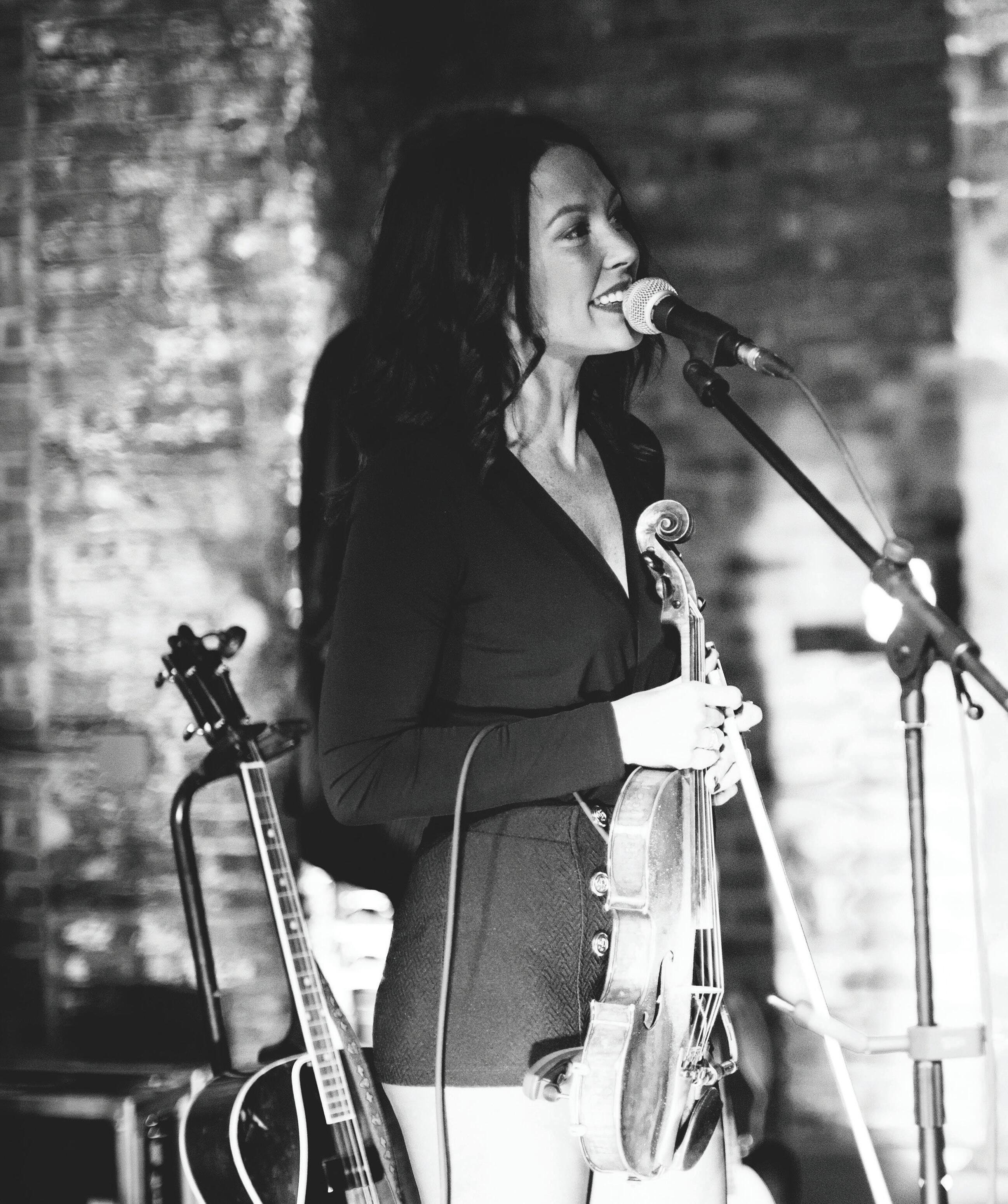
A LINE OF CHEERWINE
Amanda Shires and her band tune up in the Farnsworth Room. Club tables are clustered in front of the stage, and everyone takes a seat. Shires is another cultural emblem, a rising folk and country star. Her voice paired with the fiddle is mesmerizing, and the crowd quiets when she takes the microphone.
The music plays deep into the night. It’s time to go home when a cleanup crew arrives, and the neon sign in the foyer flickers off. Guests make their way out into the cold March air with a Cheerwine and a Krispy Kreme box tied up neatly with string. The South made a good showing in New York tonight. — H.W.

LEGENDS MAGAZINE 2017 NO 29 113


114 LEGENDS MAGAZINE 2017 NO 29 Enjoy part V of a series from the diary of Blanche Brumley. Read Part I in the Fall 2015 edition of L Magazine, Part II in the 2016 edition of Legends Magazine, Part III in the Fall 2016 edition of L Magazine, and Part IV in the Spring 2017 edition of Legends Magazine.





LEGENDS MAGAZINE 2017 NO 29 115



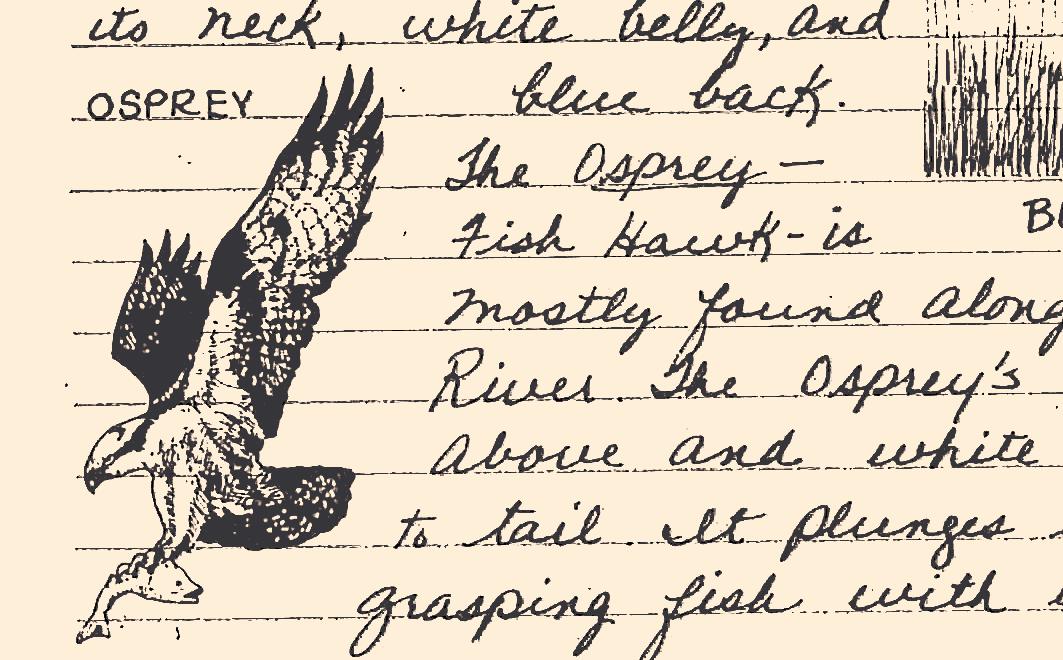
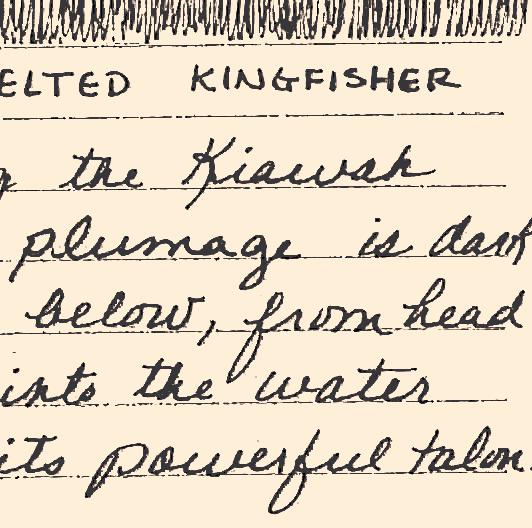
116 LEGENDS MAGAZINE 2017 NO 29





LEGENDS MAGAZINE 2017 NO 29 117




118 LEGENDS MAGAZINE 2017 NO 29



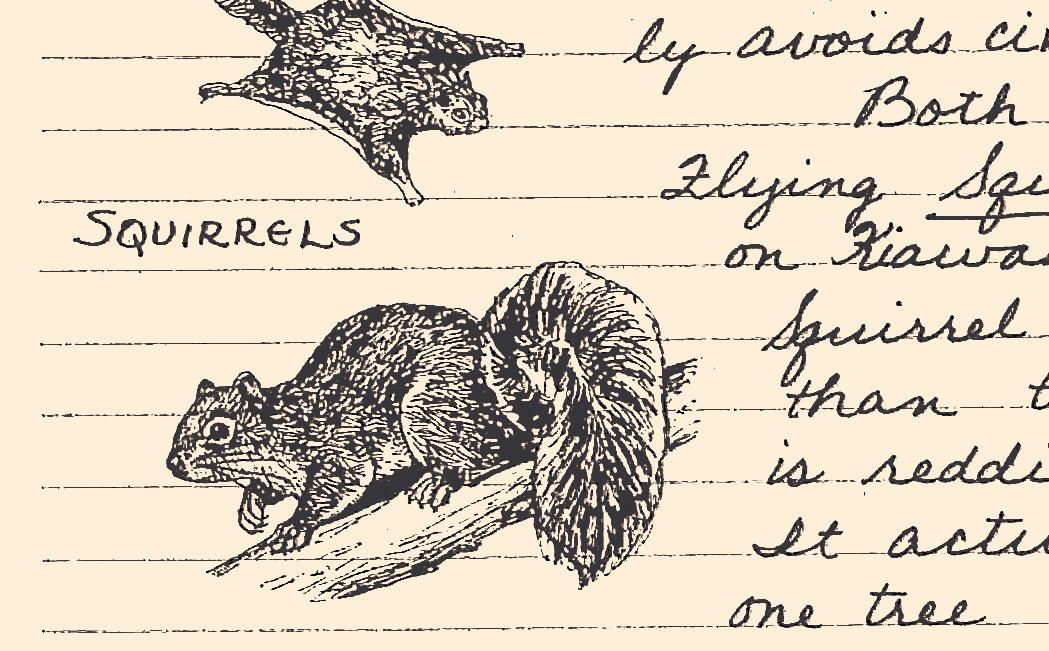
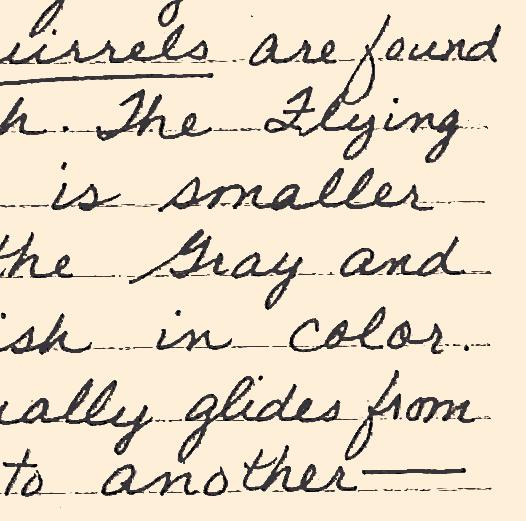
LEGENDS MAGAZINE 2017 NO 29 119





120 LEGENDS MAGAZINE 2017 NO 29





LEGENDS MAGAZINE 2017 NO 29 121





122 LEGENDS MAGAZINE 2017 NO 29
TO BE CONTINUED


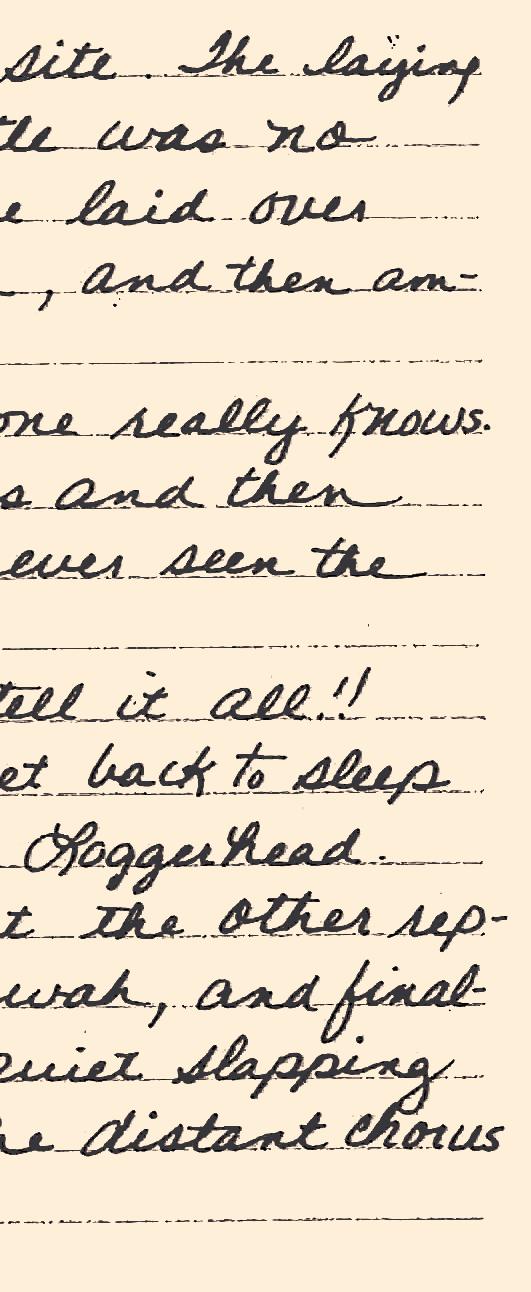

LEGENDS MAGAZINE 2017 NO 29 123

Obtain the Property Report required by Federal Law and read it before signing anything. No Federal or State agency has endorsed or judged the merits of value, if any, of this property. This is not intended to be an offer to sell nor a solicitation of offer to buy real estate in any jurisdiction where prohibited by law. This offer is made pursuant to the New York State Department of Law’s Simplified Procedure for Homeowners BECAUSE TOMORROW HAPPENS IN THE BLINK OF AN EYE

Associations with a De Minimis Cooperative Interest (CPS-7). The CPS-7 application (File No. HO16-0007) and related documents may be obtained from the sponsor. This project is registered with the State of New Jersey Department of Banking and Insurance Real Estate Commission. Obtain and read the NJ Public Offering Statement before signing anything (NJ Reg#16-15-0012).. AN AFFILIATE OF KIAWAH PARTNERS. TOP 5 PLACES TO BUY A SECOND HOME - Barrons, 2017 | KiawahIsland.com | 866.554.2924
THE ISLAND AND THE BEHOLDER
KIAWAH ISLAND THROUGH THE LENS OF RESIDENTS
126 LEGENDS MAGAZINE 2017 NO 29
I TOOK THE PHOTO IN FEBRUARY 2017, AROUND 7:00 P.M. I HAD MY CAMERA AND TRIPOD SET UP ON THE NINTH FAIRWAY OF THE OCEAN COURSE, THINKING THE MOON WOULD RISE IN A CERTAIN PART OF THE SKY. AFTER WAITING AND WAITING, I WALKED AROUND A GROVE OF TREES AND THERE, IN ALL ITS PINK GLORY, WAS THIS HUGE, FABULOUS FULL MOON! IT WAS TRULY MAGICAL. — KIMBALL KRAUS

LEGENDS MAGAZINE 2017 NO 29 127
WE WENT OUT TO CAPTAIN SAMS SPIT ON A FRIEND’S BOAT. I LOVE GOING OUT TO TRY TO FIND DOLPHINS STRAND FEEDING. OFTEN, WE DON’T SEE THAT MUCH ACTIVITY, BUT THIS DAY, THE DOLPHINS PUT ON QUITE A SHOW. IT ALL HAPPENED SO QUICKLY! — ANN GRIDLEY

128 LEGENDS MAGAZINE 2017 NO 29

LEGENDS MAGAZINE 2017 NO 29 129
I WENT OUT TO WILLET POND WITH MY CAMERA RIGHT AFTER A MAJOR RAINSTORM BECAUSE THE EVENING LIGHT WAS JUST GLORIOUS. I BEGAN SHOOTING HIM FROM A DISTANCE AND THEN MOVED CLOSER THINKING HE WOULD FLY AWAY, BUT ACTUALLY HE WAS QUITE DOCILE. — TINA SCHELL

130 LEGENDS MAGAZINE 2017 NO 29
THERE IS SOMETHING TO SEE ON KIAWAH EVERY DAY OF THE YEAR. IT IS THE EPITOME OF LIVING IN NATURE. I NEVER WORRY ABOUT HEADING OUT WITH MY CAMERA, BECAUSE I KNOW I WILL ALWAYS FIND SOMETHING TO SHOOT. — CHRISTINE DORRESTEIN

LEGENDS MAGAZINE 2017 NO 29 131
I TOOK THIS PHOTO IN MARCH 2016. THIS BOBCAT HAD BEEN A FREQUENT VISITOR TO OUR YARD. THIS PARTICULAR EVENING, SHE WAS SITTING IN THE MARSH GRASS BEHIND OUR HOUSE. I LOVE FALL ON KIAWAH. THE DAYS AND NIGHTS ARE COOLER AND THE ISLAND IS A LITTLE QUIETER AND THE ANIMALS MORE VISIBLE. — CHRISTINE DORRESTEIN

132 LEGENDS MAGAZINE 2017 NO 29
WE CHOSE KIAWAH SPECIFICALLY BECAUSE IT HAS FOUR TRUE SEASONS. IF I WERE FORCED TO CHOOSE A FAVORITE, I THINK IT WOULD HAVE TO BE SPRING BECAUSE OF THE BRIGHT GREEN OF THE MARSH WHEN IT FIRST COMES IN. THEN AGAIN, IT’S HARD TO ARGUE WITH AUTUMN WHEN THE SWEETGRASS IS IN BLOOM AND THE MARSH IS GOLDEN. THAT’S EXACTLY WHAT INSPIRES ME ABOUT KIAWAH. — TINA SCHELL

LEGENDS MAGAZINE 2017 NO 29 133
NATURAL BEAUTY IS EVERYWHERE. EVERY HOME, NO MATTER HOW NEW, LOOKS LIKE IT’S BEEN PART OF THE LANDSCAPE FOR YEARS. RESIDENTS RESPECT THE IMPORTANCE OF OUR FLORA AND FAUNA AND DO EVERYTHING POSSIBLE TO HELP IT THRIVE. IT’S A PHOTOGRAPHER’S DREAM. — TINA SCHELL

134 LEGENDS MAGAZINE 2017 NO 29

LEGENDS MAGAZINE 2017 NO 29 135

Insider’s Corner
We sat down with sales executives to discuss what they know best. Dale Mercer was head professional at Cassique for nearly ten years before joining the Kiawah Island Real Estate team. Here are a few tips for playing the Island’s toughest courses.
KL When did you come to Kiawah?
DM I discovered Kiawah when I played in a college golf tournament at Turtle Point twenty-five years ago. After school I wanted to play golf year round, so I moved to Charleston and lived on Kiawah for three years. I started at the Club in 2004 as an assistant at the River Course and really just worked my way up. I was the Club’s head pro at Cassique for almost ten years. My wife and I have three young kids, and we wanted to stay in Charleston, so we were looking for another avenue. I’ve been an agent for almost four years now.
KL Can’t seem to stay away?
DM I’ve always had a love for Kiawah. It really has been a great bridge for me to get into real estate. I know the island, I know the clientele, and I know the membership. So that part came naturally. I’m really excited to be doing it. I love coming to the island every day. I think once you get Kiawah in your blood, it’s hard to get out.
KL Tell me about a memorable moment.
DM I’ve witnessed some great golf events. I was here for the ’91 Ryder Cup. That was my first year. Since then I’ve been here for just about every major golf event.
KL As a golf professional, how does Kiawah rank?
DM The resort has five great golf courses. They’ve invested a lot of money in updating their facilities. The partners have also invested in the Club amenities. So Kiawah is world-class. You can play a different course every day of the week. That’s the beauty of Kiawah!
KL What’s your favorite course?
DM I’m biased. Cassique is probably my favorite. It’s unique in that it has a very linksy feel to it. When Tom Watson
designed it, he moved a lot of dirt and created some unique mounding so that it has a different feel than any other course on Kiawah. And really the scenery alone! There are some beautiful Lowcountry views.
KL What is your favorite hole?
DM Hole number fifteen is the most scenic of any course on the island. I’ve seen dolphins strand feeding in the river, just behind the putting green. The river kind of bends around the back of the hole. It’s just a beautiful setting—you’d be hard-pressed to find a prettier place as the sun is setting.
KL Any tips for fifteen?
DM Watson gives you two options on where to hit the ball: To the left you have plenty of bunkers to try to avoid, but [you have] a lot of room to the right where there are no bunkers. I believe playing to the right gives you a better angle into the green. You have a longer carry over the marsh to reach the fairway, but I don’t think it’s as far as it may appear. It’s maybe visually intimidating, but it’s really, I think, the better way to play the hole. Especially if you try to reach it in two.
KL What is your best golf advice?
DM I encourage people to stick to a routine, to do the same approach before every shot. So for me, I always stand behind the ball and visualize how I plan to hit it. If I see a high shot or a shot with a draw or a fade, I’ll visualize it. And then I’ll aim for a super small target in my line of flight. And that’s what I focus on.
LEGENDS MAGAZINE 2017 NO 29 137

Insider’s Corner
Jim Stuckey has been a sales executive at Kiawah Island Real Estate for twenty-five years. Previously a professional athlete, Jim tells us how his golf game has evolved over time and how Kiawah courses hold up on the world’s stage.
KL You’ve had quite a career as an athlete! Tell me about that.
JS I wanted to play professional football since I was seven years old. That was my goal. I was an all-around athlete. I swam for eleven years. I made it to the semifinals twice in high school tennis. We won two state championships in soccer and I was an all-state football player. I went to Clemson and ended up starting all four years. I still hold the record for the most starts ever by a defensive lineman. I played with the 49ers for seven years. I was fortunate enough to play on two great Super Bowl teams.
KL How did you end up back here?
JS I am a Southern boy at heart. My grandmother was born and raised in Charleston. And I used to spend June and the first two weeks of July with her before I’d go back to training camp. I got to know a lot of good people here.
KL What makes Kiawah so special?
JS I like the privacy. We kept it natural. So you have vast views. That’s what I like. And I like that people here come from everywhere else. So you get some unique people with unique perspectives. And they’re looking for a place where they can build memories with their friends and family. That’s what Kiawah is. And it feels quieter than other communities I’ve been to. And we’ve done everything first-class. We never spared any expense. And it is sophisticated elegance, but so understated.
KL I understand you’re a big golfer?
JS I really didn’t pick it up until I came back here. It’s the hardest game I’ve ever played. I’m still a decent athlete. I thought that hitting this little white ball would be so easy, but I’ve never worked harder—other than football—
at trying to get better at something. I think the courses here are fantastic. I travel all over the country for golf; I play at some of the finest courses this country has to offer, public and private. The golf here is unsurpassed, the quality, the difficulty. If you’re a really good player, the two Club courses can be demanding, but there are tees that you can play to make it easier. And if you spray it around a little bit like I do, you can play Cassique and still possibly find it.
KL What’s your favorite course?
JS For the difficulty, I love The River Course. I think it’s a great test of golf—vistas, views, the pure essence of nature. But I’ll take Cassique. You can feel something different each and every day. When I could move better, I loved being one of the first guys out and walking when the dunes were wet. Now I’m like an old Cat diesel engine, and it takes me a while to warm up, so my favorite tee time is one o’clock.
KL What’s your favorite hole on the island?
JS I really enjoy number seventeen at The River Course. I’ve always liked the different pin placement. I like how you hit from the blue or the gold tees, and the green is elongated instead of just some big round thing. You’ve got to have some talent to get the ball where you want it to be. The winds are ever changing. And I love the par five, hole fifteen at Cassique. I love the vastness and the quietness you have walking up to that hole.
KL Where’s your favorite place on the island?
JS My favorite place to be is in the late afternoon with dear friends in the Gazebo at the Beach Club having a margarita or a piña colada!
LEGENDS MAGAZINE 2017 NO 29 139

NO. 17 TEE
COUGAR POINT REFINED
After a year-long collaboration between Gary Player Design Company and Kiawah Island Golf Resort, the freshly renovated Cougar Point invites golfers to tee it up in early October.
STORY by BRYAN HUNTER
LEGENDS MAGAZINE 2017 NO 29 141
Player’s original vision for Cougar Point was to bring golfers pleasure by creating a course with enough intrigue to entice them to play it time and time again.
The great Gary Player-designed Cougar Point is a thinking player’s golf course. Its challenges often hide themselves beneath the course’s many nuances. The unwitting golfer who becomes overly enamored by the course’s stunning vistas can be shocked back into reality when his ball finds its way into a bit of trouble. Generous landing areas can lull unwary golfers into a sense of complacency, only to suddenly leave them with a head-scratcher of a shot. Yet its approachability will tempt golfers to take a few high-risk/high-reward shots that can lead either to exuberance or feeling jilted.
A notable example is the dominant live oak looming midway down the right side of the dogleg right par-four number. The proud tree practically taunts the confident golfer to cut off the dogleg by driving the ball over the oak’s sweeping crown—a manageable 173 yards—onto the landing area beyond, leaving a routine seventy- to one-hundred-yard pitch onto the green for a potential birdie. But miscalculate club selection or wind direction and you wind up in the gaping maw of the gnarly bunker lurking just on the opposite side of the tree, leaving you in the sand one hundred twenty yards from the pin.
Golfers who have had the pleasure and privilege of experiencing the courtly dance that is Cougar Point will be delighted to find that the course, closed since last November for renovation, has lost none of the virtues and charms bestowed upon it by Mr. Player. But they will find from the
first tee to the final putt that what Cougar Point has benefitted from can be described better as refinement than renovation. Some work restored the course to Player’s initial design. Most notably, all greens were resized to their original dimensions. A few changes resulted from a decade of retrospection, such as the decision to remove a bunker directly beneath a tree, threatening to penalize an errant tee shot with double jeopardy.
From a macro level, though, it’s fair to claim that not a single inch of the course was left untouched. Cougar Point is the fifth and final course that Kiawah Island Golf Resort regrassed with Platinum Paspalum—the hearty, salt-tolerant turfgrass, first tested on The Ocean Course, that has taken to our coastal environment like steel to a magnet. Sped on its way by our unusually rainy summer, the grass has thrived, and the first players to tee off should marvel at the condition of the turf from tee box, to fairway, to landing area, to green, as the grass has filled in remarkably well. Even the fine details, such as the collars of bunkers, were planted with Paspalum. As hard as it is to imagine their need after this summer’s rain, all irrigation systems were upgraded, ensuring optimal hydration to keep the turf in top condition throughout the year and despite all the vagaries of Lowcountry weather.
Some infrastructure work benefits the integrity and overall appearance of the course. The Resort replaced bulkheads that support steep banks along impoundments, and they elevated
142 LEGENDS MAGAZINE 2017 NO 29

LEGENDS MAGAZINE 2017 NO 29 143 NO. 11 GREEN
greens and tees. Directly benefitting everyone’s long game, all tee boxes have been laser leveled. A halfway house that has been closed for years will reopen, offering players mid-round refreshment. One thing that couldn’t be improved upon: the sweeping view of the marsh and Kiawah River that comes to full crescendo on the par-three number six. But again, enjoy it but don’t be beguiled by it, as the shot across a finger of marsh to the smallish green can be trickier than a first glance reveals, and the hole’s left-side full exposure means wind comes into play. The hole is a great microcosmic illustration of Player’s philosophic approach to the course’s design (not to mention one of the loveliest holes on the island).
Player’s original vision for Cougar Point was to bring golfers pleasure by creating a course with enough intrigue to entice them to play it time and time again. He also wanted to create a course in keeping with the spirit of Kiawah Island, which he holds in high reverence. In an interview, he observed of Kiawah and Cougar Point’s place within it, “The outside of nature is good for the inside of a human being.” Happily, with this new refinement, his vision for Cougar Point and its place within Kiawah Island has not only been preserved but also enhanced and entrenched.

144 LEGENDS MAGAZINE 2017 NO 29
11 BUNKERS
NO.



.. • kiawahgolf.com Win THE TRIP OF A LIFETIME! Enter Today at NaturallyKiawah.com ALWAYS REFINING OUR GAME It Comes Naturally. 5 GOLF COURSES 3 POOL COMPLEXES SPA 10-MILE BEACH TENNIS VILLAS THE SANCTUARY Proud Host of the 2021 PGA Championship
Pete Dye reimagines the iconic Ocean Course in preparation for the PGA Championship
Oak Point undergoes a redesign to become a shotmaker’s dream
Tom Fazio leads an extensive renovation of Osprey Point
Jack Nicklaus Design reworks Turtle Point, which reopens to rave reviews
Cougar Point gets a remodel by Gary Player Design to heighten the experience

AT THE SITE OF THE NEW CLINIC BUILDING
DR. CHARLTON DAVIS, BRENDA FALLS, AND DR. JAMES HAYES
STAND
BARRIER ISLANDS
Free Medical Clinic

LEGENDS MAGAZINE 2017 NO 29 147 GOOD WORKS
Drs. Arthur Booth and Charlie Davis envisioned a free clinical model of low-cost, volunteer-driven health care over twenty years ago. And so they opened the doors to Barrier Islands Free Medical Clinic (BIFMC) in 2008 in order to understand and serve the health and wellness needs of the uninsured, low-income adults who live or work on Johns, Wadmalaw, and James Islands.
“In our community, we have a lot of hardworking people who are uninsured,” says Brenda Falls, Clinic director. “They have to make the difficult choice between going to the doctor and putting food on the table.”
With the inception of BIFMC, Booth and Davis hoped their model would help maintain healthier workers and create a stronger community. And they succeeded. Over four thousand Lowcountry patients have been served since 2008, with more than three hundred and fifty patients walking through the Clinic doors each month.
With 122 volunteer doctors, nurses, and support staff committed to the mission, BIFMC continues to expand and attract talented volunteer medical staff. “Our volunteers love being able to practice medicine the way they went to school to practice—to be here for the patients without all the restrictions of Medicare, Medicaid billing, and insurance issues,” says Falls.
Funded by the generosity of individual donors, grants from private foundations, donations from community and
religious organizations, and local fundraising efforts, the Clinic has received $1.3 million in in-kind services.
The Clinic provides a medical home and continuing primary health care to uninsured adults who live at or below 200 percent of the Federal poverty level. So often these communities are ravaged by chronic diseases such as diabetes, hypertension, coronary disease, and depression. “Prior to the Clinic” says Falls, “the only choice that our patients had was to go to he emergency room.” Left untreated, these diseases can result in expensive emergency room visits and inpatient, uncompensated care in local hospitals.
The clinic has 501(c)(3) certification, six exam rooms, medical equipment, thirty-four physicians, twenty registered nurses, fifteen interpreters, and thirty office staff already trained and in place—all volunteers—plus they run a weekly on-site orthopedic clinic, a biweekly dermatology clinic, twice weekly psychiatry clinic, and monthly ophthalmology clinic. BIFMC has over nineteen subspecialists in the community who will treat patients at no cost. And it has established programs to treat patients with high-risk diseases, to promote women’s breast health, and to assist patients with high-cost prescription drugs.
In spring of 2018, BIFMC will open the doors of a brand-new seven-exam room medical facility. bifmc.org
148 LEGENDS MAGAZINE 2017 NO 29 GOOD WORKS
Rarely in my career have I had the privilege of getting up each morning knowing that what I do would make a positive difference in someone’s life.
— Richard Ulmer, Medical Director







GOOD WORKS






POOLSIDE PARTY POOLSIDE PARTY TOM’S TAPAS AND MUSIC GOLF KITCHEN EVENT FISHING TOURNAMENT POOLSIDE PARTY
KIAWAH
Throughout the year, Kiawah hosts dozens of soirees, outings, and activities. It’s been a fantastic Spring and Summer!

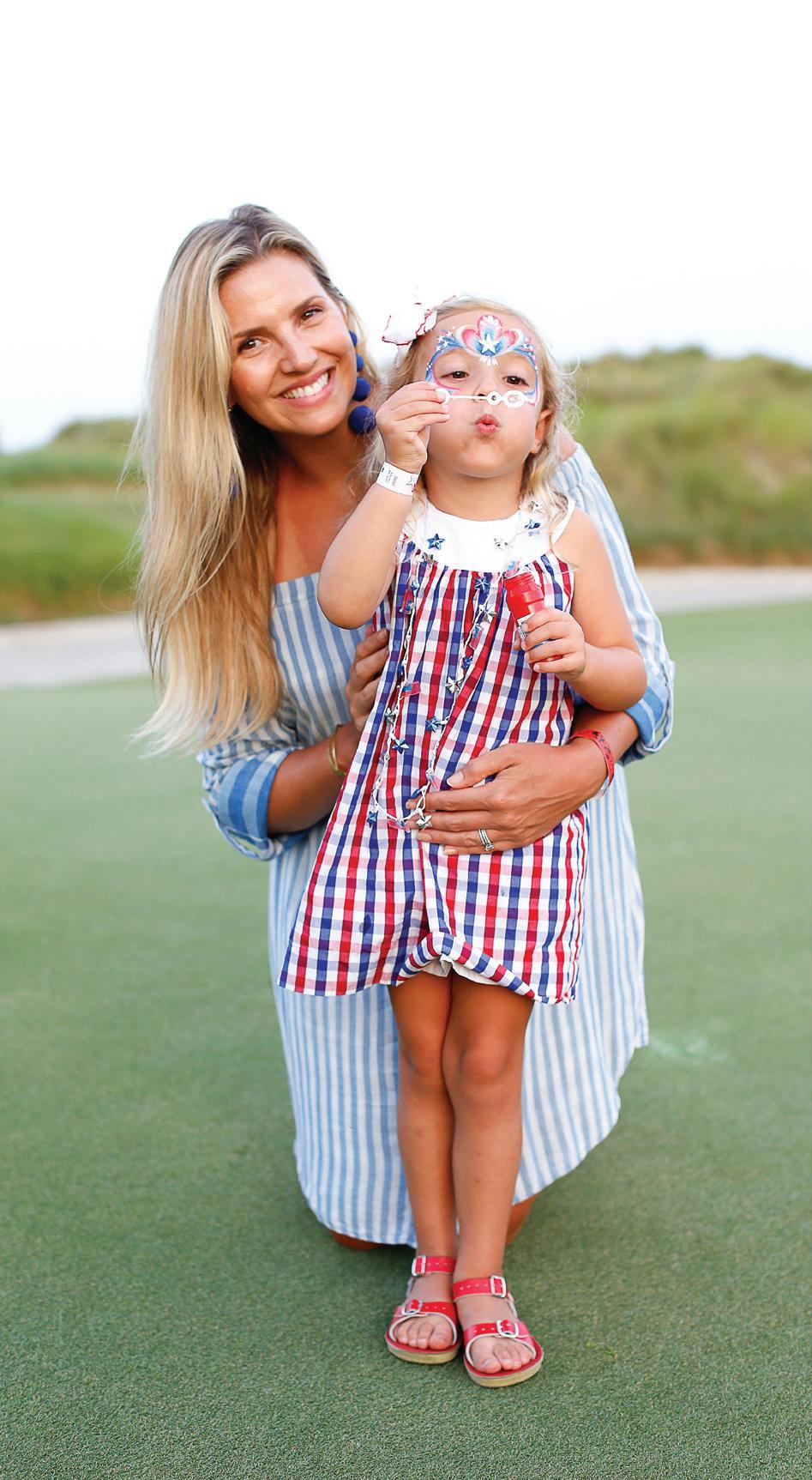




ON AND ABOUT
THIRD OF JULY EXTRAVAGANZA TOM’S TAPAS AND MUSIC FOURTH OF JULY LOWCOUNTRY GRILL
WILANDER ON WHEELS THIRD OF JULY EXTRAVAGANZA
EASTER AT THE RIVER COURSE
PHOTOGRAPHY by CHARLOTTE ZACHARKIW







THIRD OF JULY EXTRAVAGANZA GARDEN & GUN TEN-YEAR ANNIVERSARY THIRD OF JULY EXTRAVAGANZA EASTER CARNIVAL TOM’S TAPAS AND MUSIC FOURTH OF JULY LOWCOUNTRY GRILL THIRD OF JULY EXTRAVAGANZA







FOODIE FUN FISHING TOURNAMENT
THIRD OF JULY EXTRAVAGANZA
THIRD OF JULY EXTRAVAGANZA
POOLSIDE PARTY THIRD OF JULY EXTRAVAGANZA
GARDEN & GUN TEN-YEAR ANNIVERSARY






THIRD OF JULY EXTRAVAGANZA
FOODIE FUN THIRD OF JULY EXTRAVAGANZA
POOLSIDE PARTY EASTER CARNIVAL THIRD OF JULY EXTRAVAGANZA






TOM’S TAPAS AND MUSIC POOLSIDE PARTY THIRD OF JULY EXTRAVAGANZA WILANDER ON WHEELS POOLSIDE PARTY THIRD OF JULY EXTRAVAGANZA





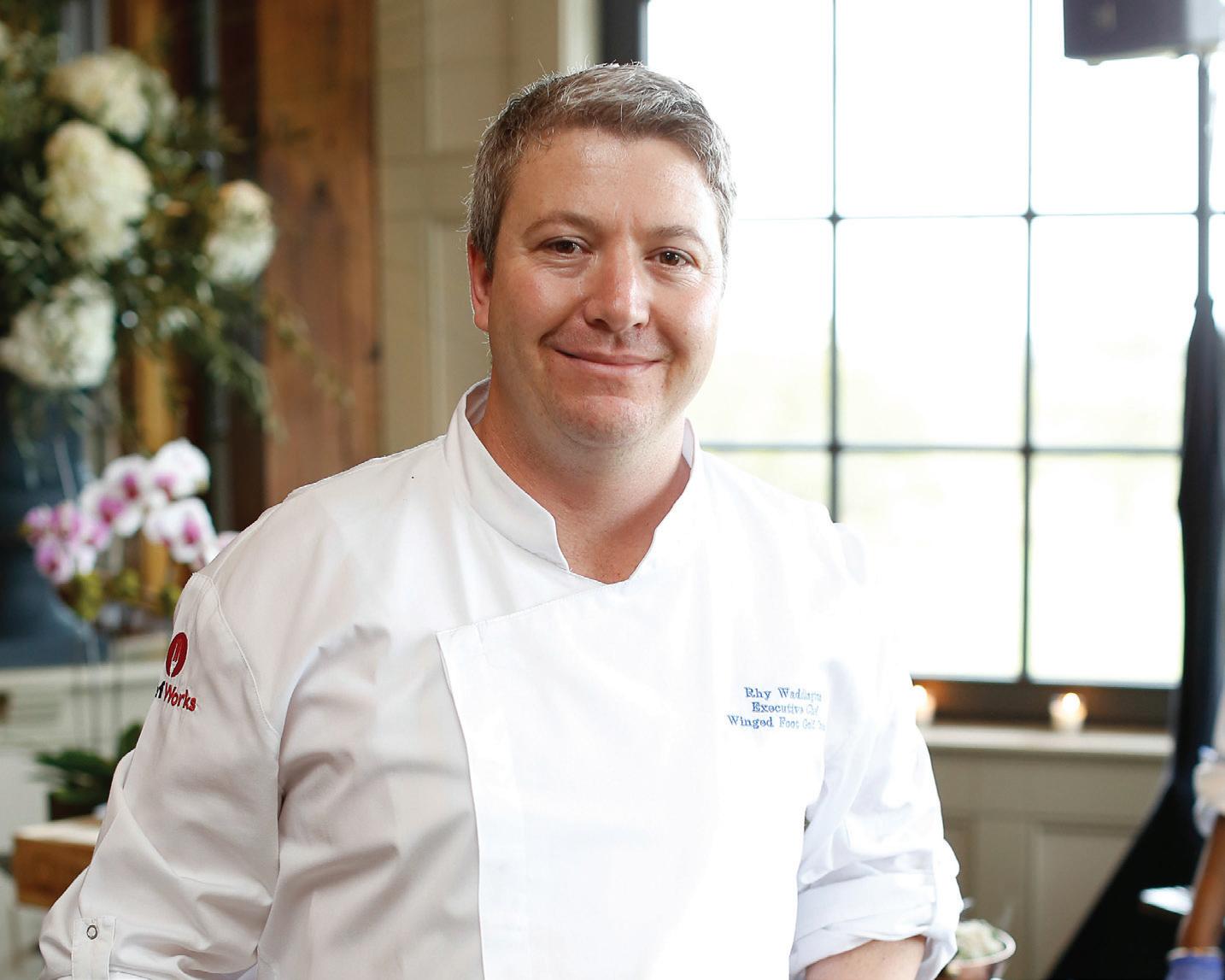

GOKIAWAH THIRD OF JULY EXTRAVAGANZA EASTER CARNIVAL GOKIAWAH
& GUN TEN-YEAR ANNIVERSARY
KITCHEN EVENT
TAPAS AND MUSIC
GARDEN
GOLF
TOM’S







POOLSIDE PARTY EASTER CARNIVAL POOLSIDE PARTY FOURTH OF JULY LOWCOUNTRY GRILL WILANDER ON WHEELS KID ZONE FOURTH OF JULY LOWCOUNTRY GRILL


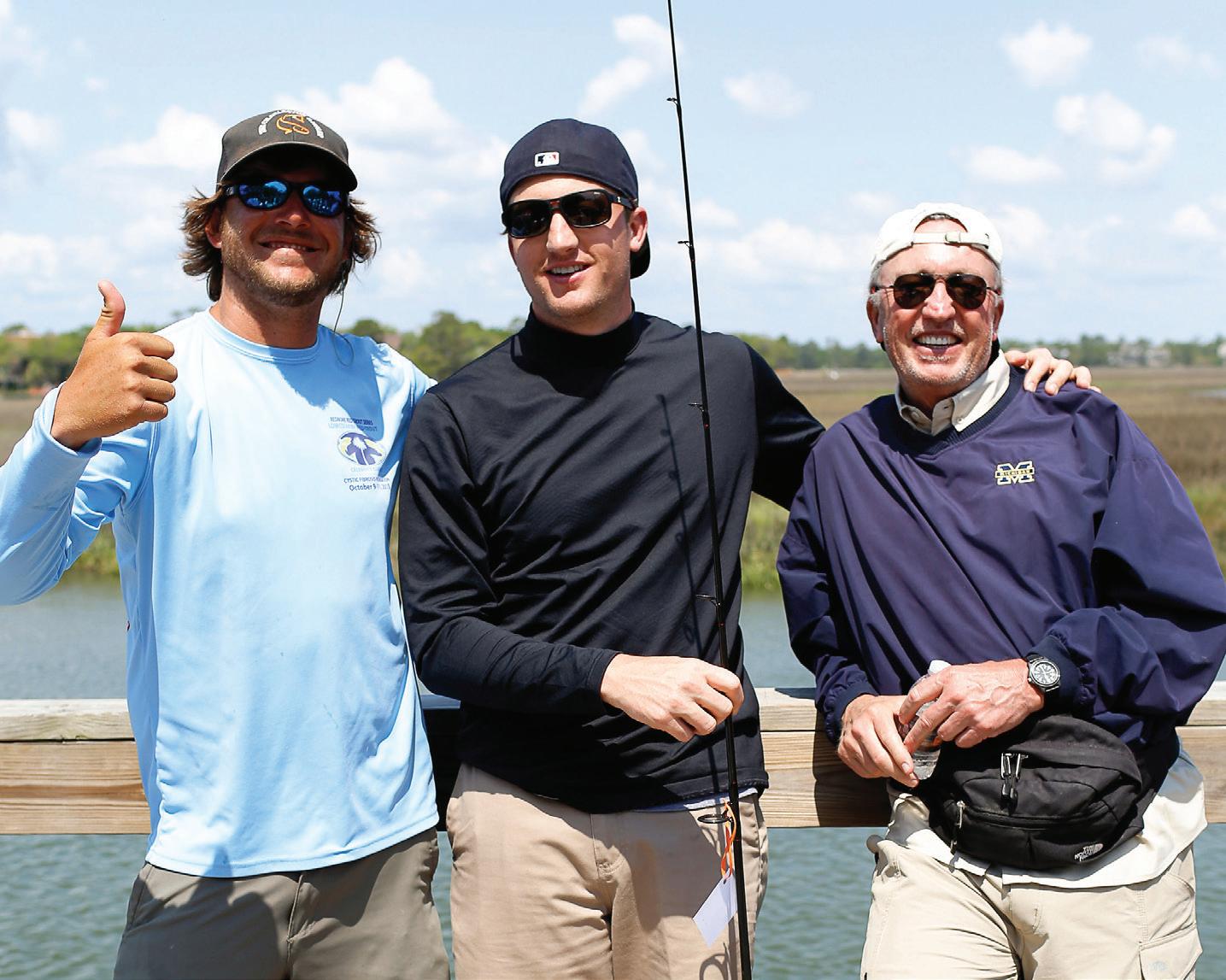



FISHING TOURNAMENT POOLSIDE PARTY THIRD OF JULY EXTRAVAGANZA BINGO NIGHT TOMS TAPAS AND MUSIC FOURTH OF JULY LOWCOUNTRY GRILL
Snow on the Beach
An unusual winter storm hit Kiawah Island in January, 2014.
I recall that day vividly. Looking back at my photos, I see crystalized sea shells, glistening frozen trees, and the snowy boardwalk. Icicles hung from the window sills. A bobcat sauntered about and deer played on the snowy beach.

LEGENDS MAGAZINE 2017 NO 29 159
END
NOTES
— Diane Supple
PHOTO COURTESY OF DIANE SUPPLE
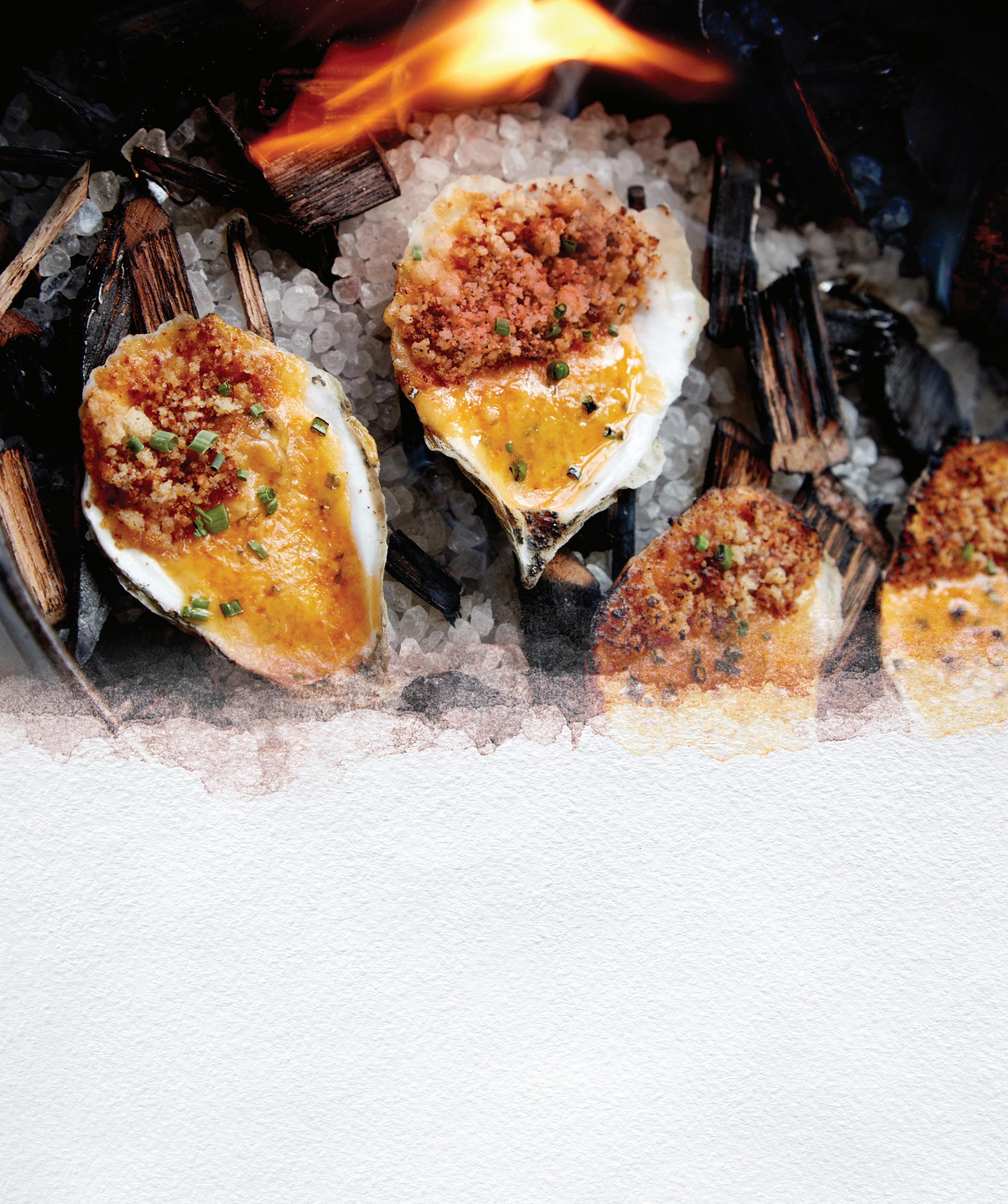


.. • kiawahdining.com Win THE TRIP OF A LIFETIME! Enter Today at NaturallyKiawah.com PURELY BLISSFUL INDULGENCE It Comes Naturally. 5 GOLF COURSES 3 POOL COMPLEXES SPA 10-MILE BEACH TENNIS VILLAS THE SANCTUARY Proud Host of the 2021 PGA Championship





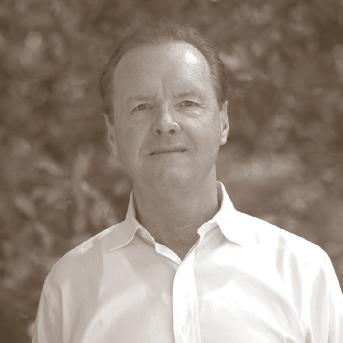












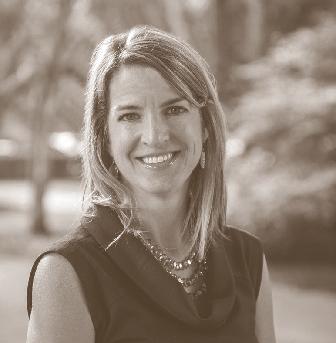
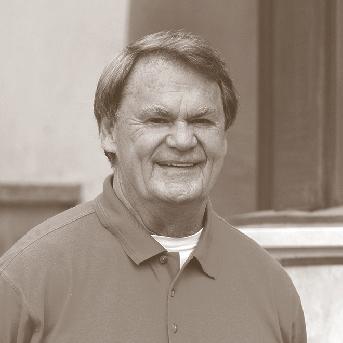




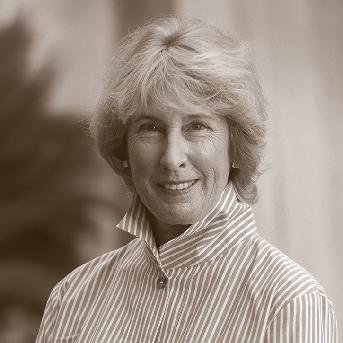
Obtain the Property Report required by Federal Law and read it before signing anything. No Federal or State agency has endorsed or judged the merits of value, if any, of this property. This is not intended to be an offer to sell nor a solicitation of offer to buy real estate in any jurisdiction where prohibited by law. This offer is made pursuant to the New York State Department of Law’s Simplified Procedure for Homeowners Associations with a De Minimis Cooperative Interest (CPS7). The CPS-7 application (File No. HO16-0007) and related documents may be obtained from the sponsor. This project is registered with the State of New Jersey Department of Banking and Insurance Real Estate Commission. Obtain and read the NJ Public Offering Statement before signing anything (NJ Reg#16-15-0012). AN AFFILIATE OF KIAWAH PARTNERS. TOP 5 PLACES TO BUY A SECOND HOME - Barrons, 2017 experience access results Kiawah Island Real Estate Sales Team
to
EXCLUSIVELY FOCUSED ON KIAWAH ISLAND SALES FOR OVER 40 YEARS FOUR OFFICE LOCATIONS OPEN DAILY MAIN GATE: 1 Kiawah Island Parkway FRESHFIELDS VILLAGE: 390 Freshfields Drive SANCTUARY: 1 Sanctuary Beach Drive DOWNTOWN CHARLESTON: 12 Queen Street 866.554.2924 | kiawahisland.com
(left
right): Cynthia Noble, Jim Stuckey, Ellen Walkley, Lewis Driskell, Tricia Flanagan, Bob Rummel, Colt Robinson, Barbera Johnson, Kathie Barrett, Trent McChesney, Doug Lee, Jeff Forte, Kelly Henry, Earl Carrara, Gordon Hillock, Danielle Whitson, Rocky Stelling, Thomas Davis, Marla Rea, Henry Cleveland, Lisa Berl, Don Rutledge, Jan Eubank, Patrick Brumfield, and Dale Mercer.
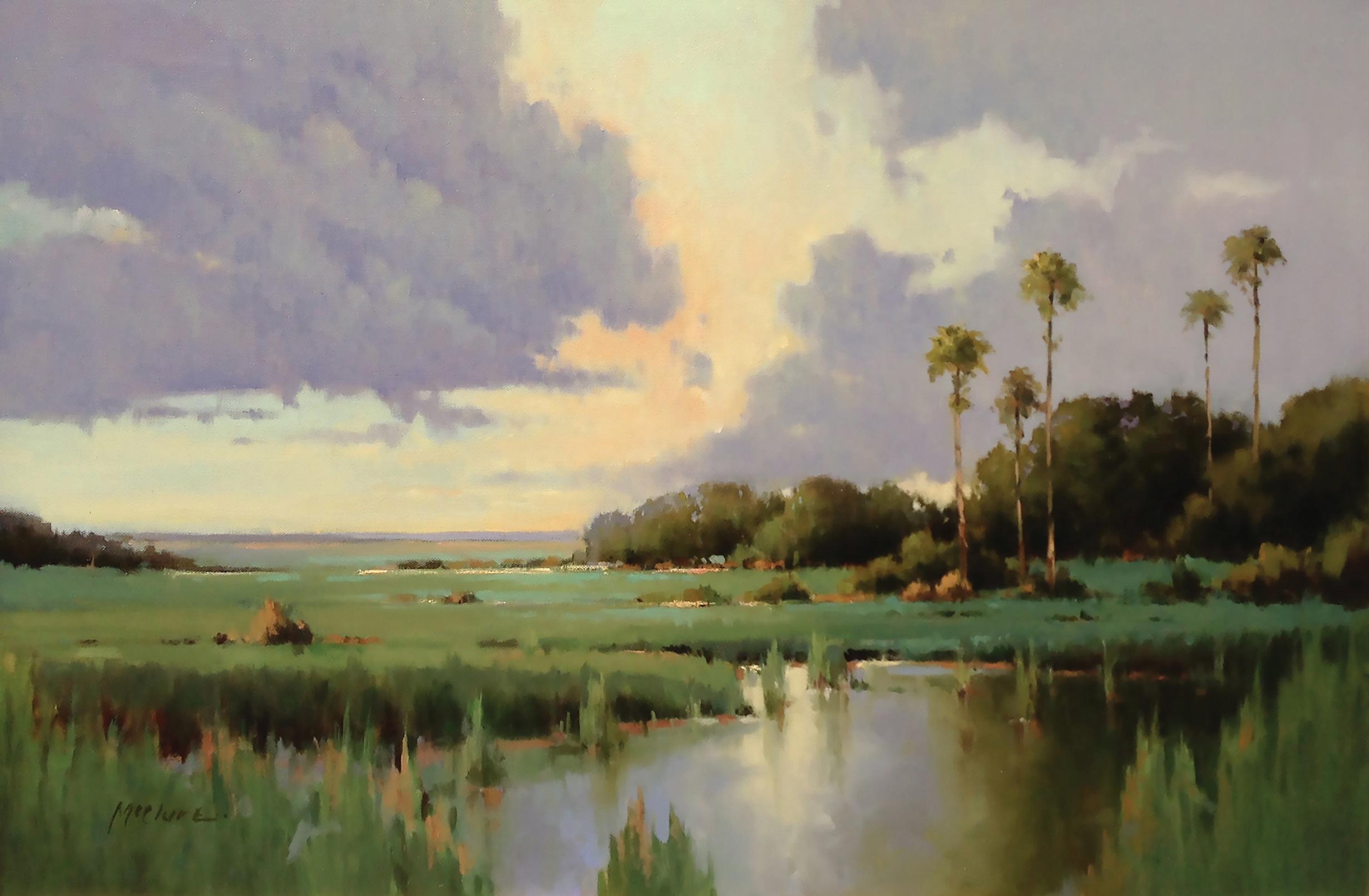 THE LOWCOUNTRY SPEAKS SOFTLY | 20” X 24”, OIL ON LINEN | RICK M c CLURE
THE LOWCOUNTRY SPEAKS SOFTLY | 20” X 24”, OIL ON LINEN | RICK M c CLURE

























































 From BOSTON, MASSACHUSETTS LYNNE & STEVE SAGER Property Owners
From BOSTON, MASSACHUSETTS LYNNE & STEVE SAGER Property Owners




 LANIER, ALEXANDRA & LIZZY
LANIER, ALEXANDRA & LIZZY








 by HAILEY WIST
by HAILEY WIST










 PHOTOGRAPHY by JOEL CALDWELL STORY by HAILEY WIST
PHOTOGRAPHY by JOEL CALDWELL STORY by HAILEY WIST













 PHOTOGRAPHY by OLIVIA RAE JAMES and MELISSA TOMS
STORY by STEPHANIE HUNT
PHOTOGRAPHY by OLIVIA RAE JAMES and MELISSA TOMS
STORY by STEPHANIE HUNT











 PHOTOGRAPH: FRANCES BENJAMIN JOHNSTON, 1938
PHOTOGRAPH: FRANCES BENJAMIN JOHNSTON, 1938
 WRITTEN by CHRISTINA RAE BUTLER
WRITTEN by CHRISTINA RAE BUTLER

















 Pamela
Pamela



























 - Tom Colicchio
- Tom Colicchio

































































































































































 THE LOWCOUNTRY SPEAKS SOFTLY | 20” X 24”, OIL ON LINEN | RICK M c CLURE
THE LOWCOUNTRY SPEAKS SOFTLY | 20” X 24”, OIL ON LINEN | RICK M c CLURE